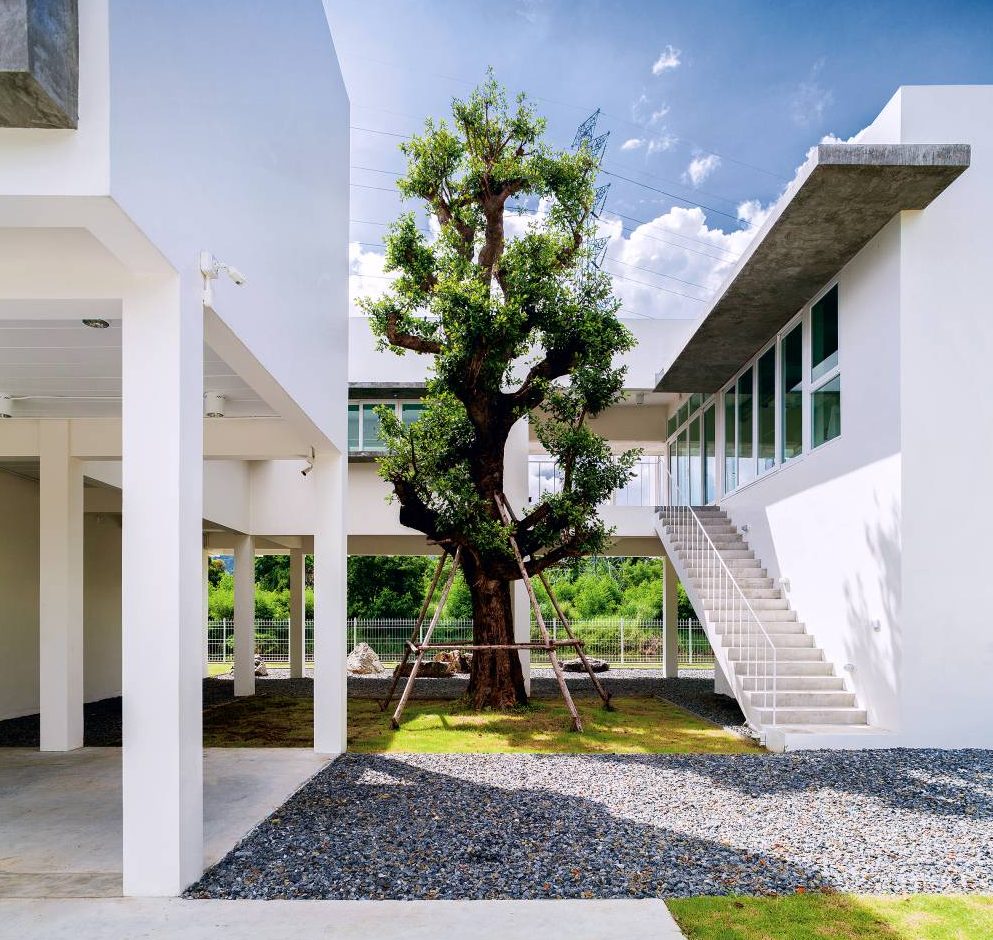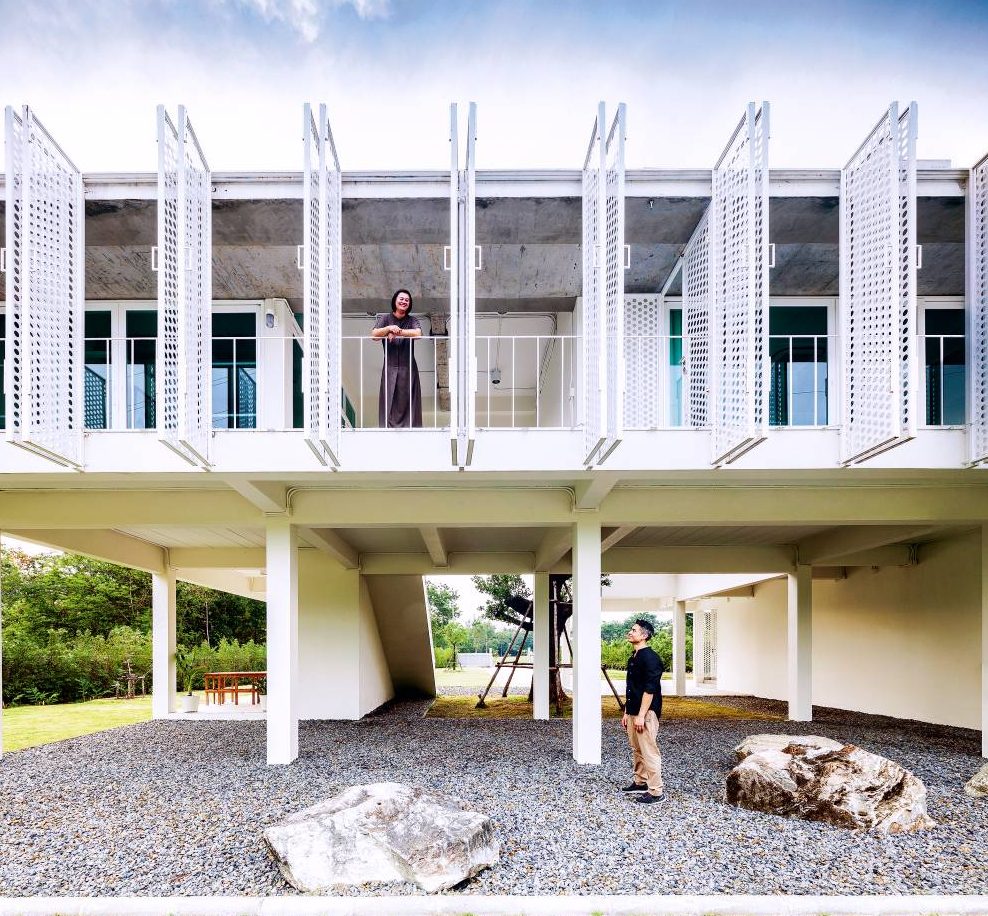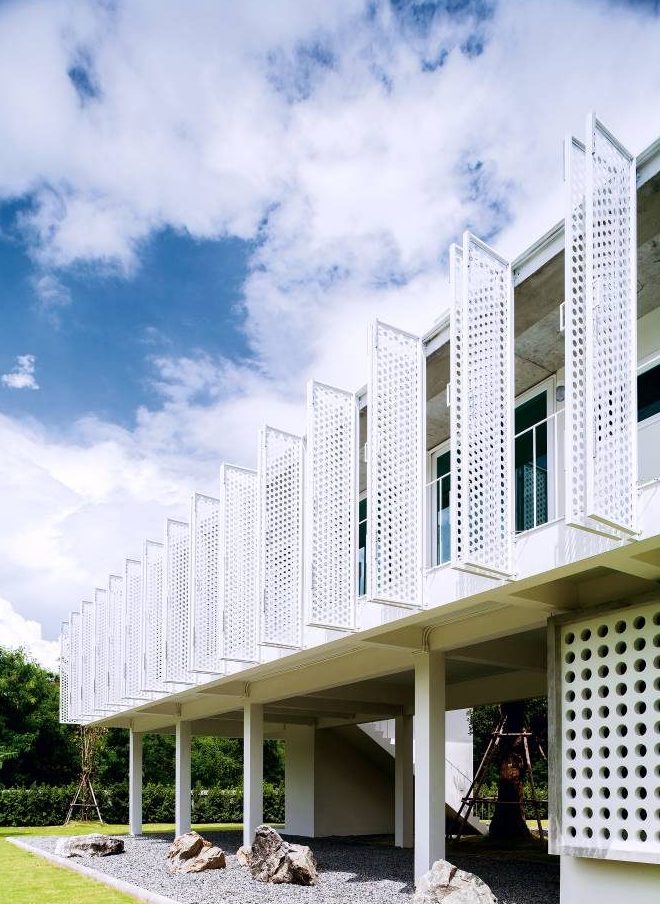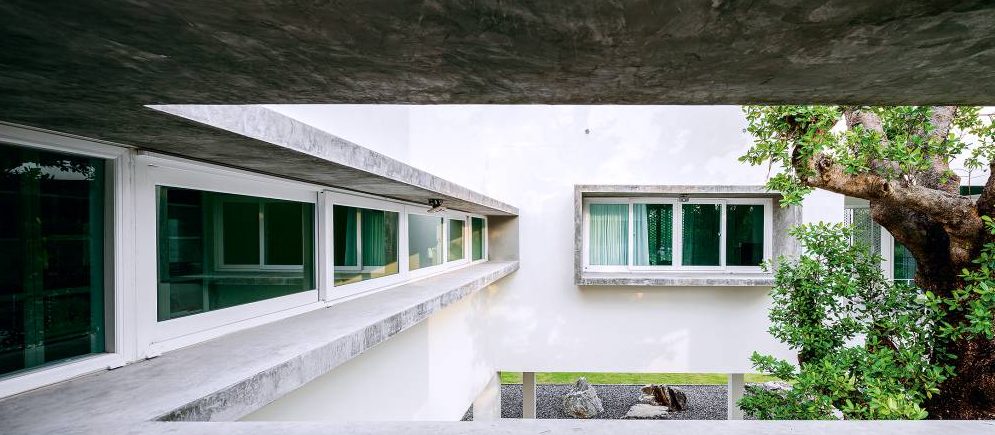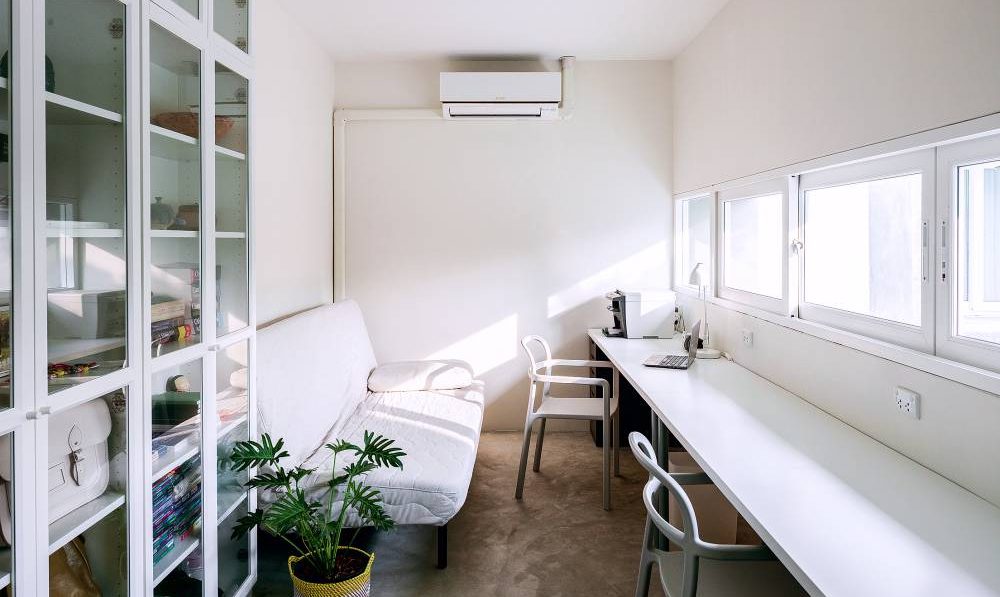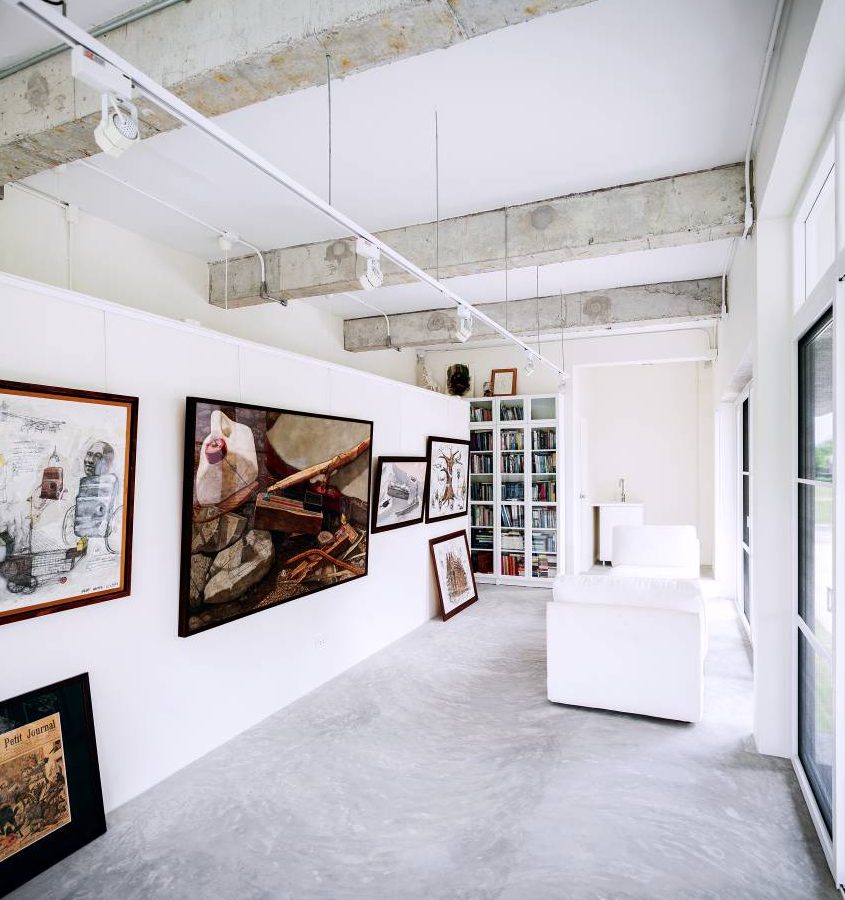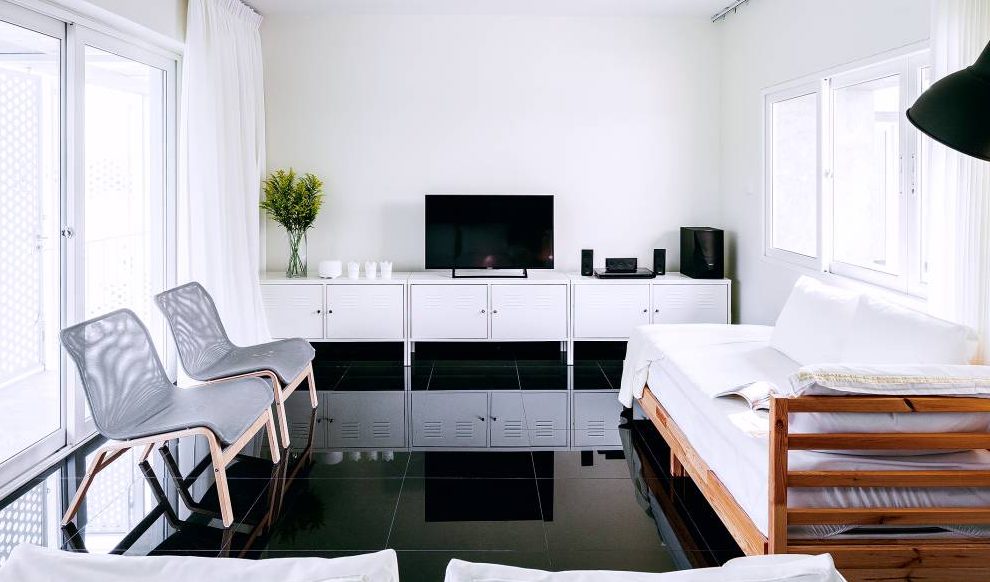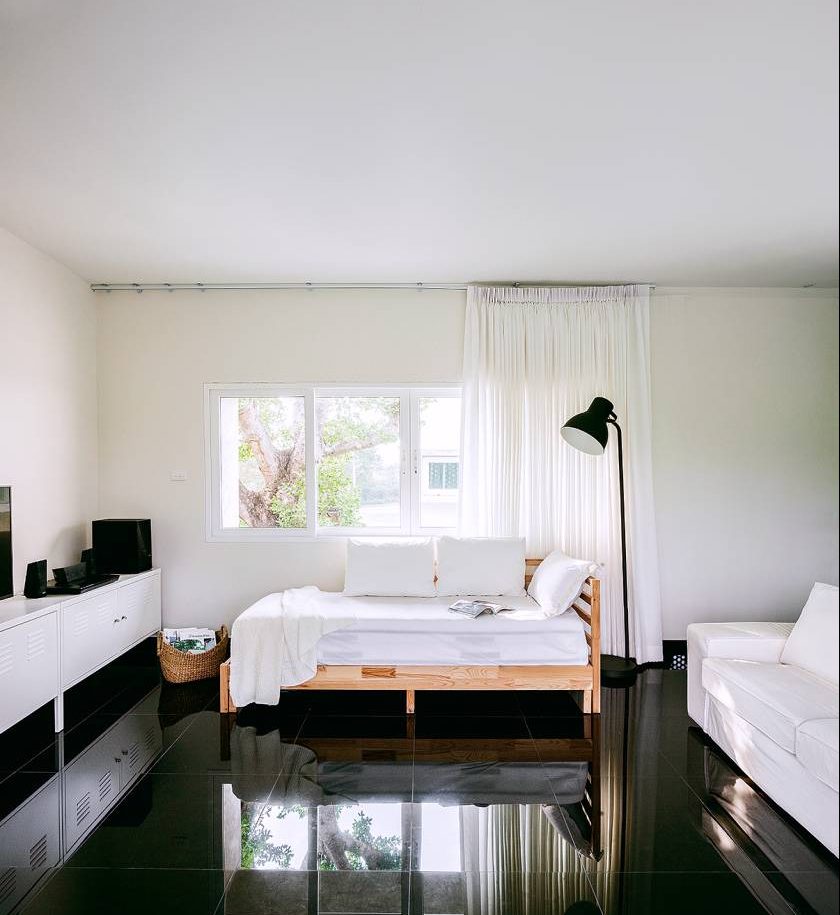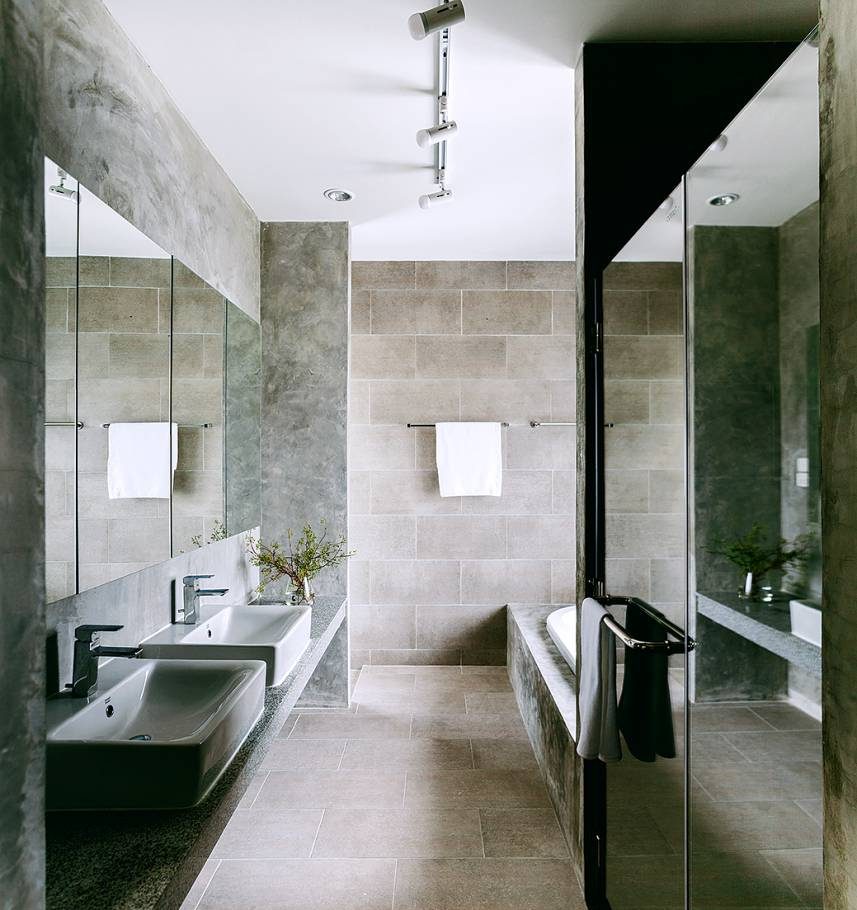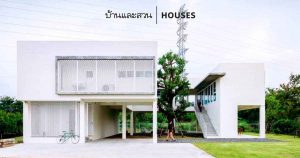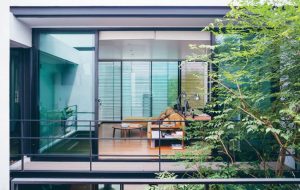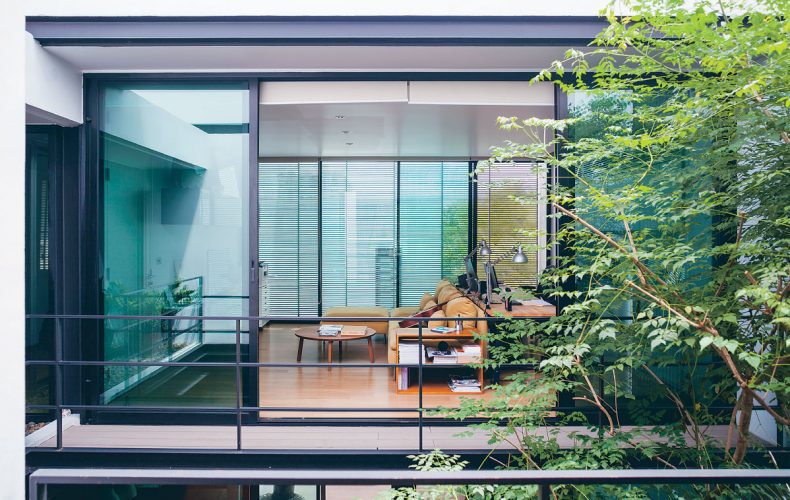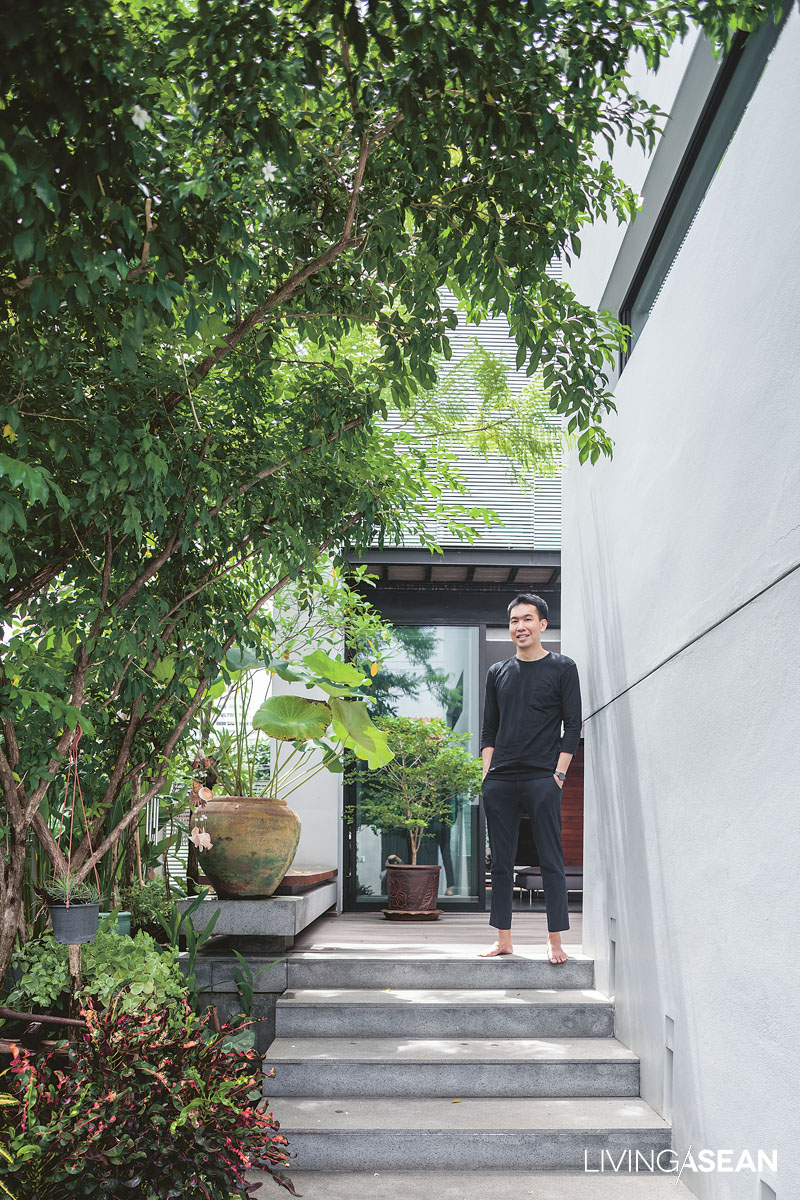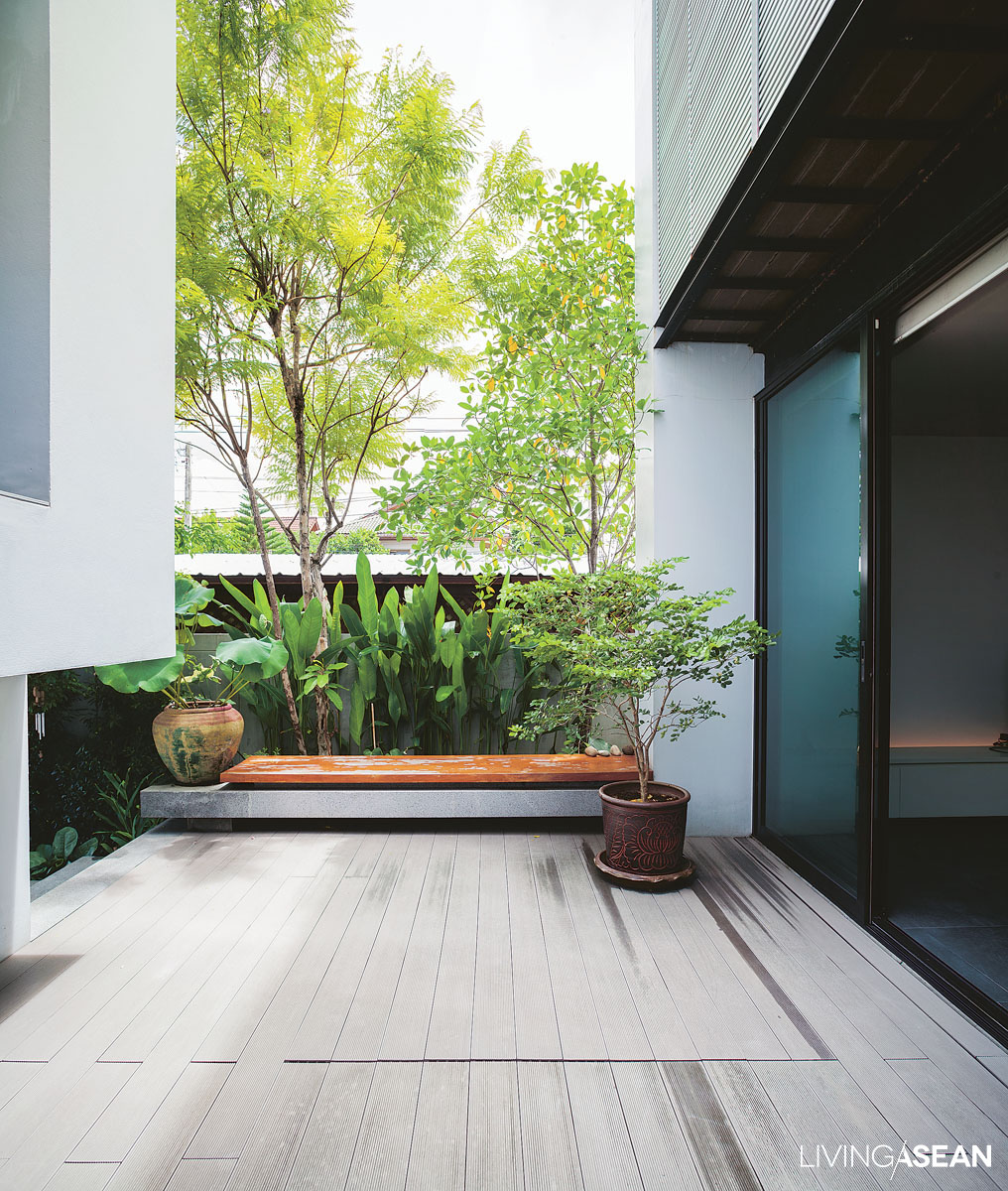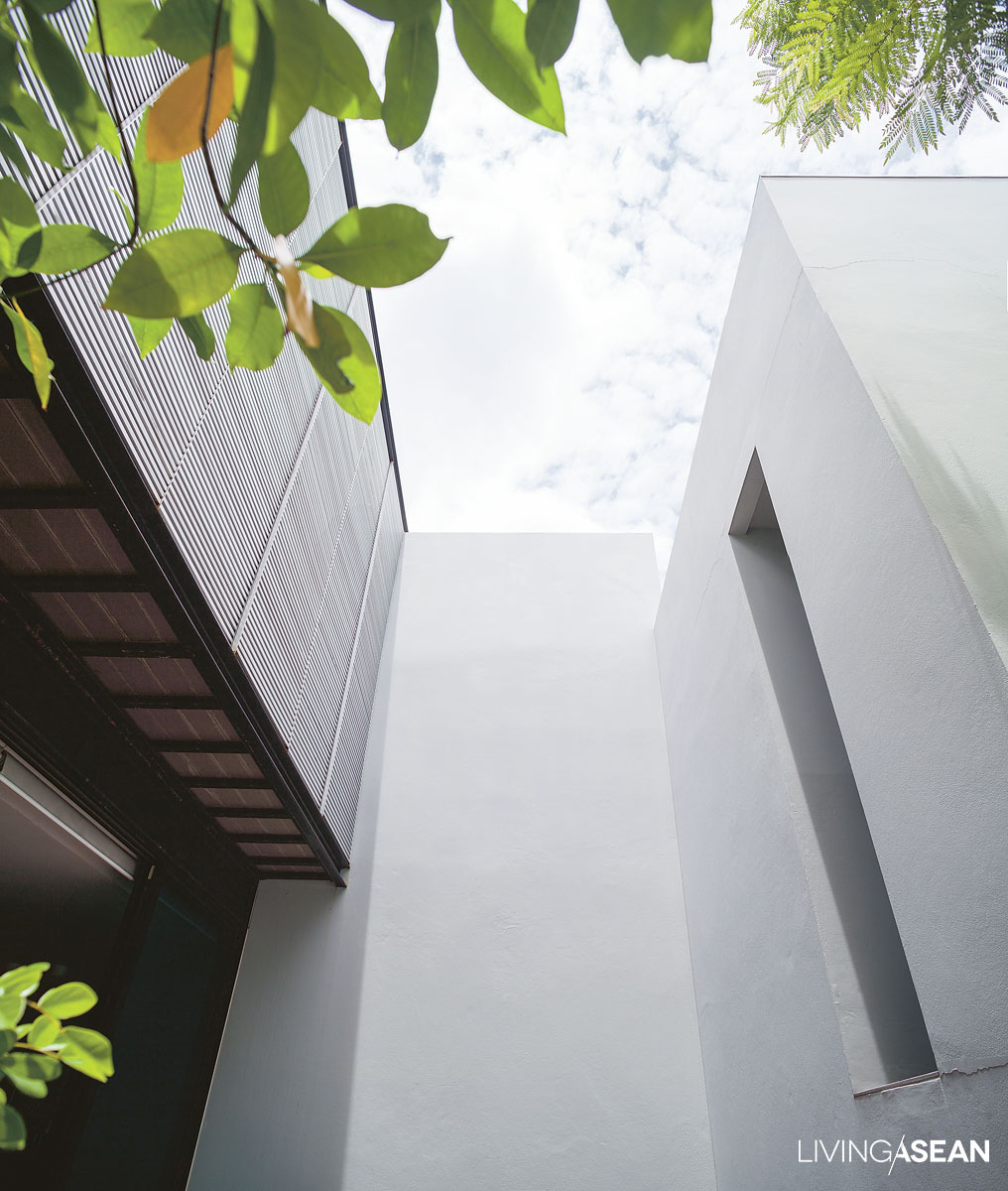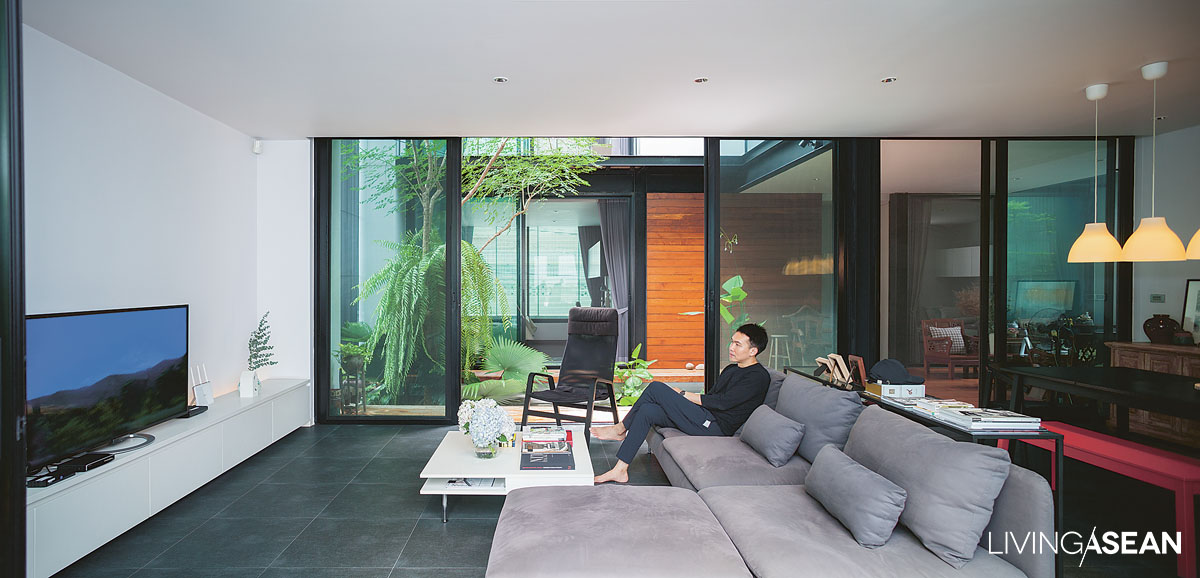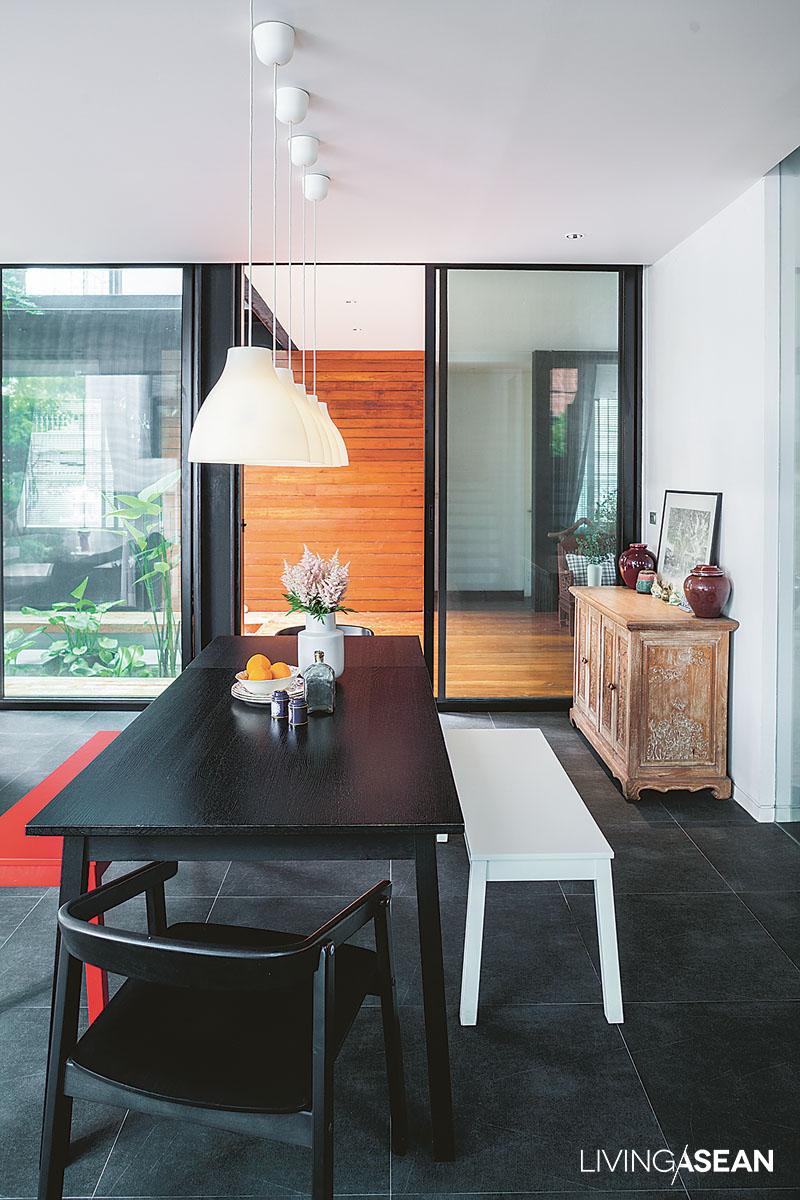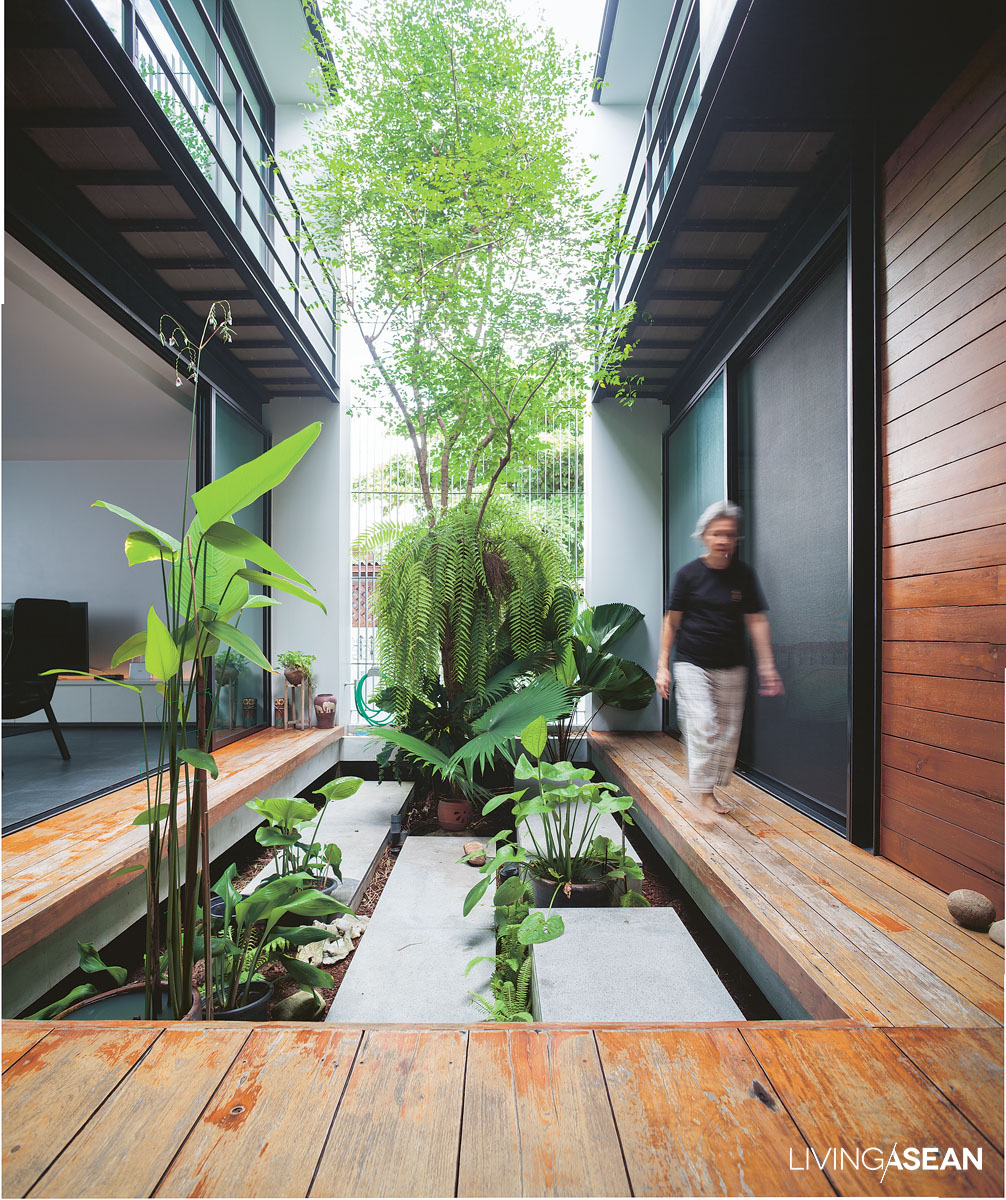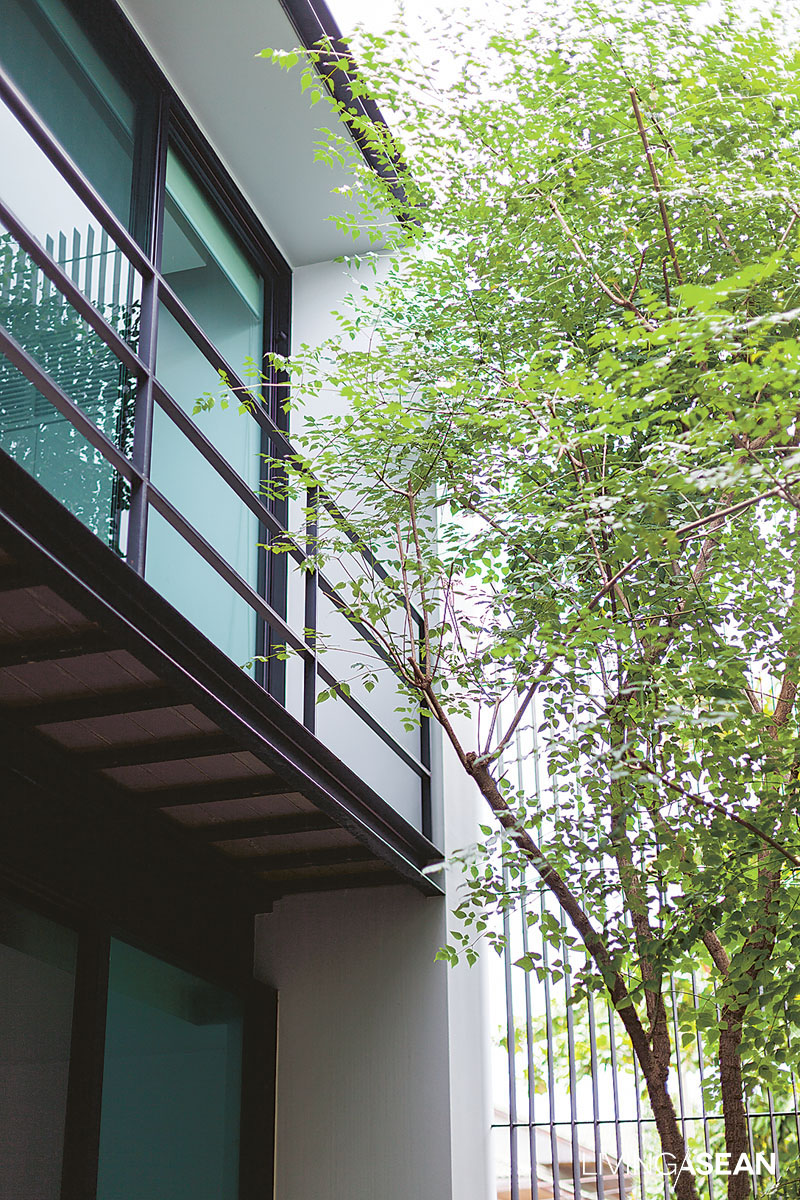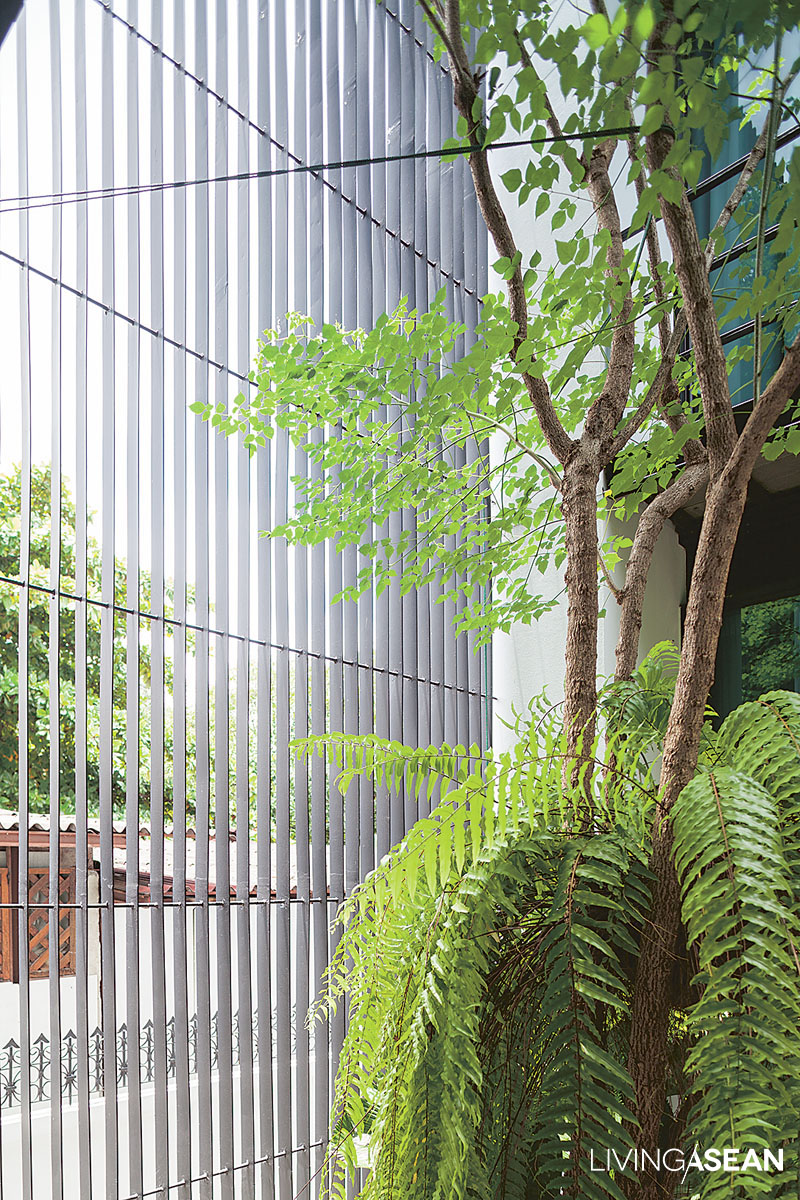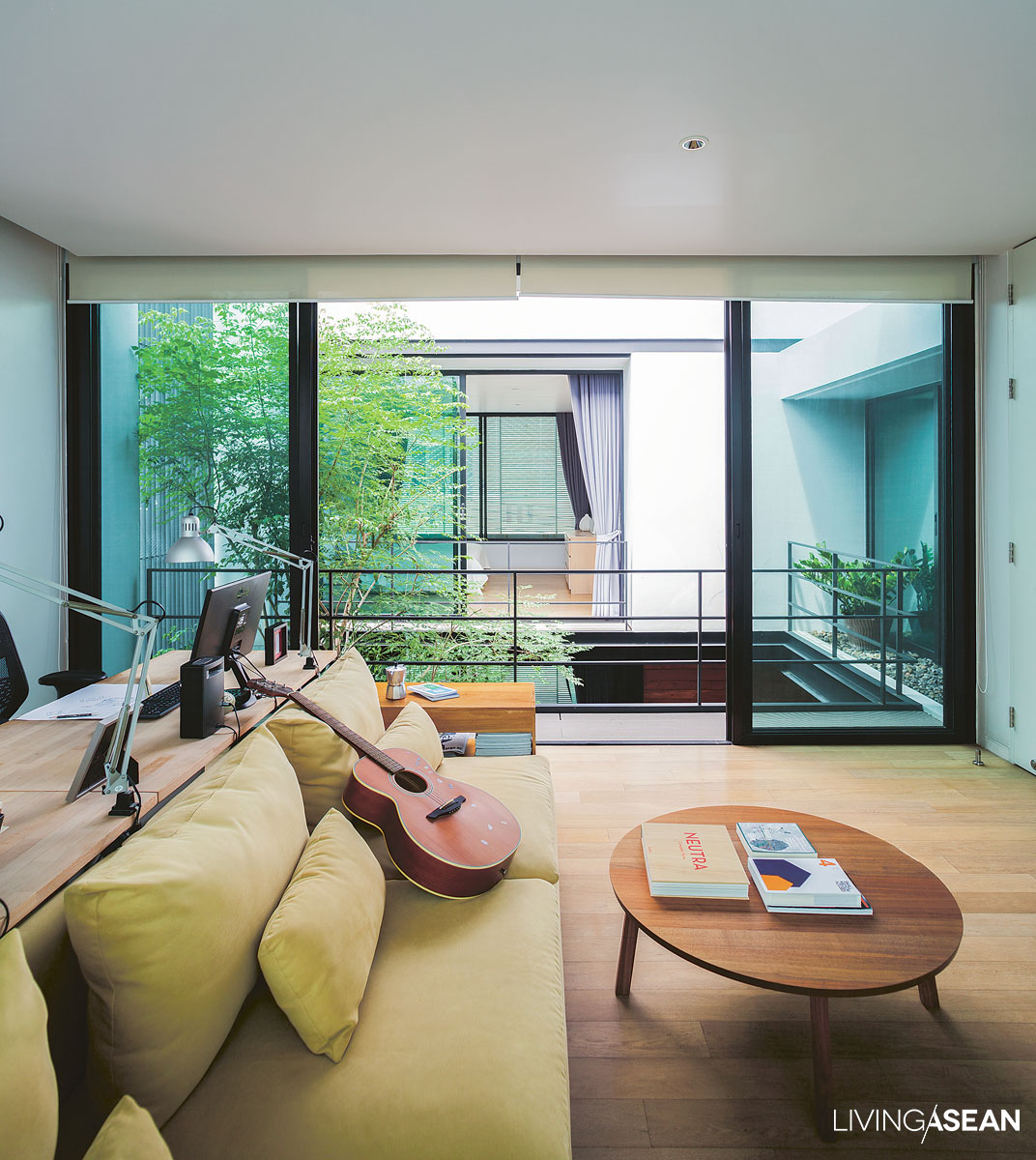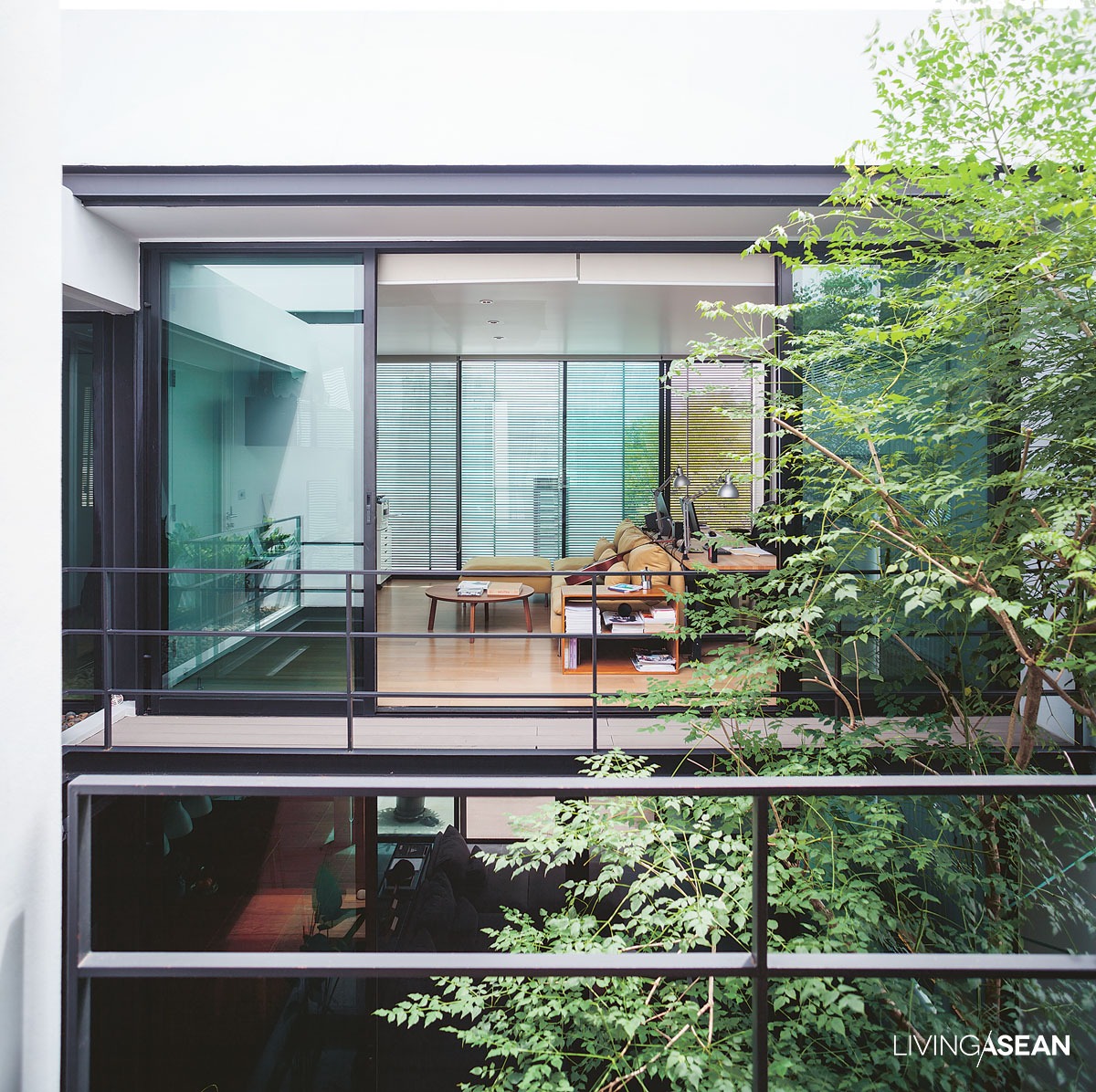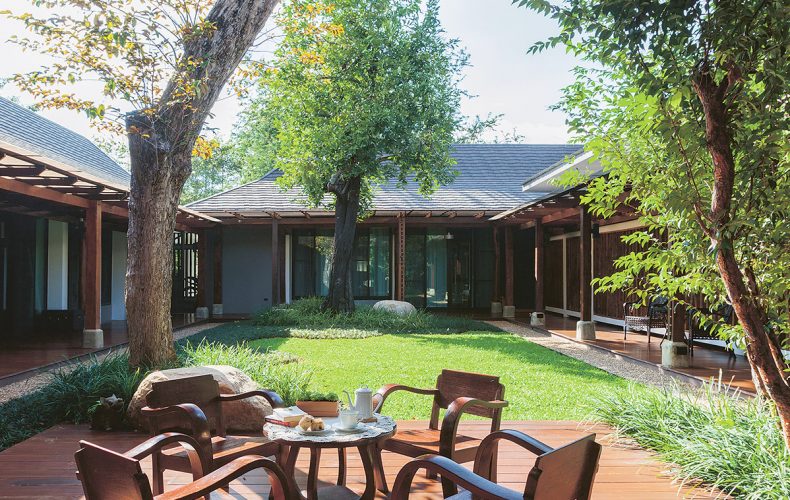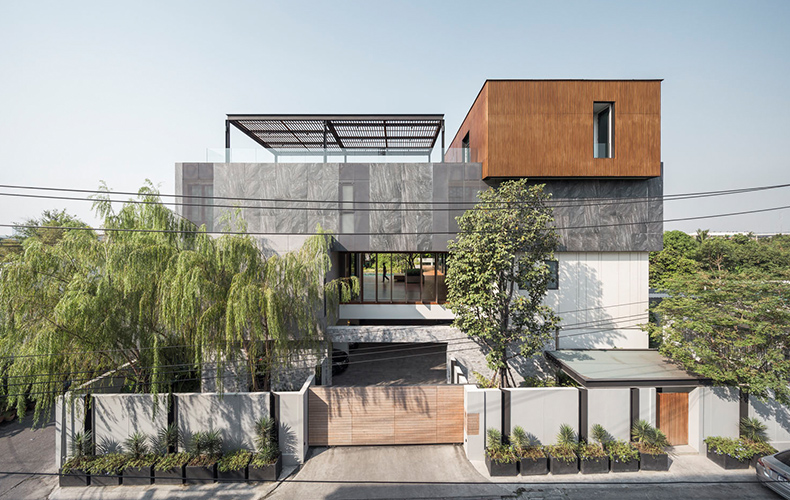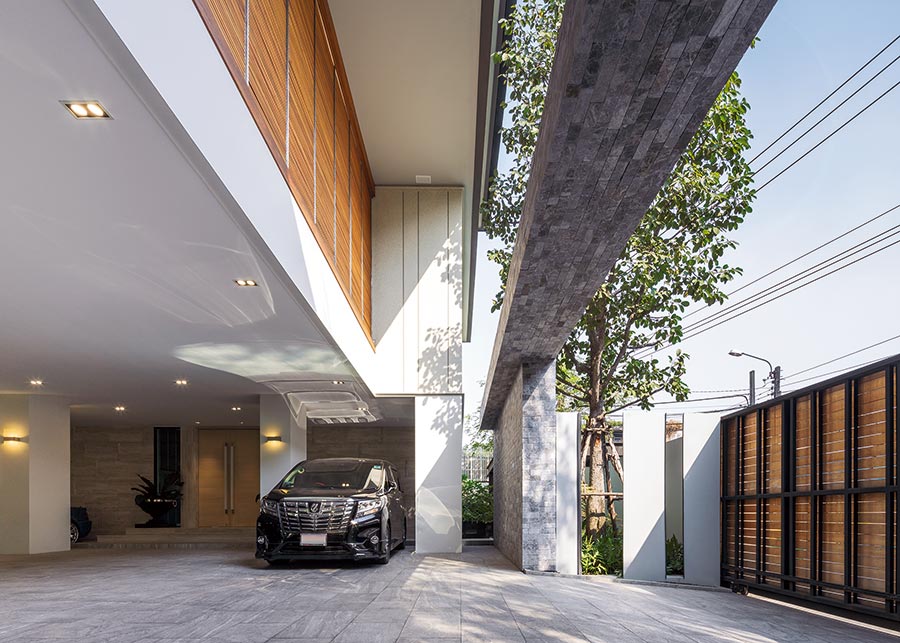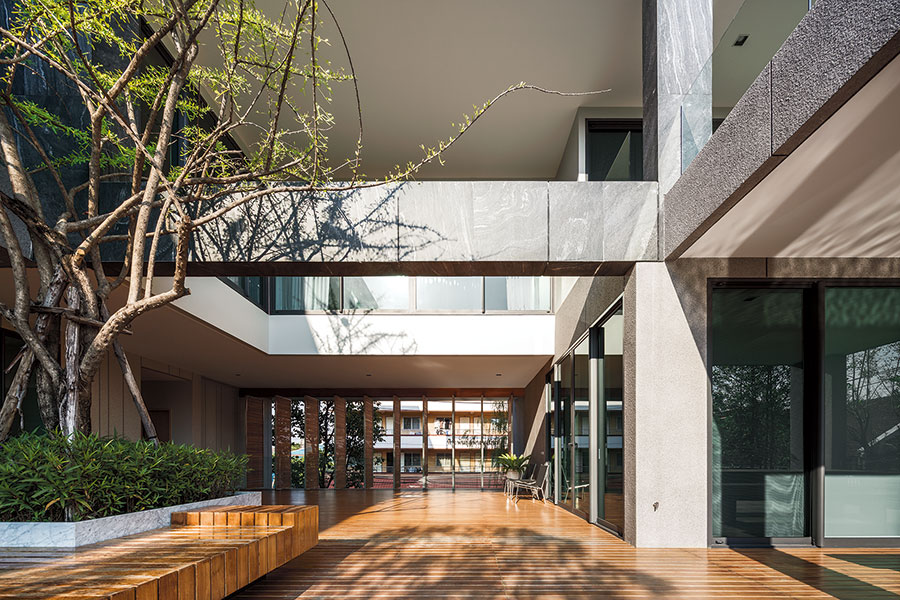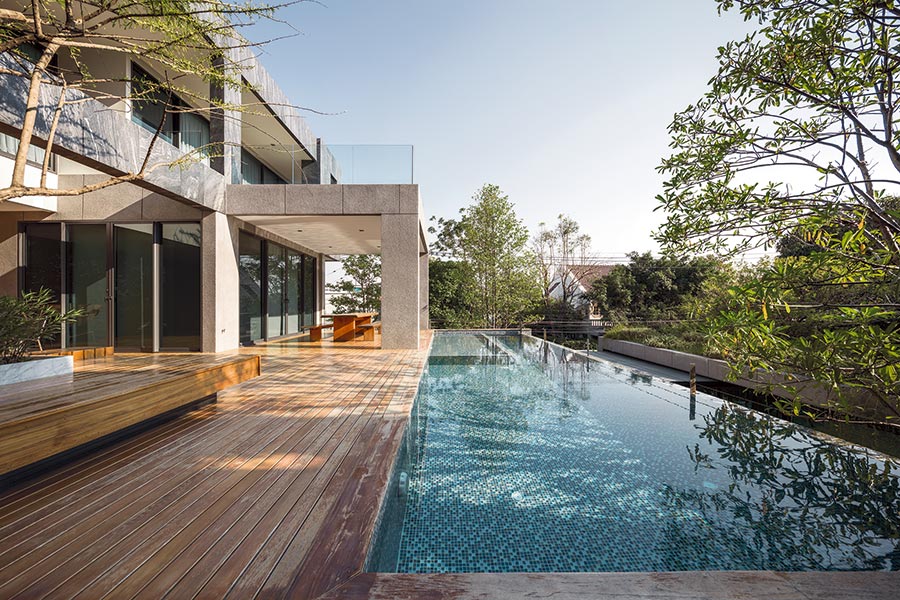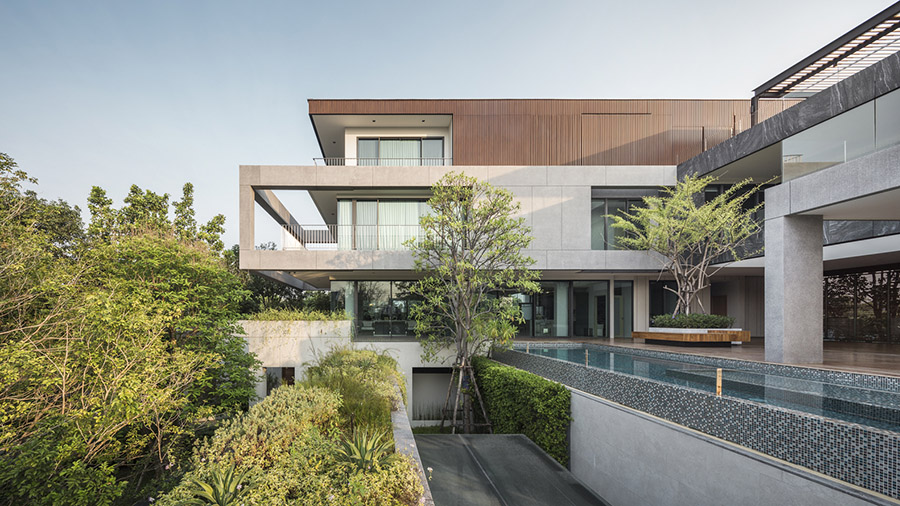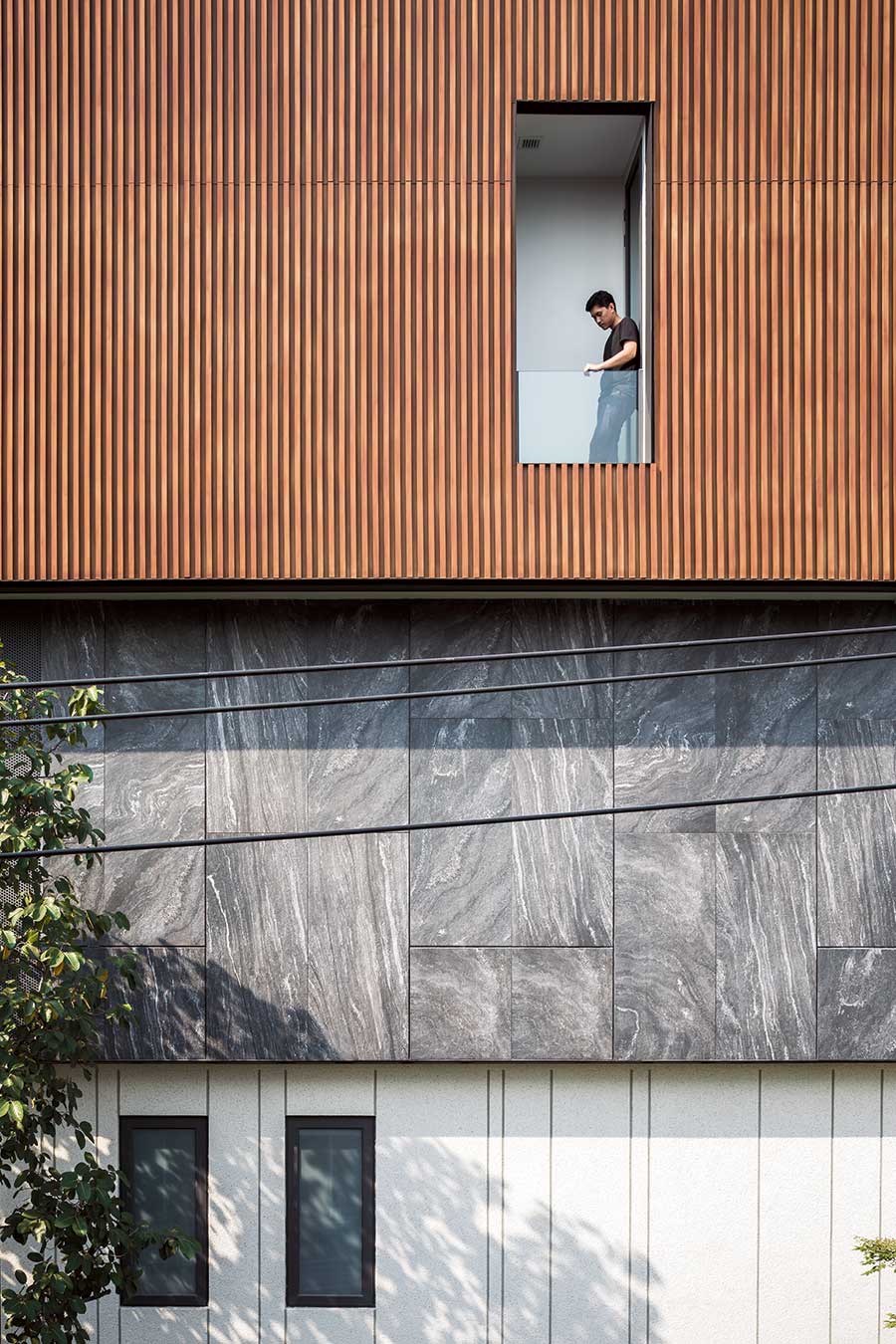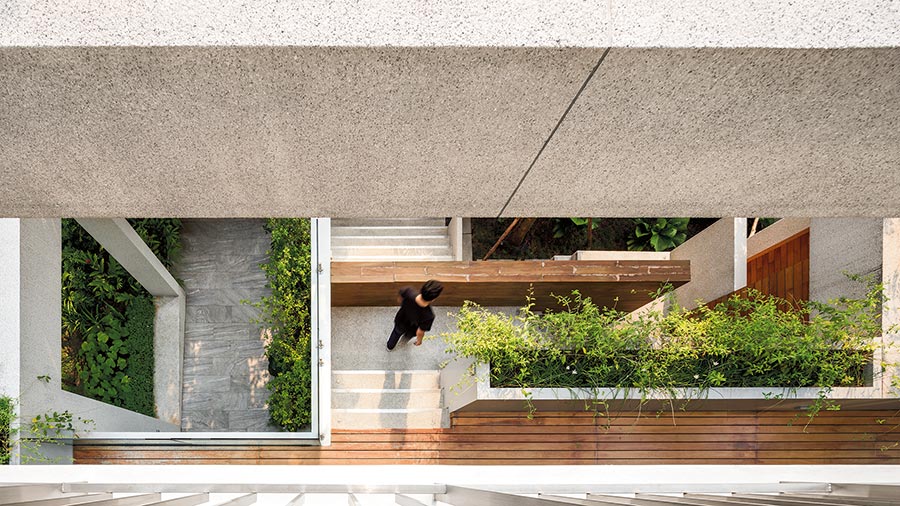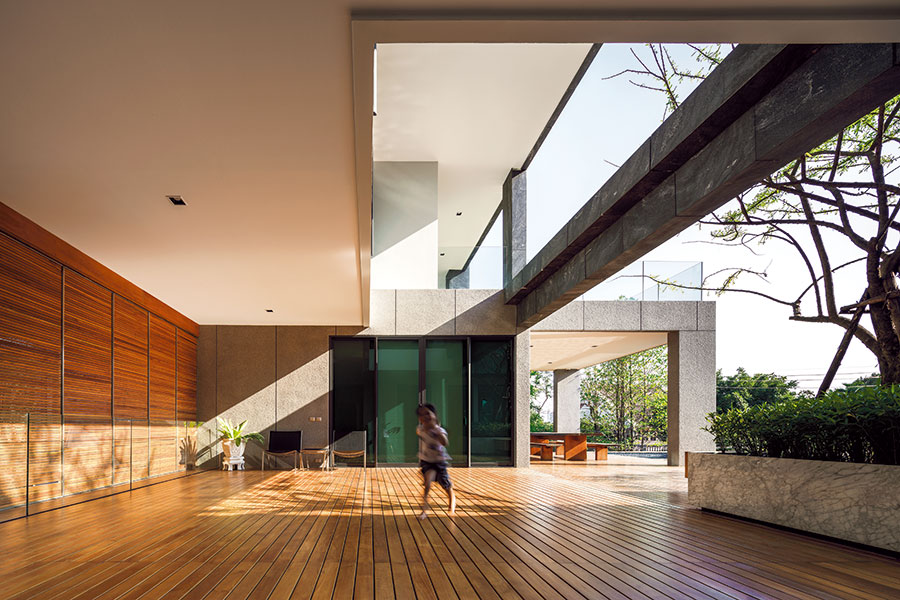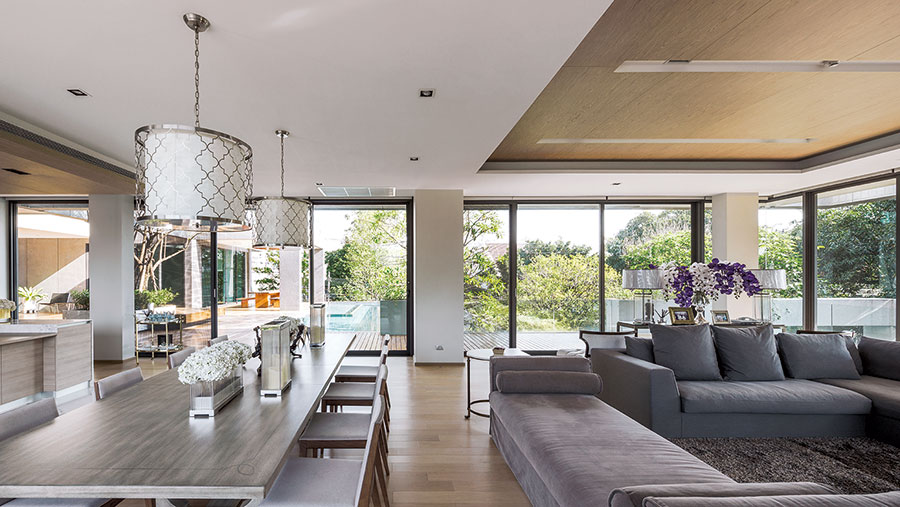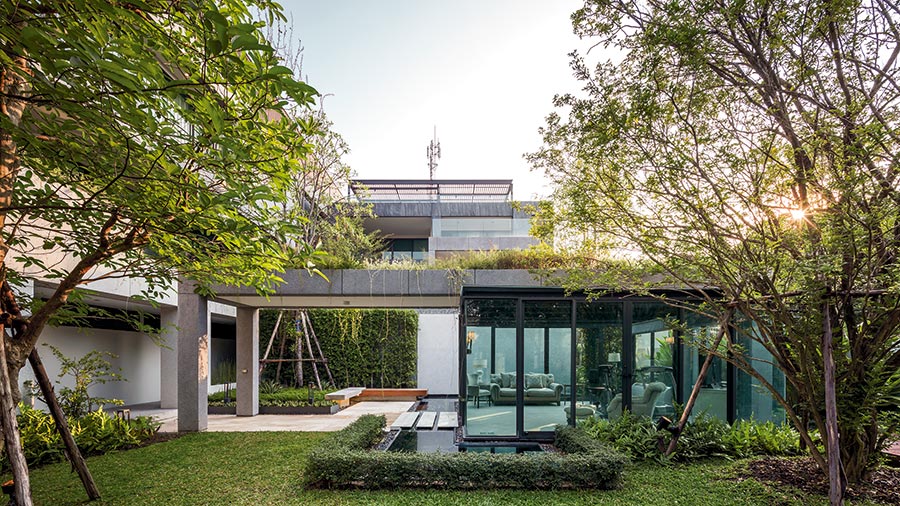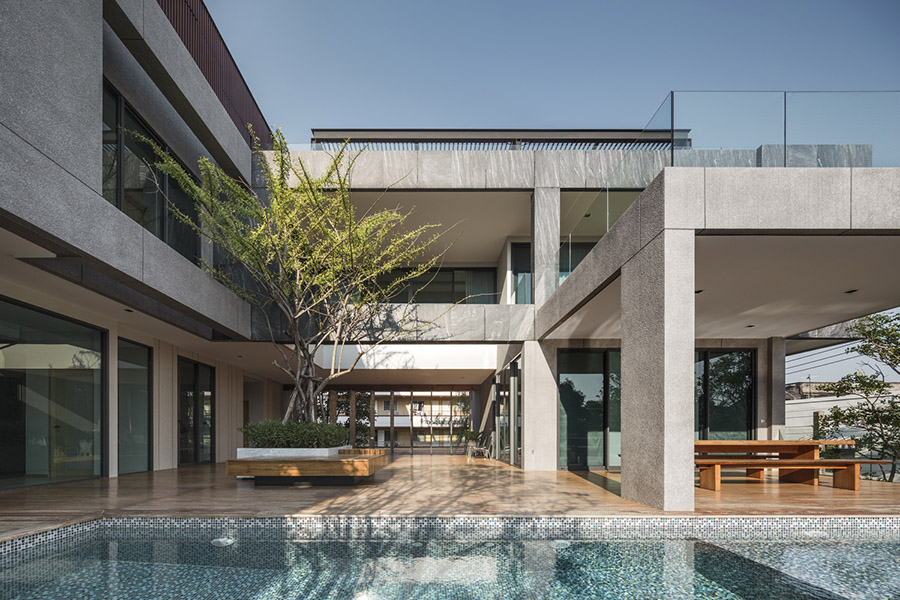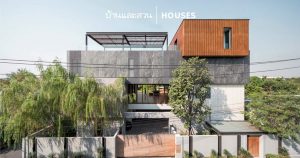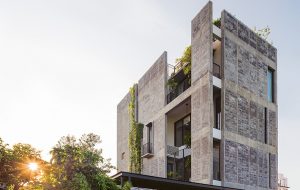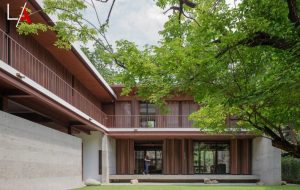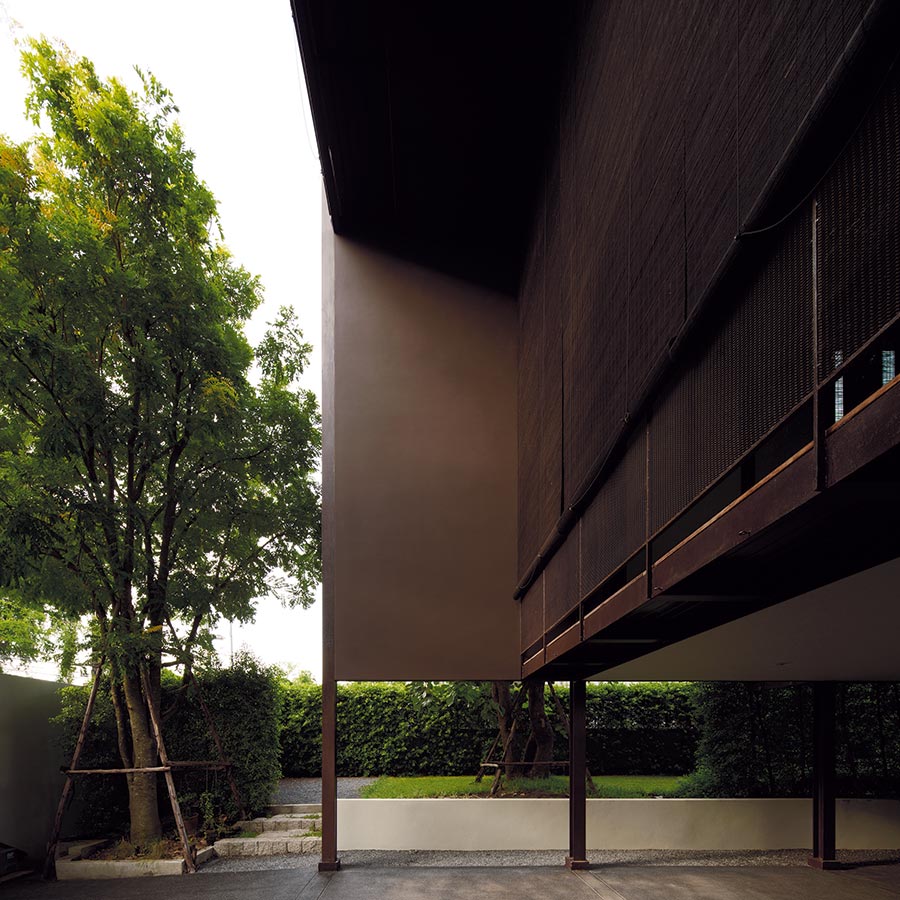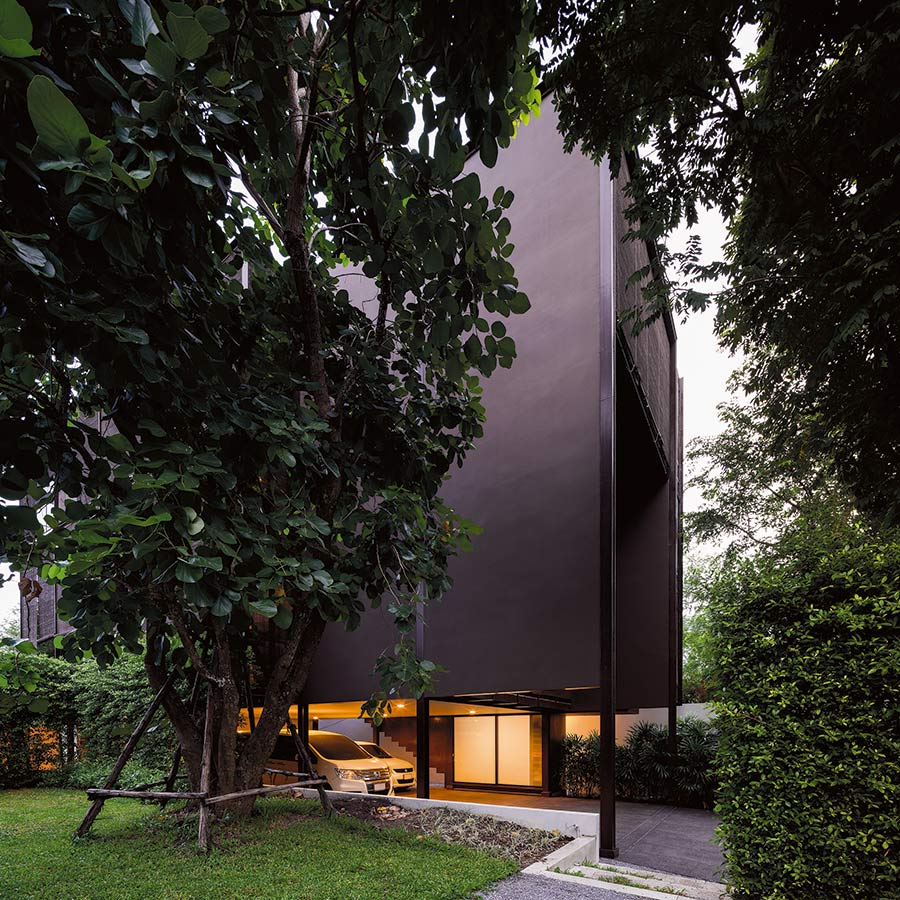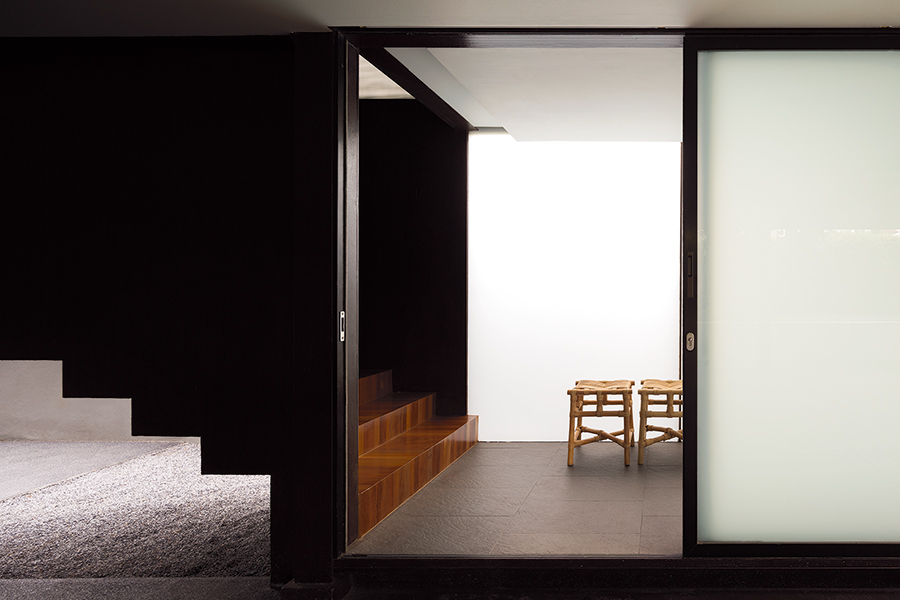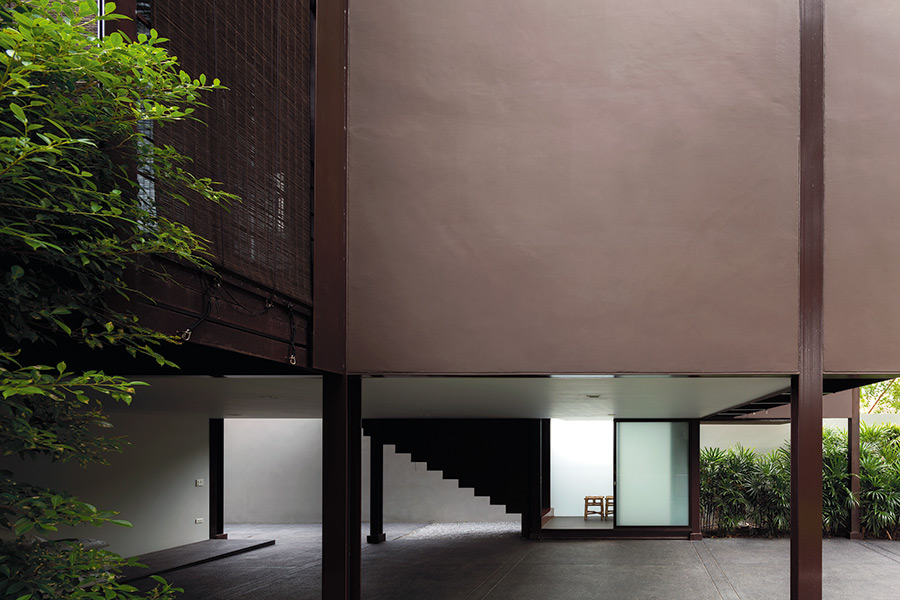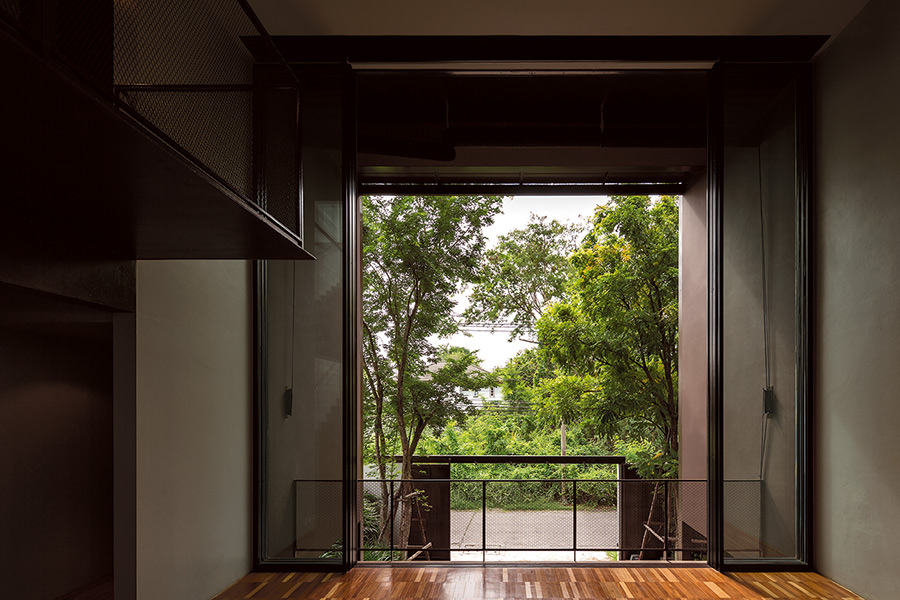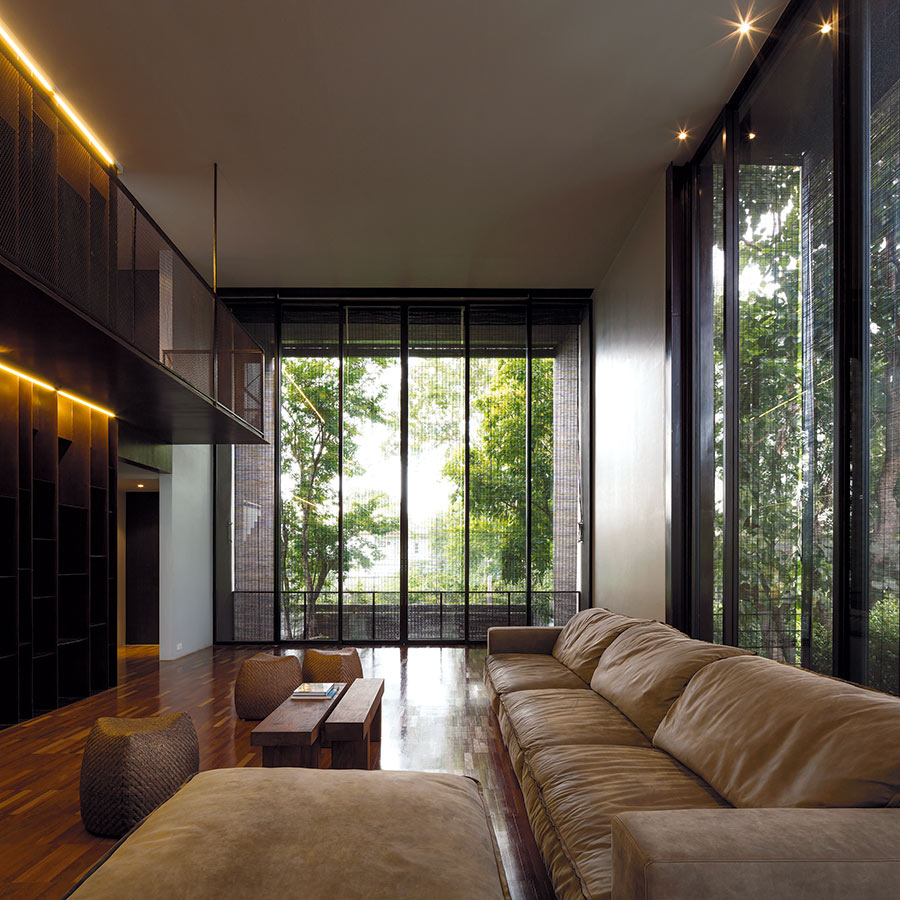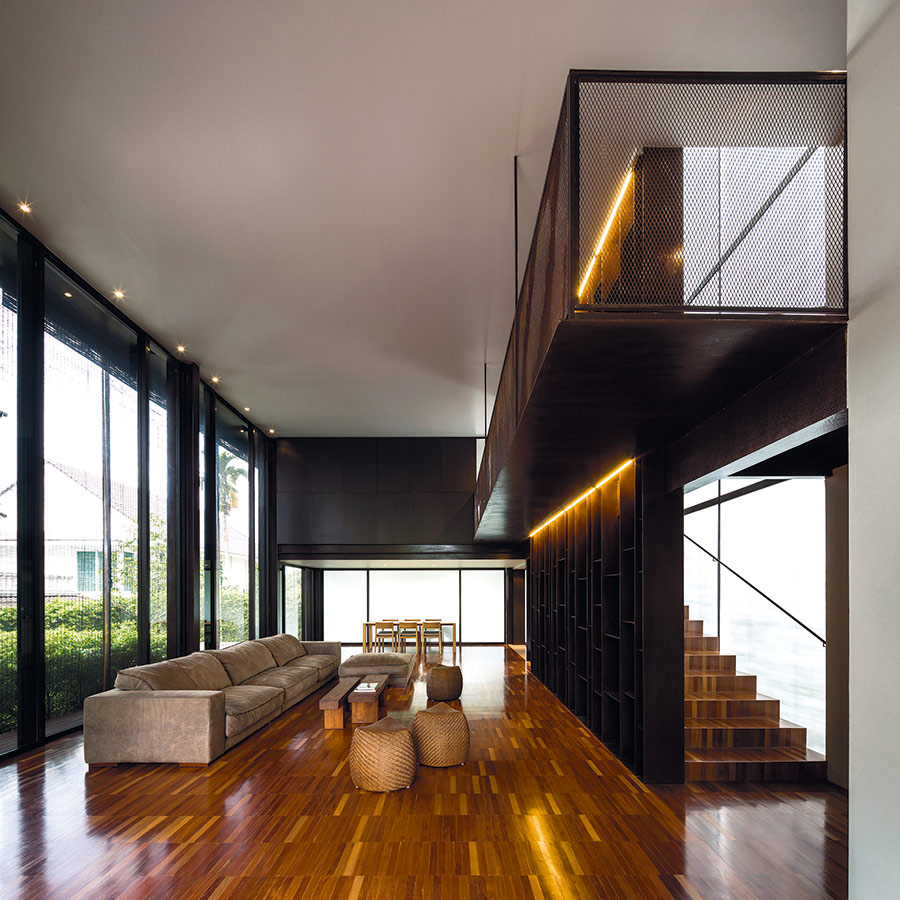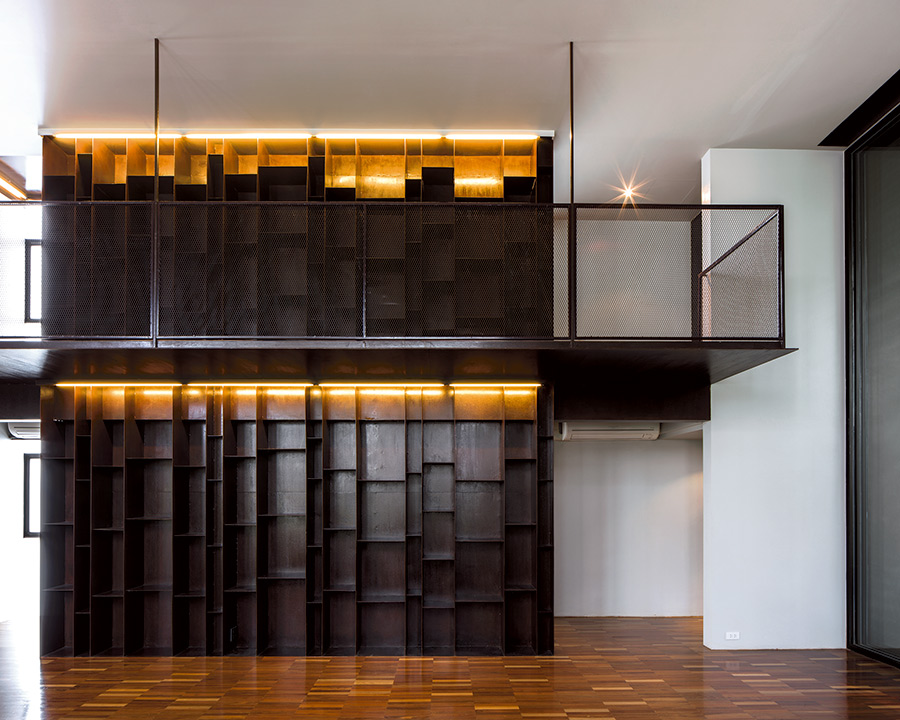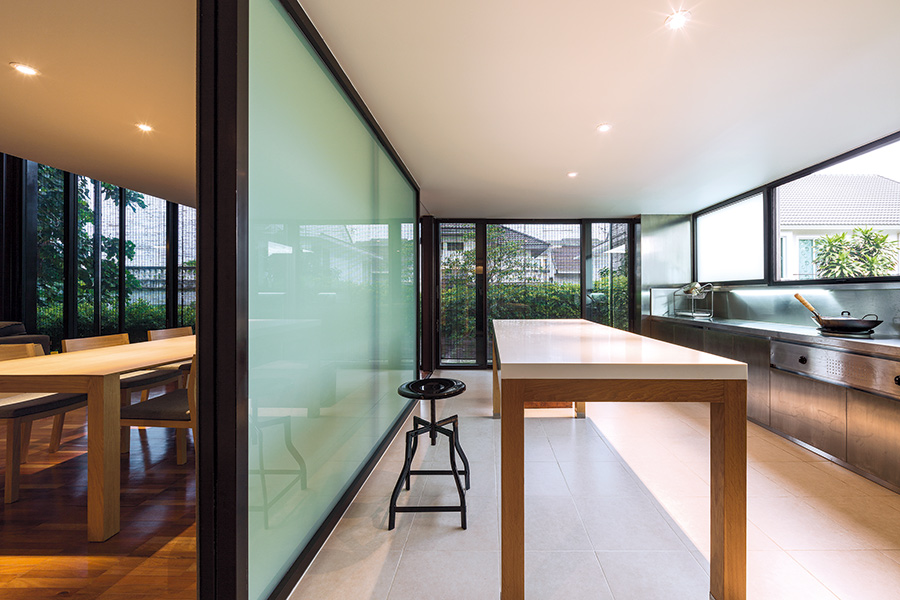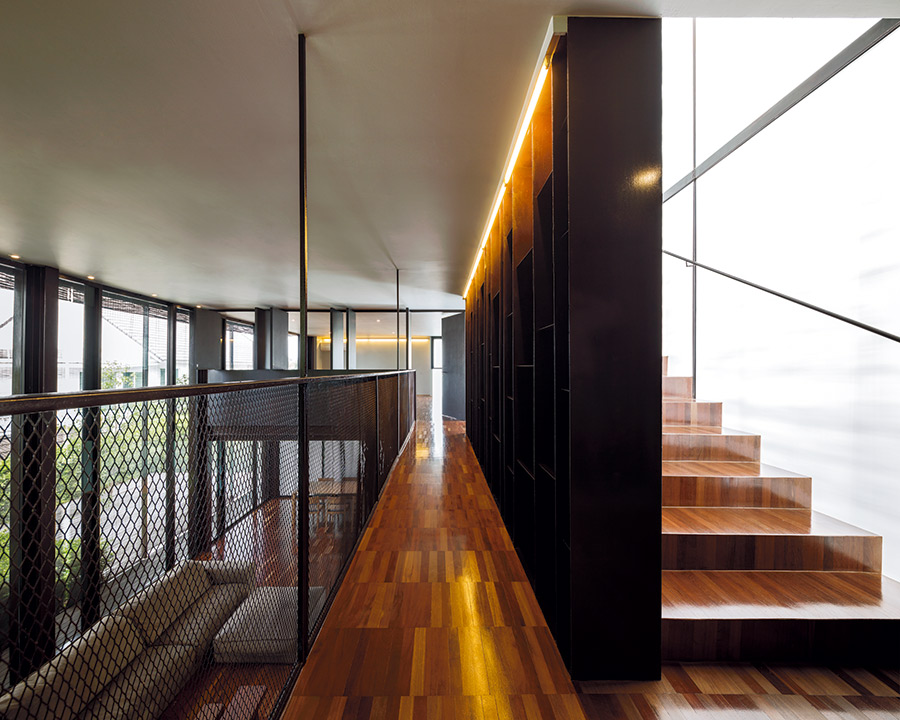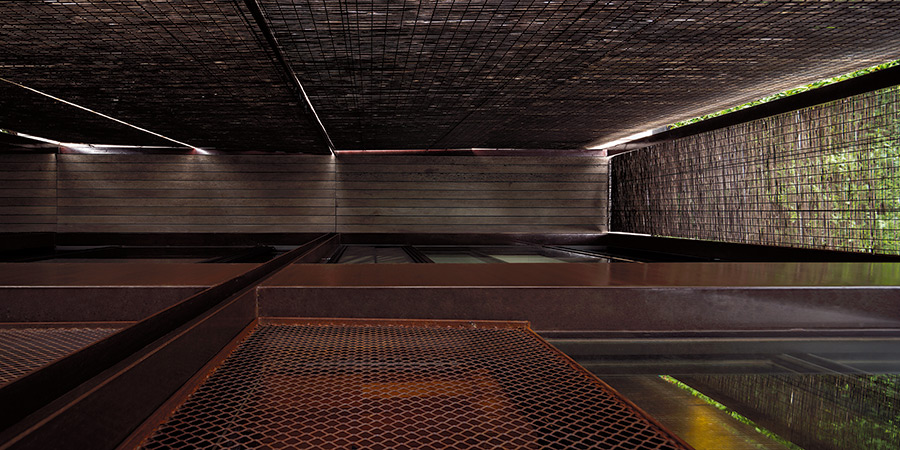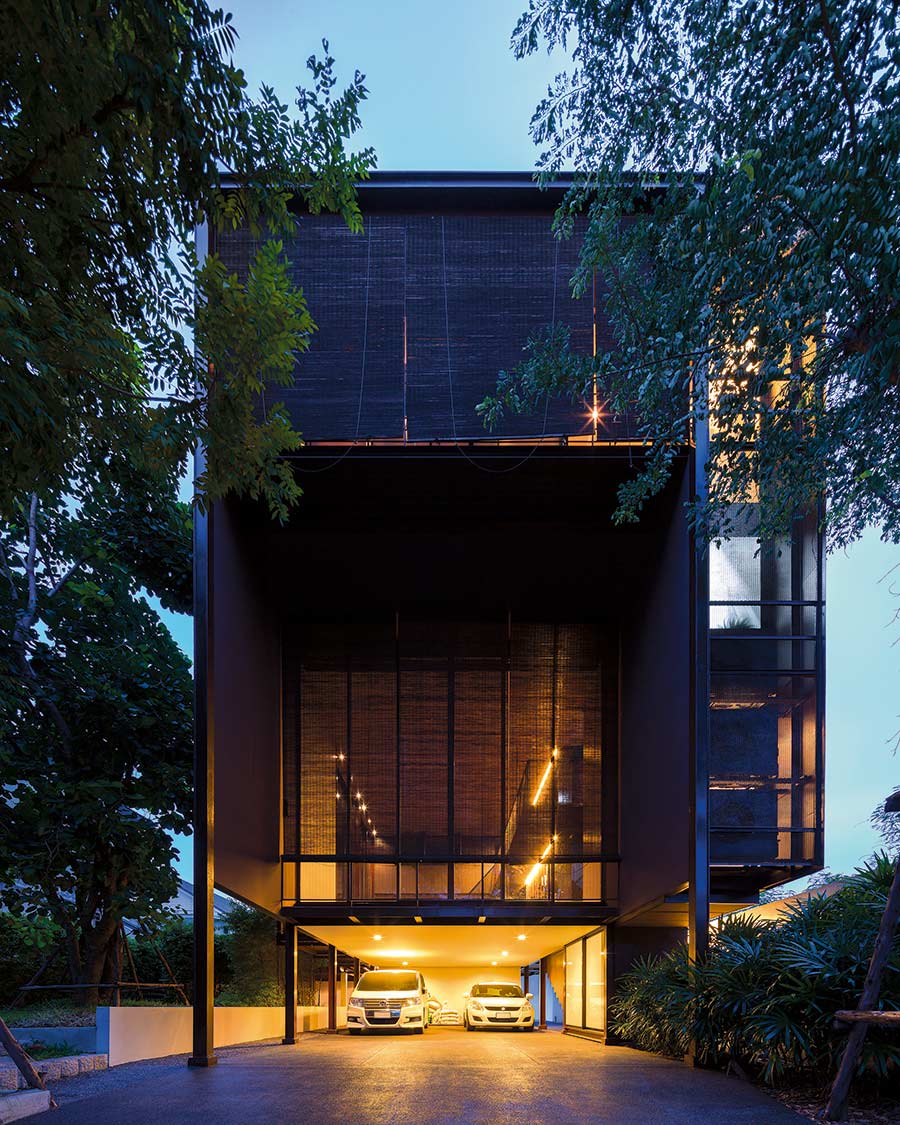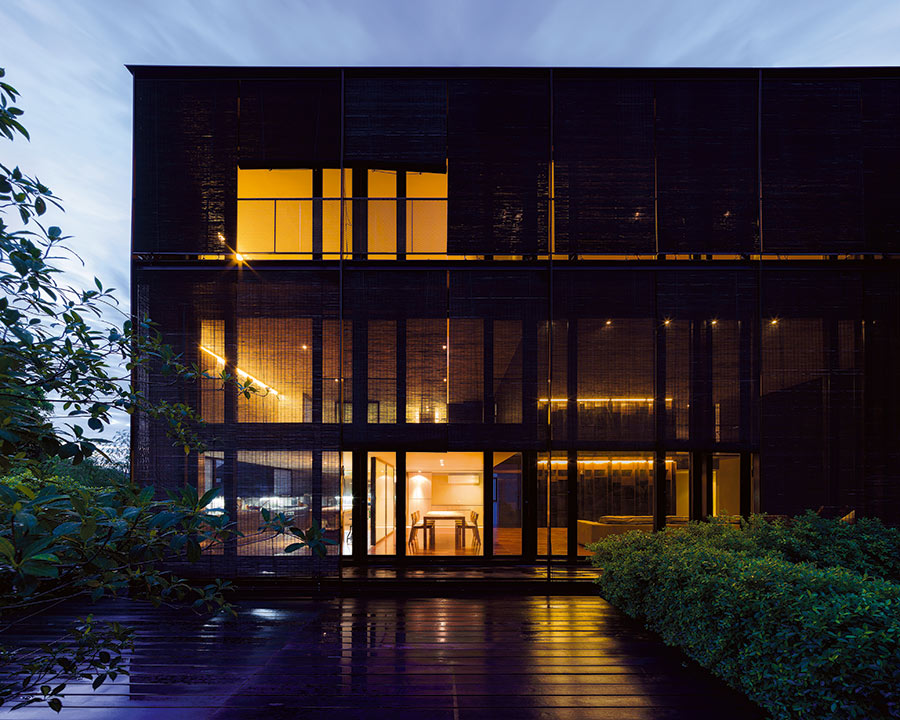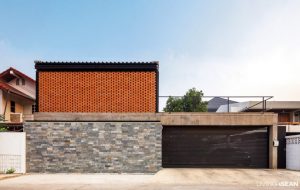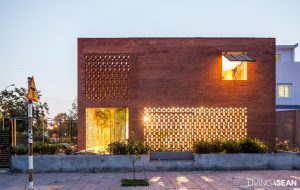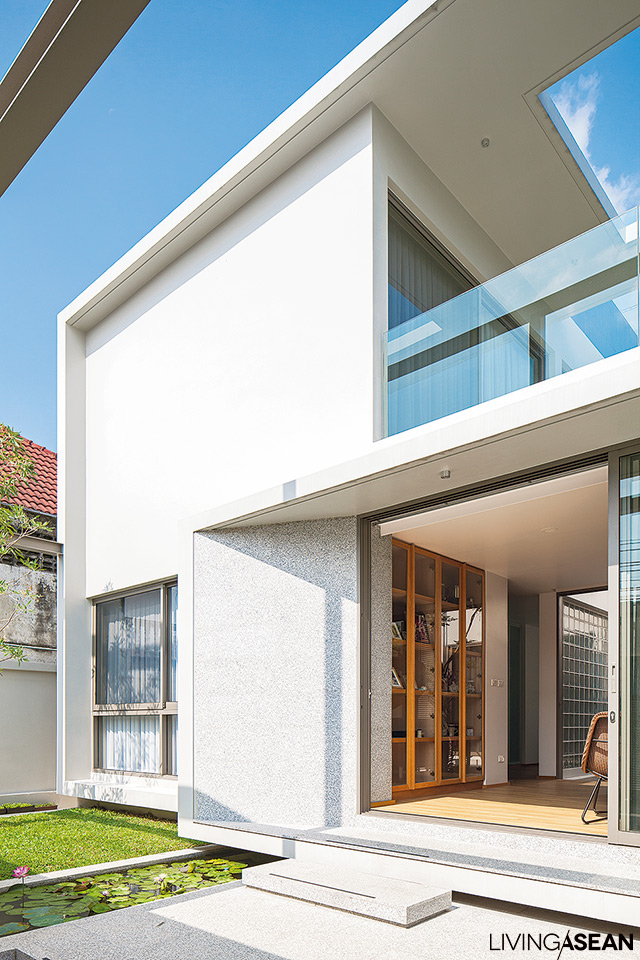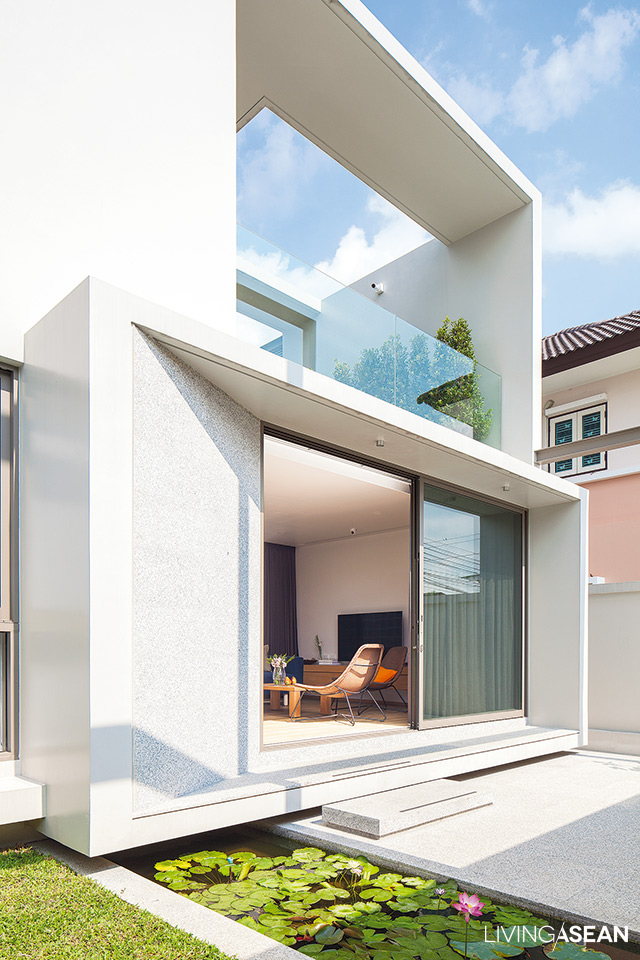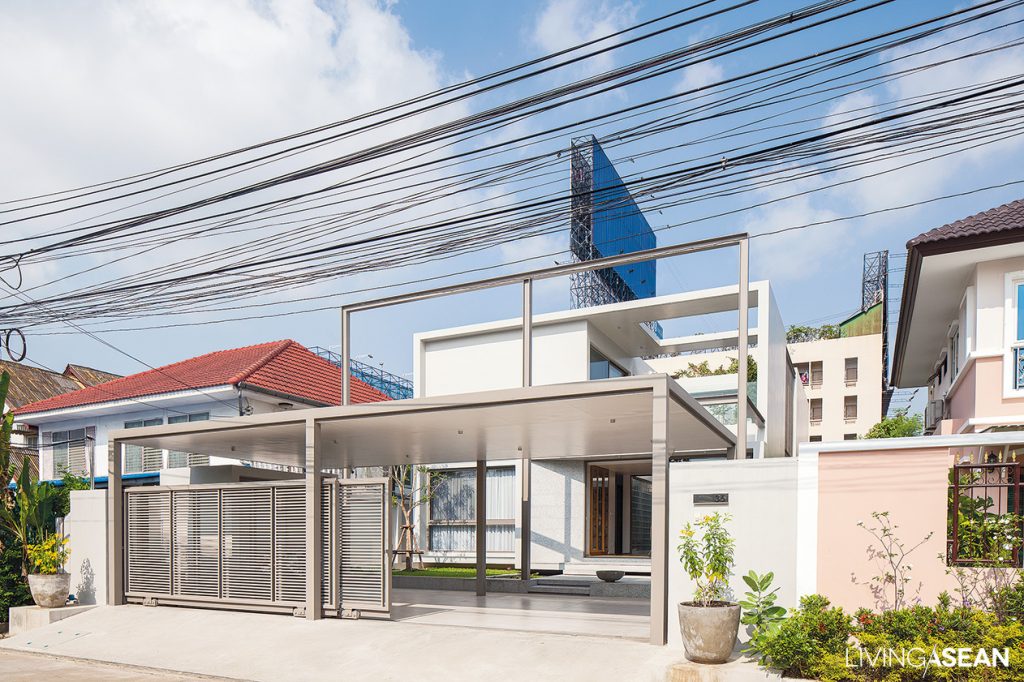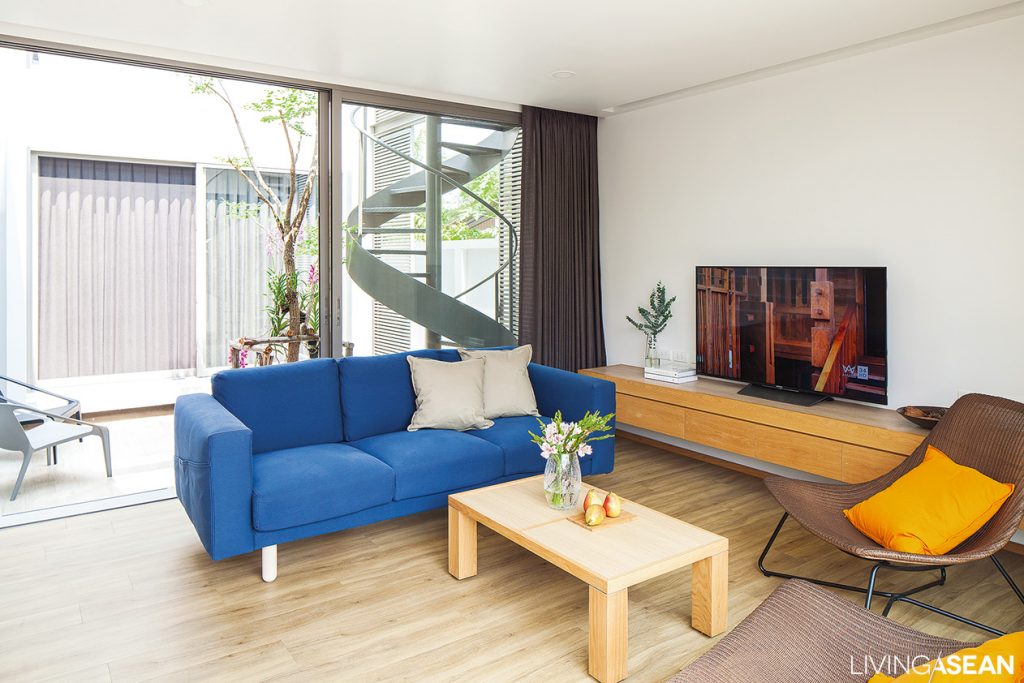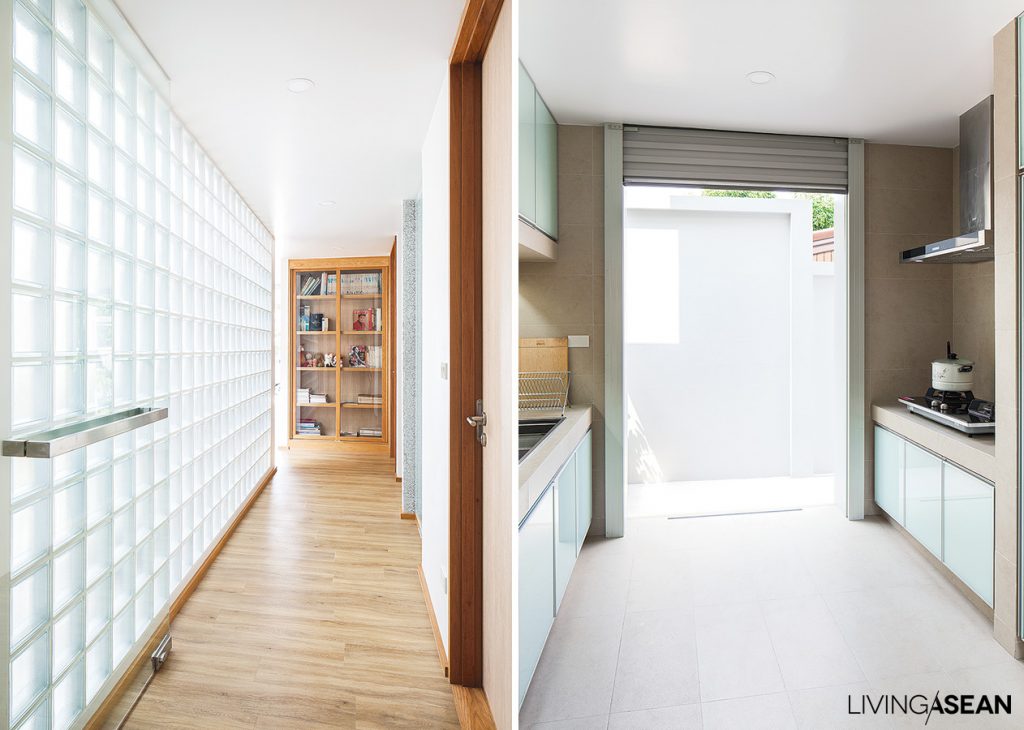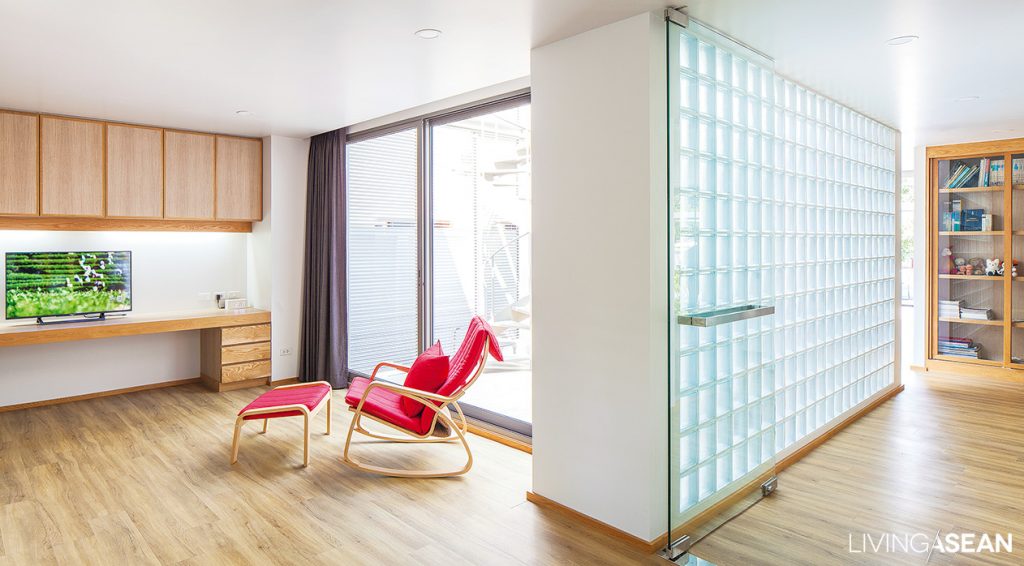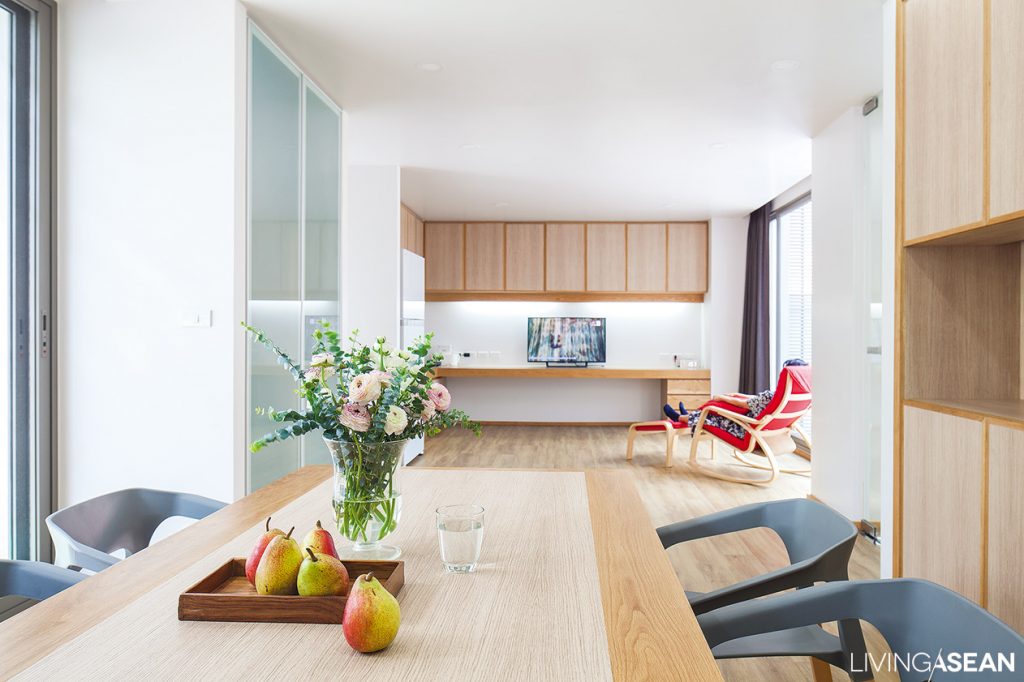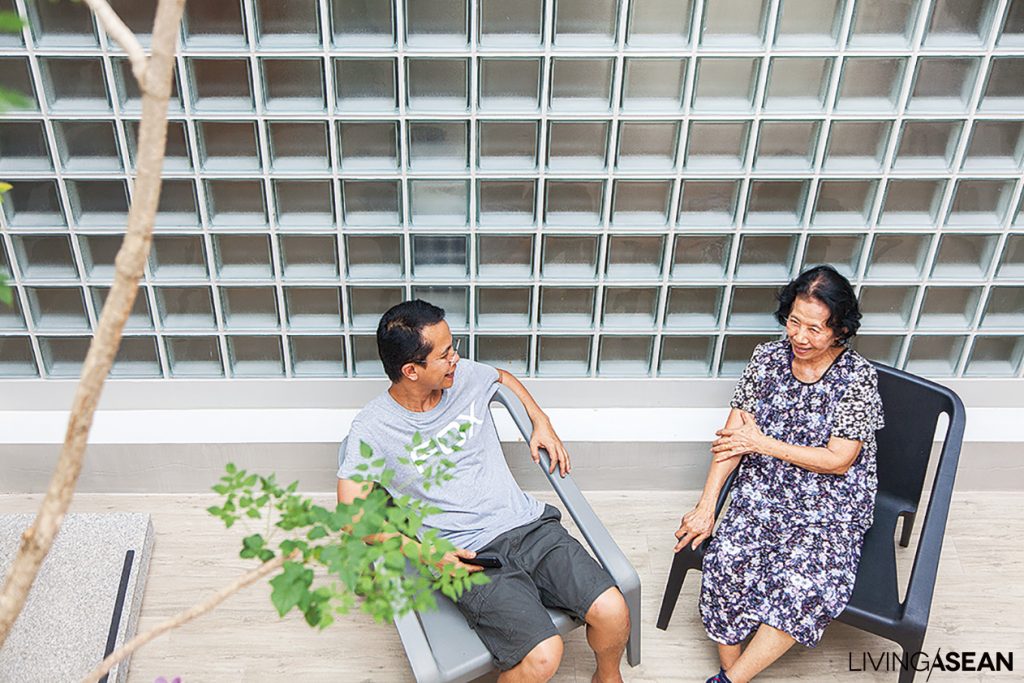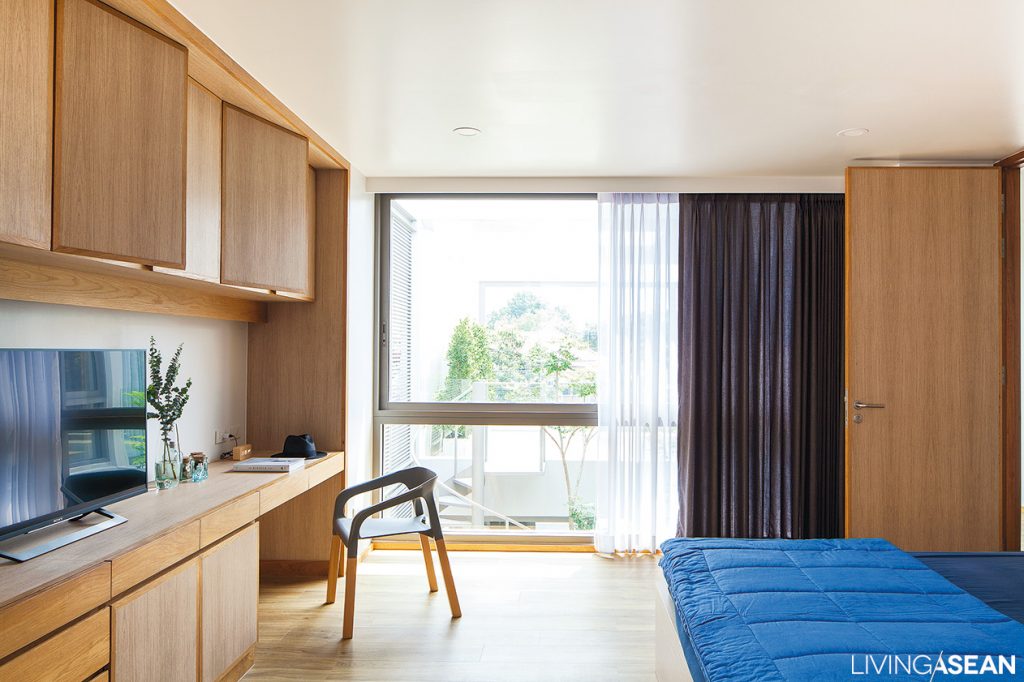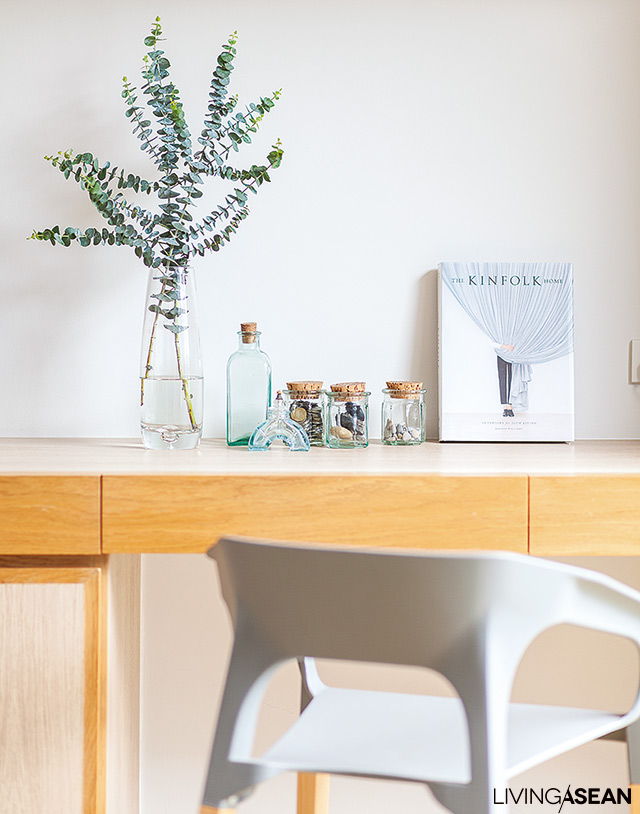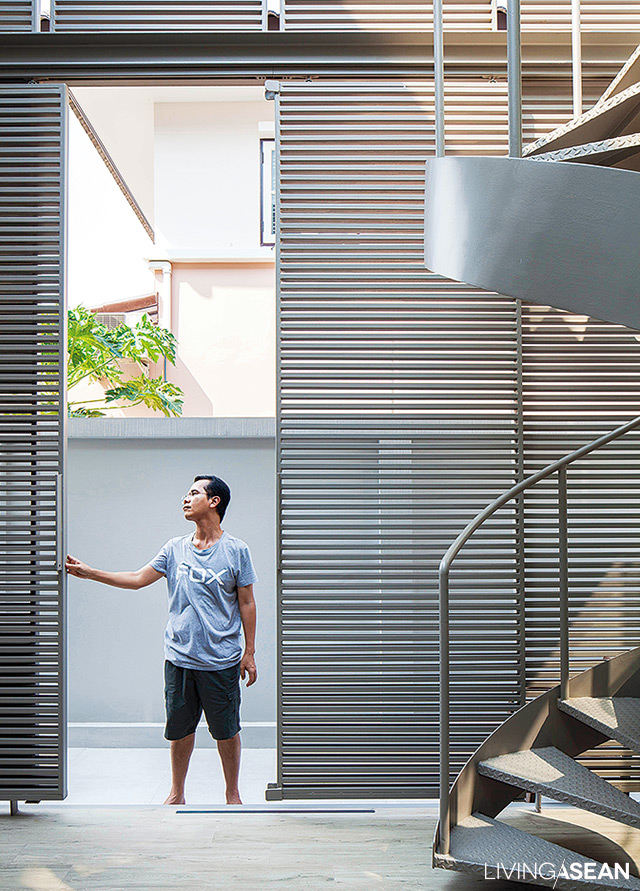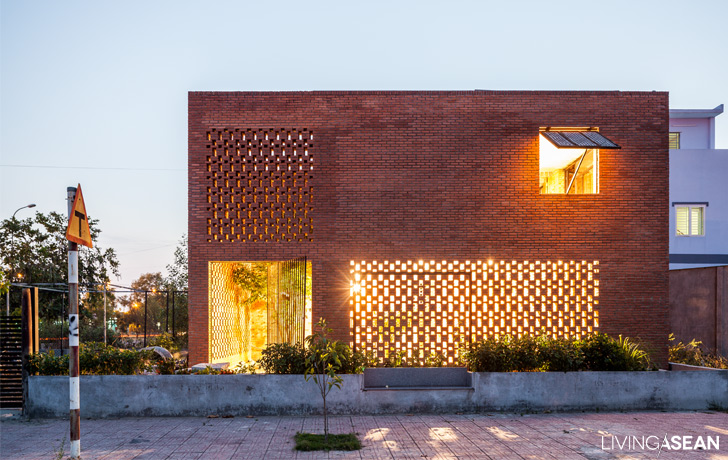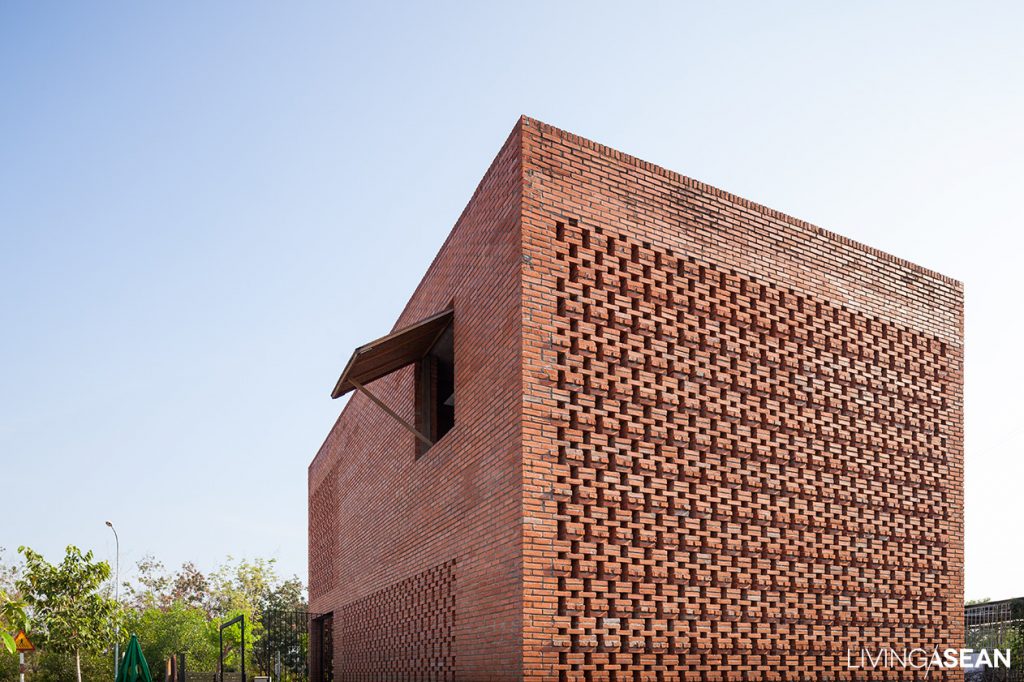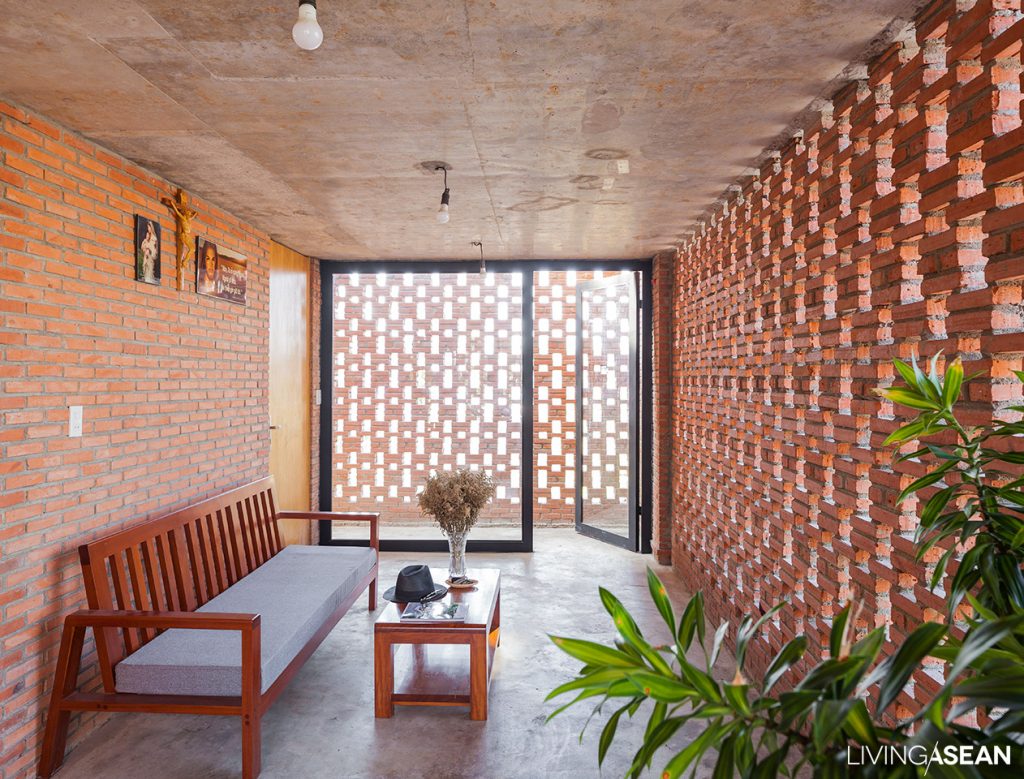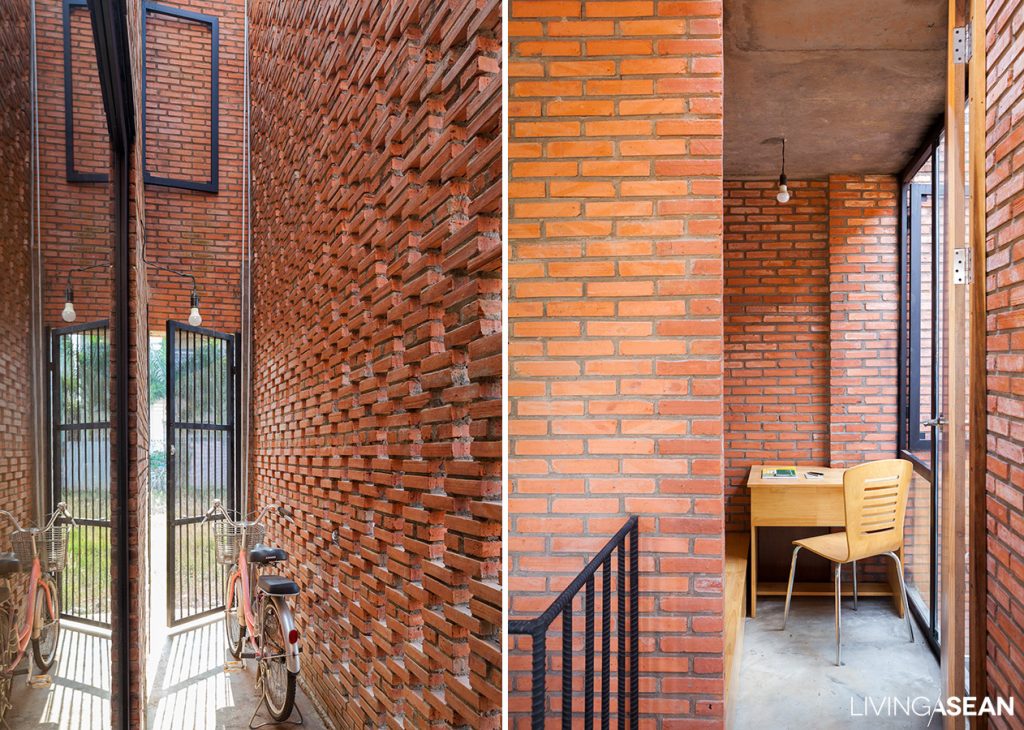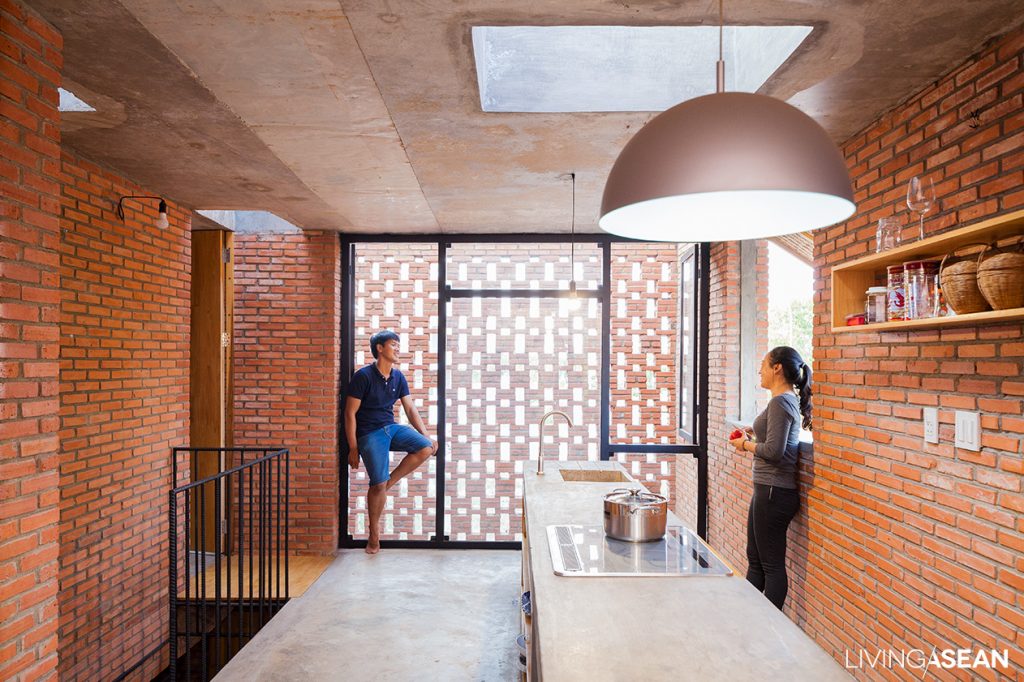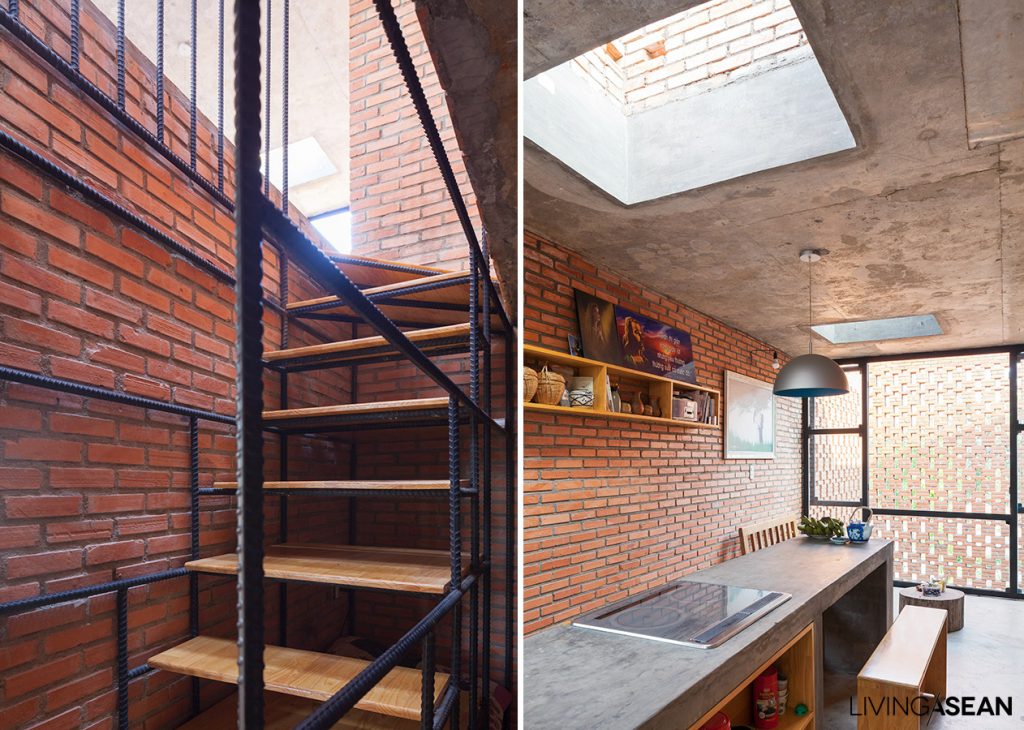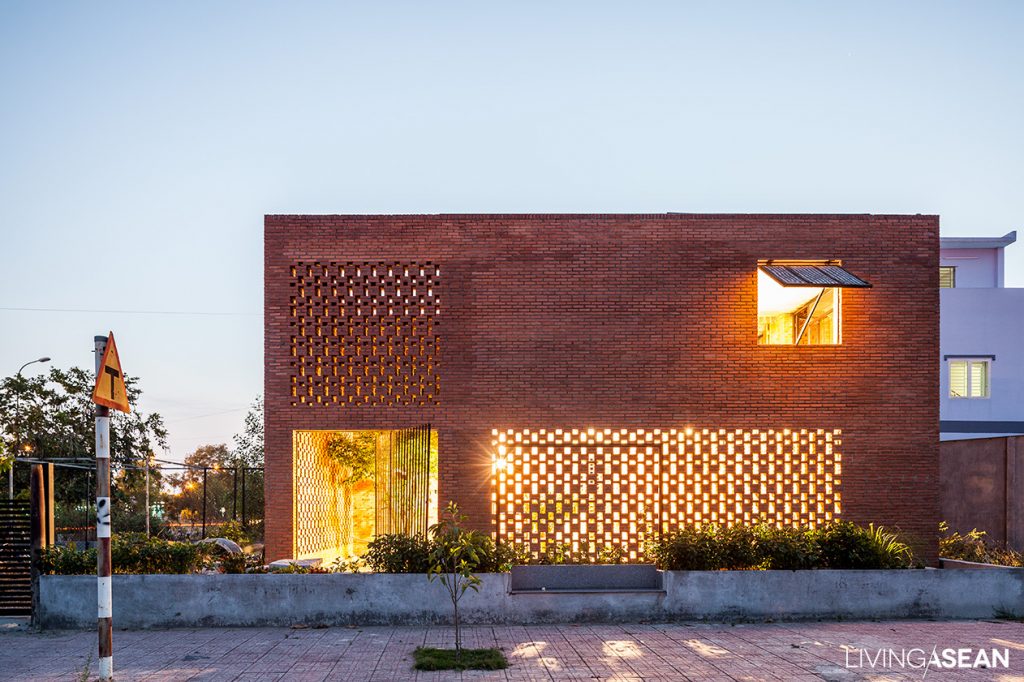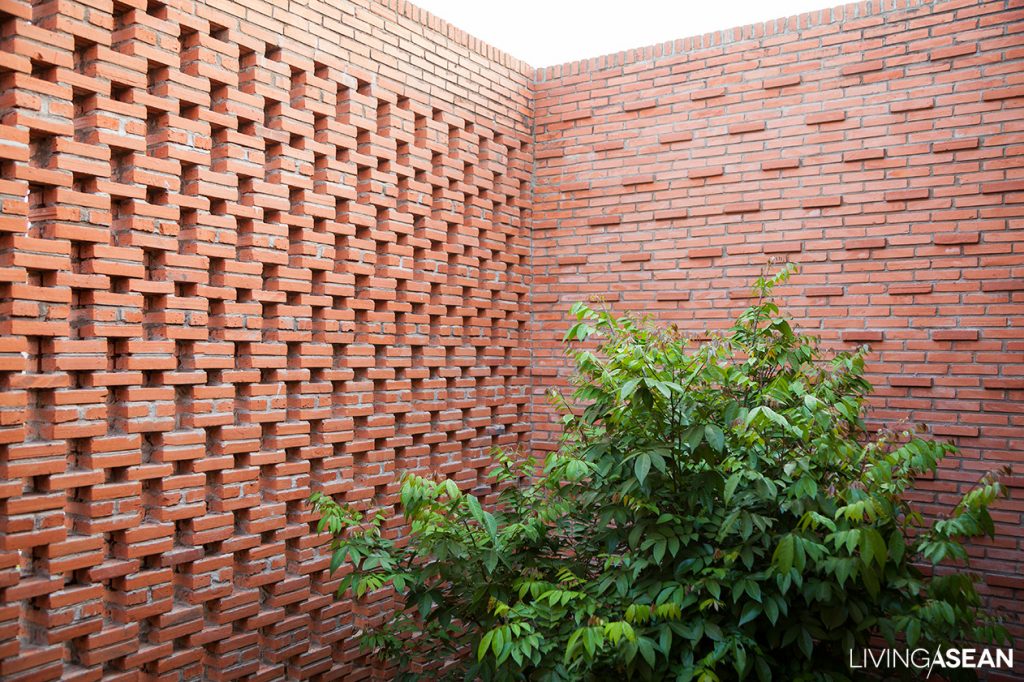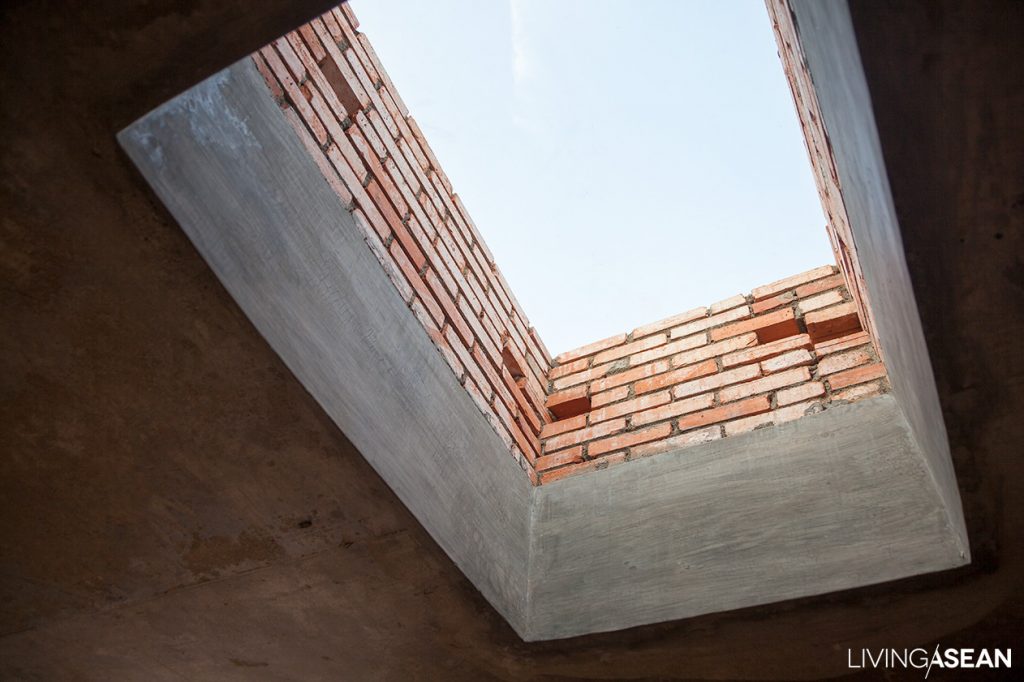/ Binh Dinh, Vietnam /
/ Story: Ektida N. / English version: Bob Pitakwong /
/ Photographs: Tuan-Nghia NGUYEN /
An eco-friendly home office building named Maison K hovers above the ground, looking out over a traffic circle in the center of Quy Nhon, a coastal city in central Vietnam. The overall effect is out of this world, inspiring admiration for its well-thought-out design and build quality. The building’s double-skin façade gives off good vibes, thanks to air flowing through the intermediate cavity. At the same time, hanging and trailing vines add a lush appeal to the building’s principal front shimmering in the sunlight. Right next to it, another home office building with beautiful raw concrete finishes stands back to back on the same location. Albeit different characters, the interior is essentially the same.

Blending aesthetics with sustainable design, the building’s feature wall is covered with ceramic panels in subdued shades of orange that provide a buffer against the glare of the sun. Hinged on one side, they swing open like doors to regulate air and light streaming into the interior.
Together they merge into one coherent architectural feature that creates an indelible impression on people passing by.

Dubbed the home office for the future of work, it’s a design that makes decorating with plants an integral part of interior and exterior design. Every workspace is thoughtfully devised to best serve its designated purpose, while the wellness, peace and quiet of a home office atmosphere remain the front-and-center concerns.
It’s thanks to meticulous design that an oasis of calm is created despite being located in a busy downtown neighborhood.
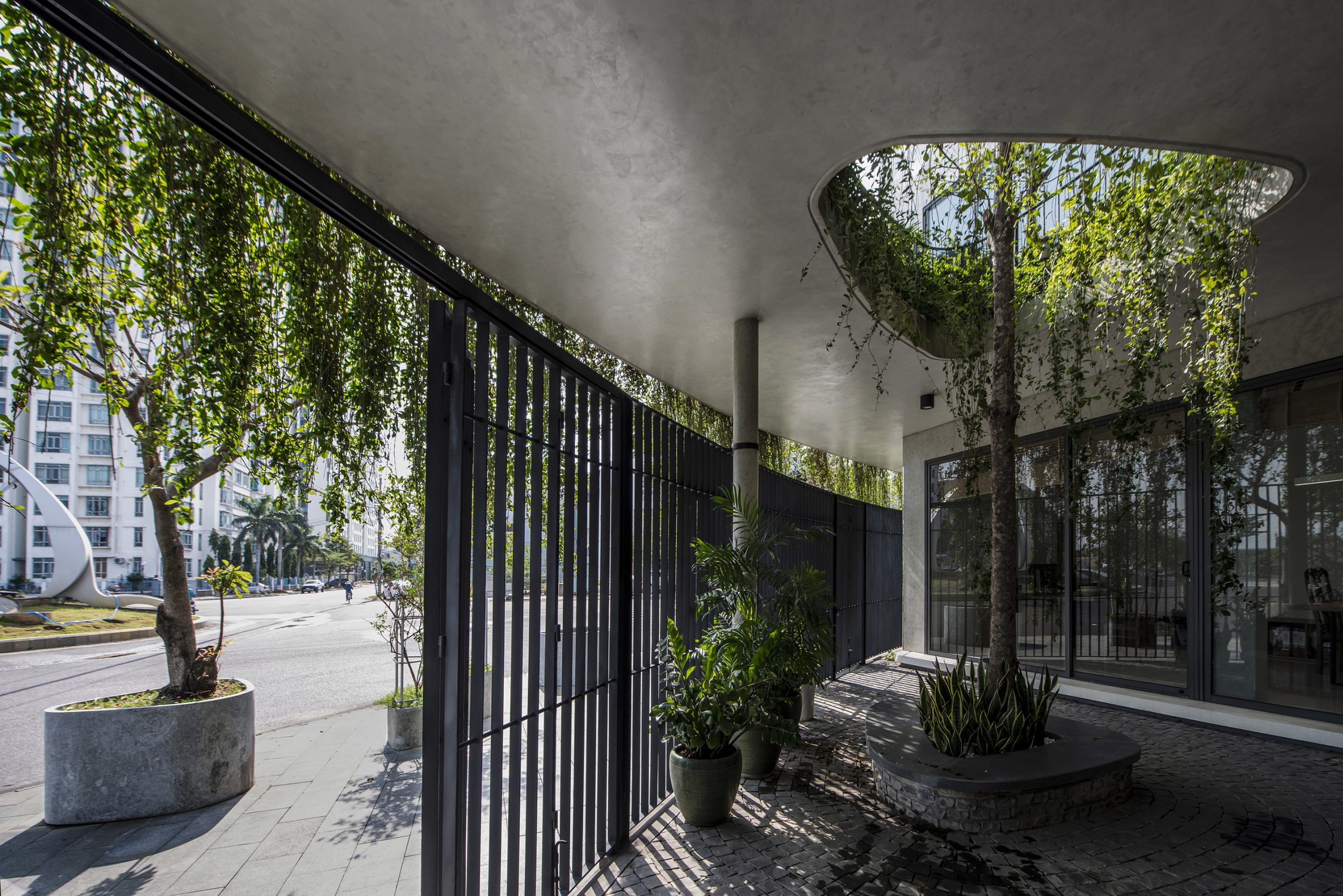
Maison K is the brainchild of Nghia-Architect, a homegrown atelier admired for their imagination and skills, plus an excellent track record in architecture and knowledge of the geography in Vietnam. Their main forte includes a thorough understanding of climate variability since weather conditions can change significantly on the oceanfront, directly affecting how a building performs.
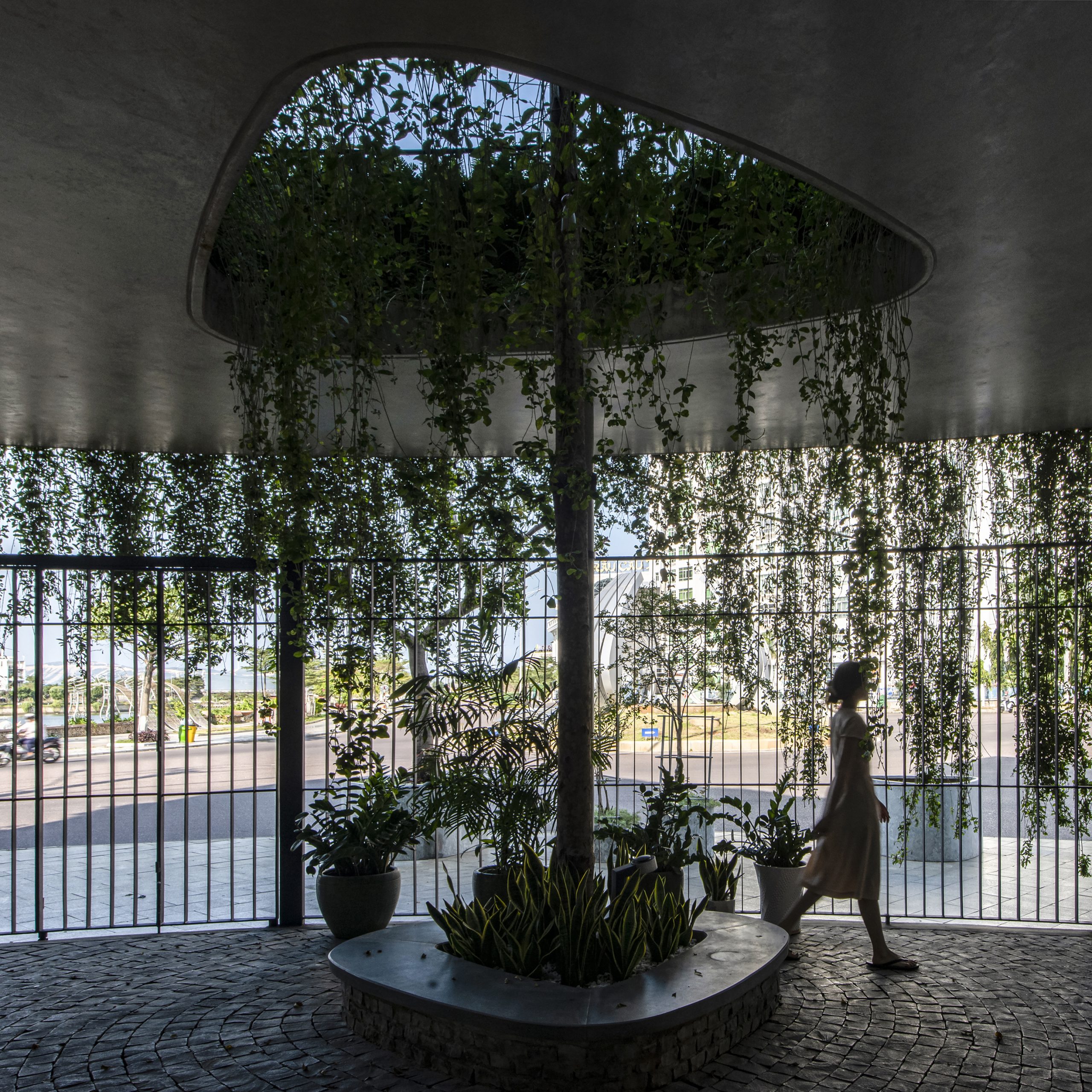
This is especially true in the case of Quy Nhon, which is subject to strong winds in the coastal area, plus hot and humid weather conditions happening from time to time.
As the architect puts it, Quy Nhon being warmer and more humid than other parts of the country, the knowledge and experience in choosing the right materials for the job is imperative, and hence standards be maintained every step of the way.
Understandably, concrete is the mainstay of the construction industry in this part of Vietnam. It’s preferred over other building materials and techniques for its strength and durability, plus it’s resistant to weather and salt damage.
Especially in the context of Quy Nhon, concrete containing broken gray stone is preferred for its wear and tear resistance, plus its pleasing color and texture are sought after in this region.
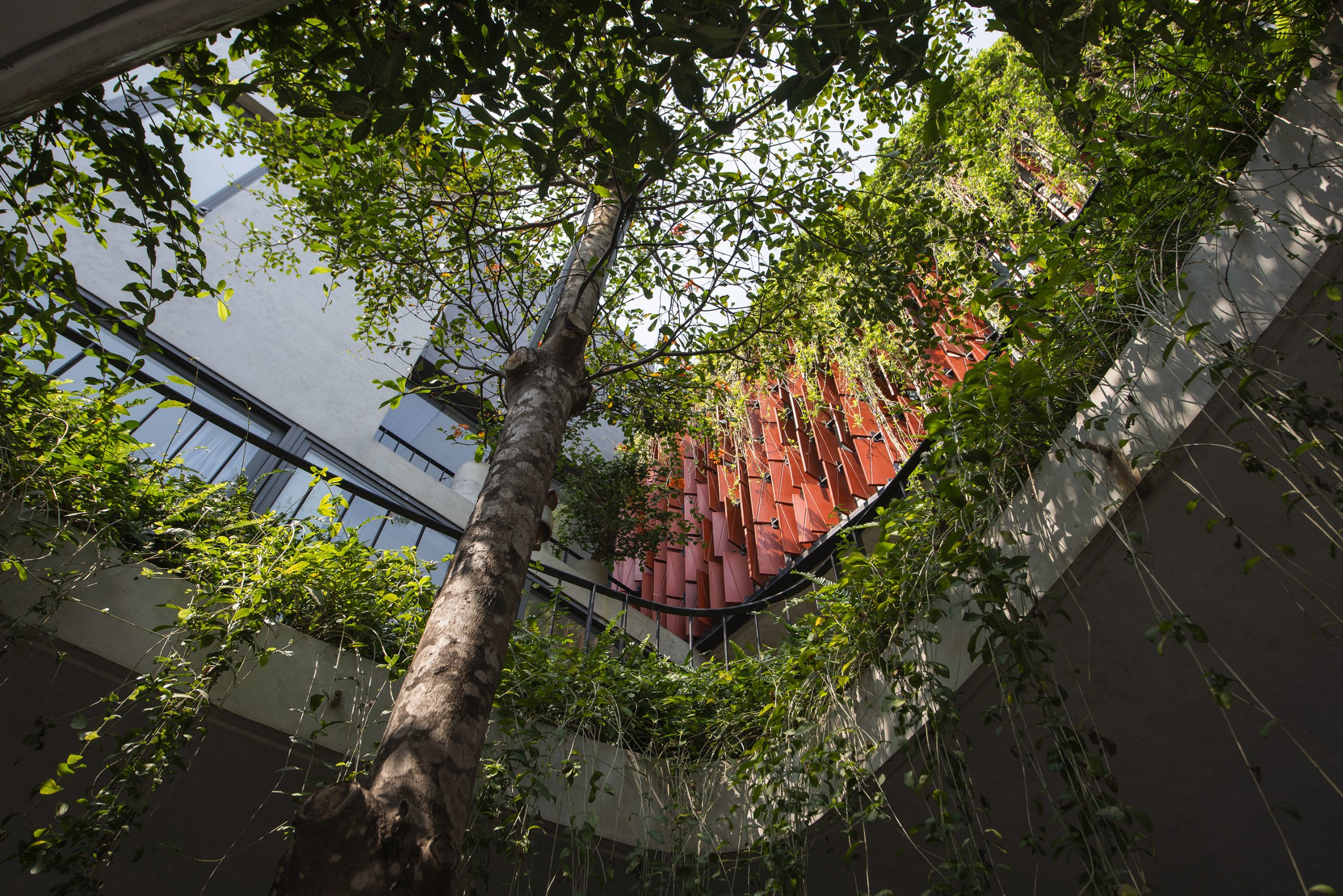
There’s an element of surprise. Maison K sits on land shaped like a piece of pie, a quarter of a circle, so to speak. That being the case, the architect thought it best to put in an L-shaped building with one side open to take in the beautiful view of a nearby lake.
Plus, it’s in compliance with the city ordinance in effect at present. To facilitate business operations, he put the office space downstairs and all the family living areas on the upper floors where it’s quiet and more private.
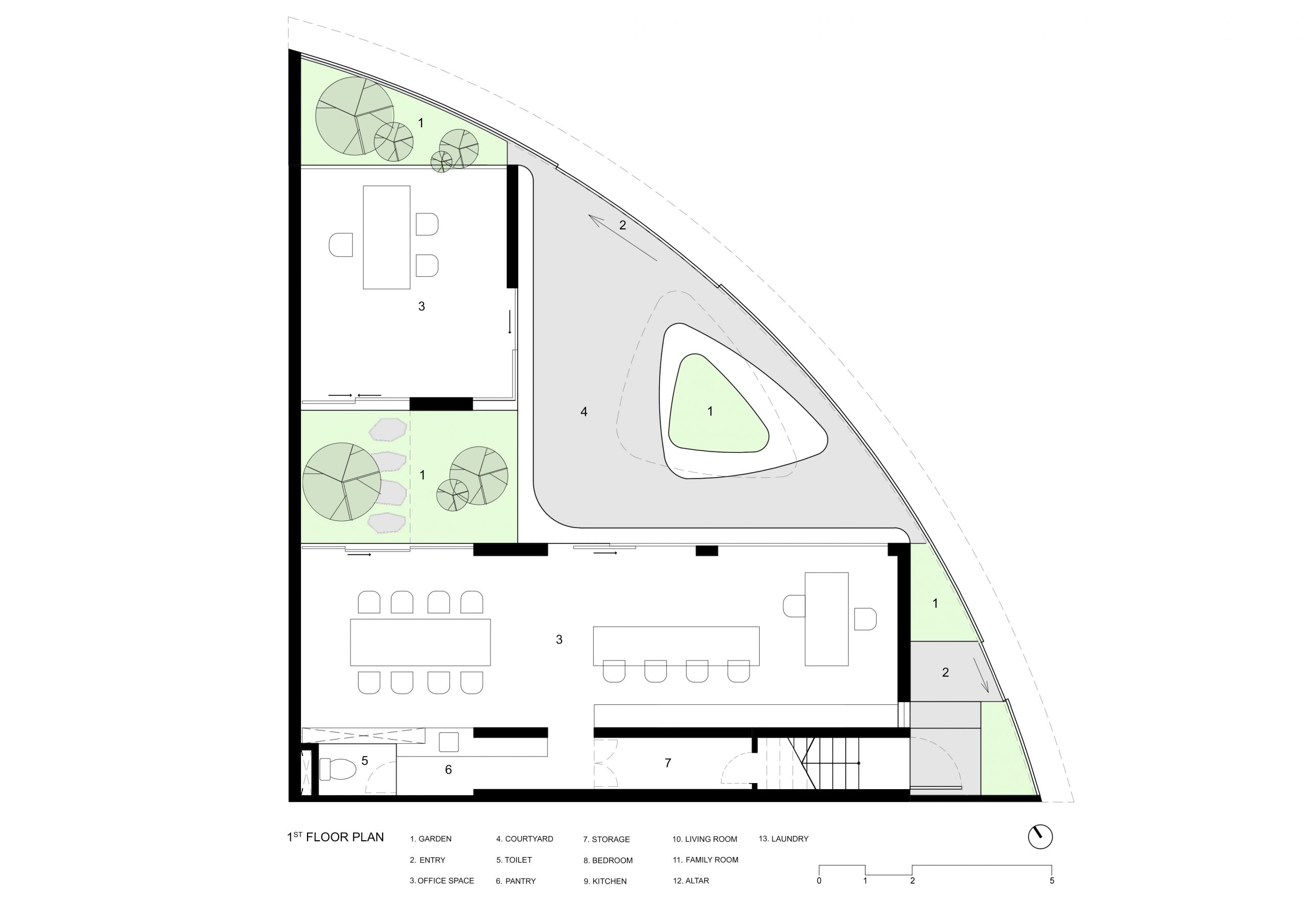
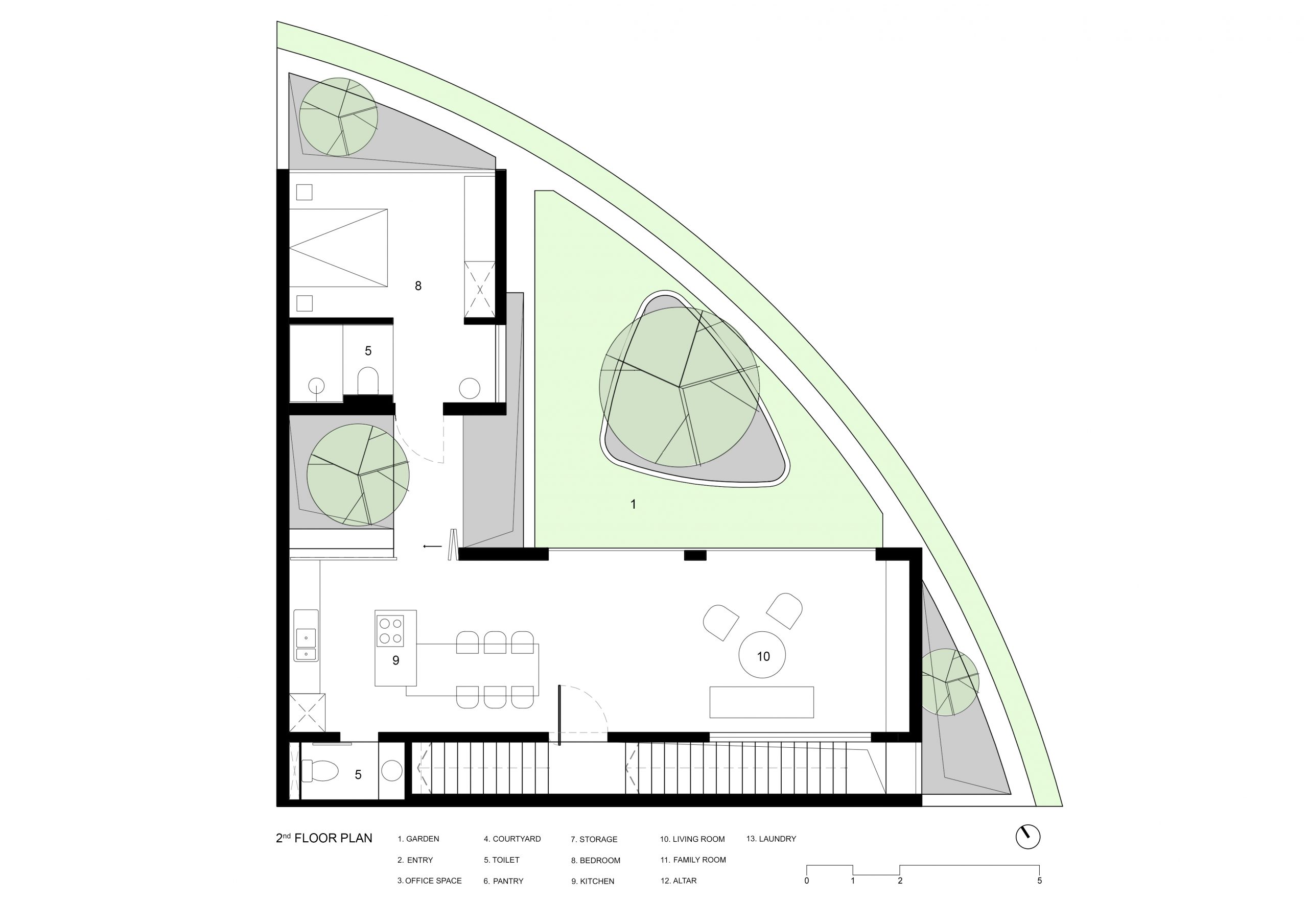
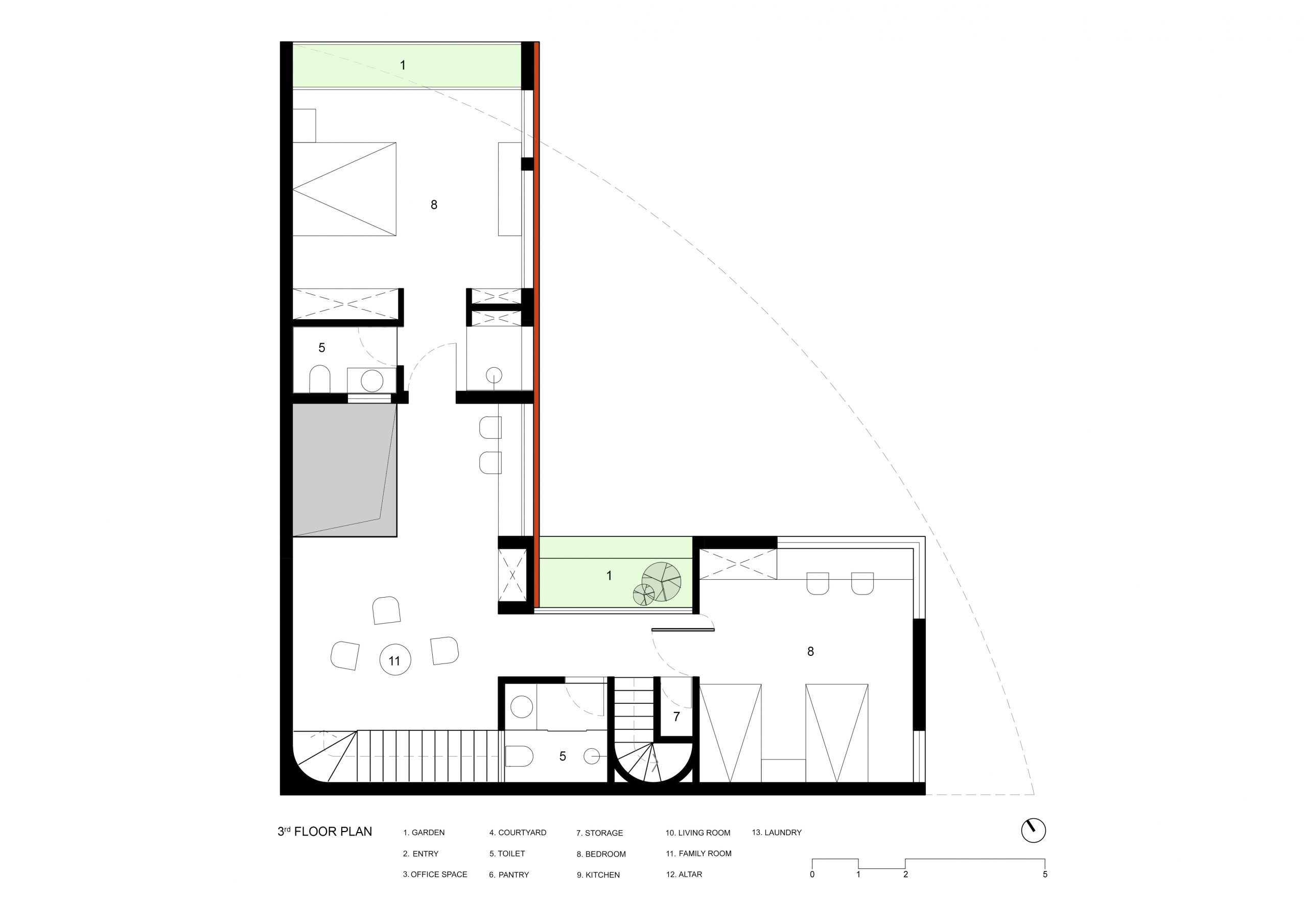
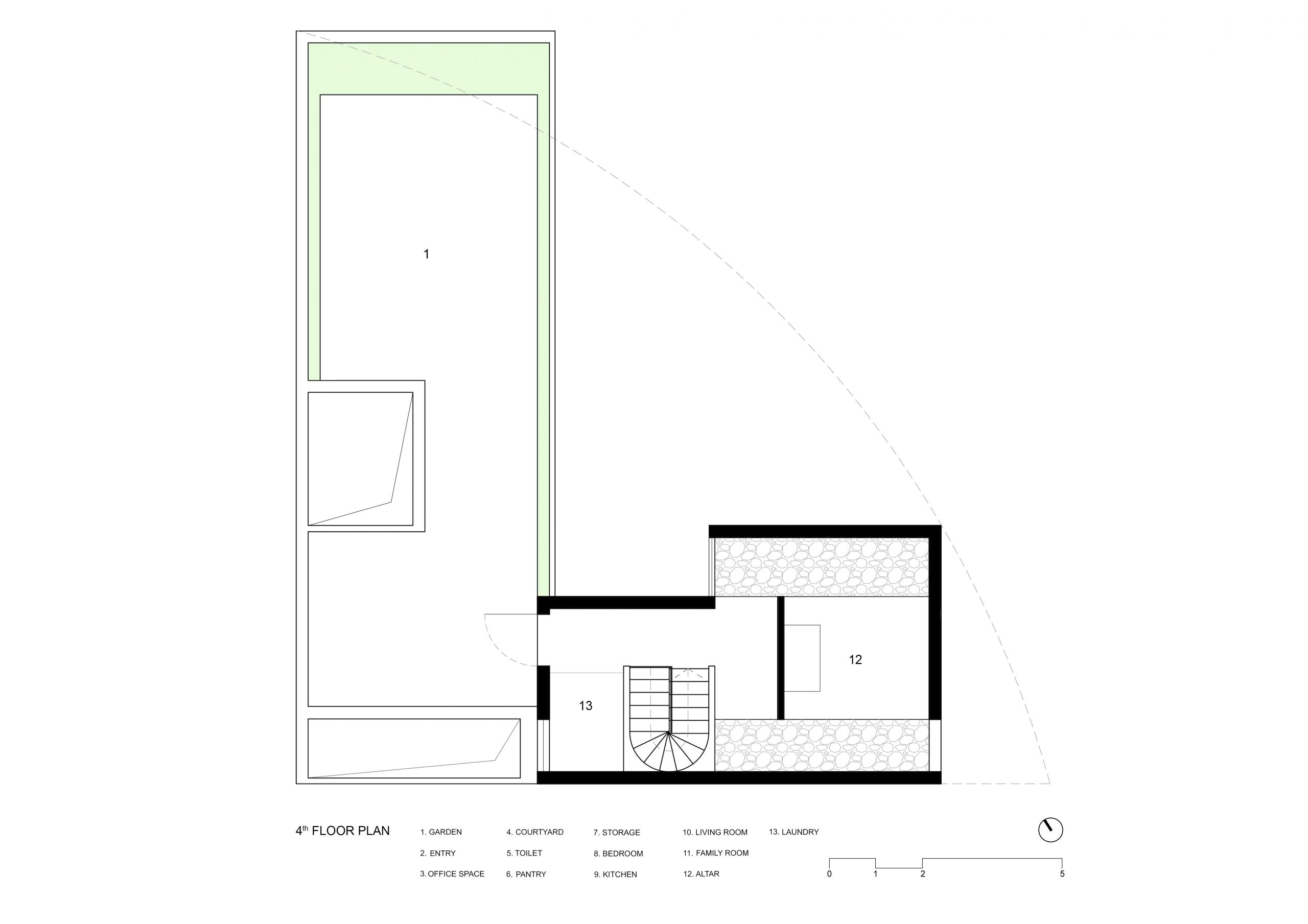
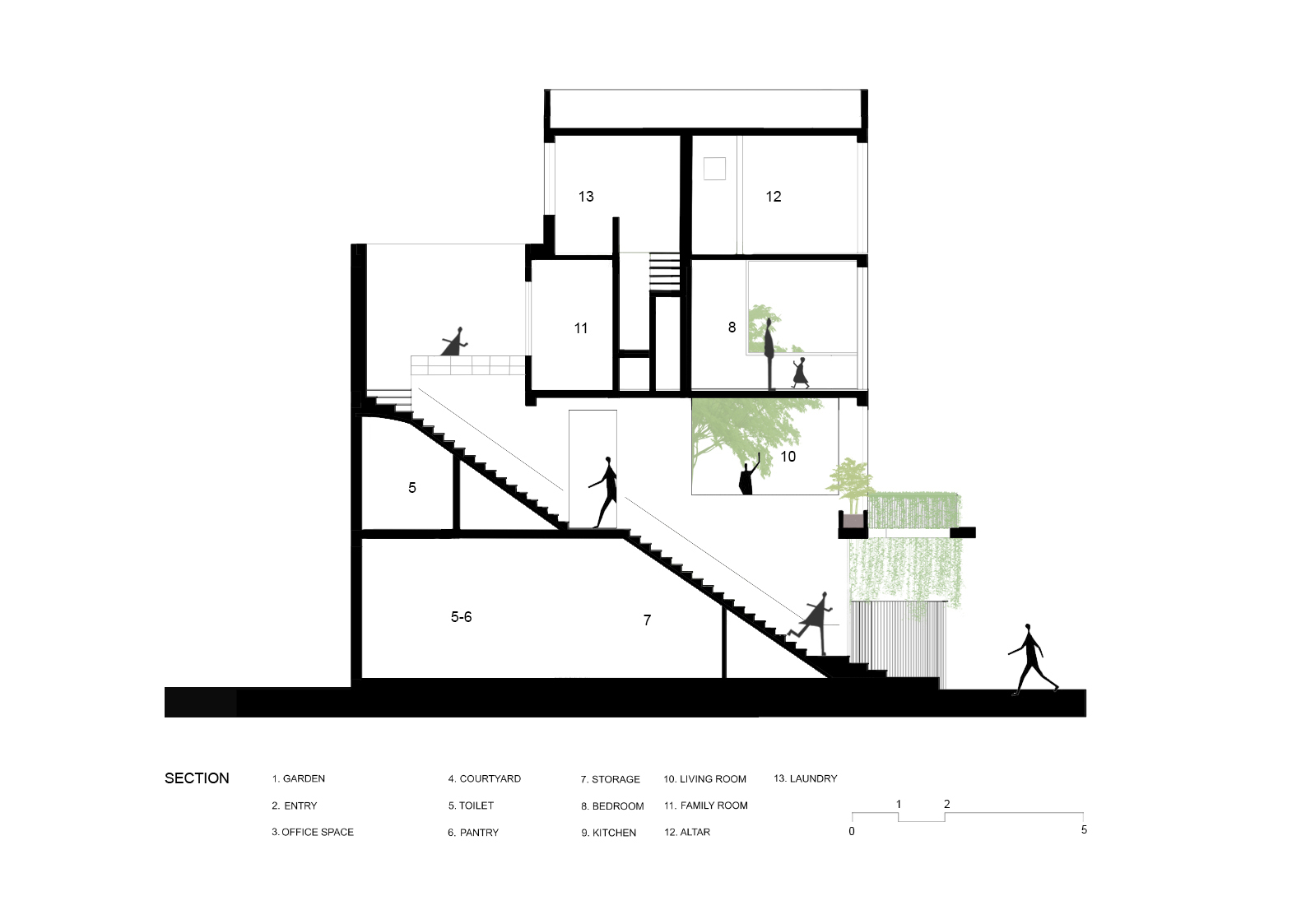
For practical reason, the office and residential spaces each have separate entrances. The office itself is conveniently accessed from the covered parking area. Sliding doors glazed using clear glass make the business space warm and welcoming.
The residential entry area is made less visible by design. It’s an ordinary swing door tucked away in a quiet place. Upon entering, you find a flight of stairs leading to the second floor that’s the first step into the home.

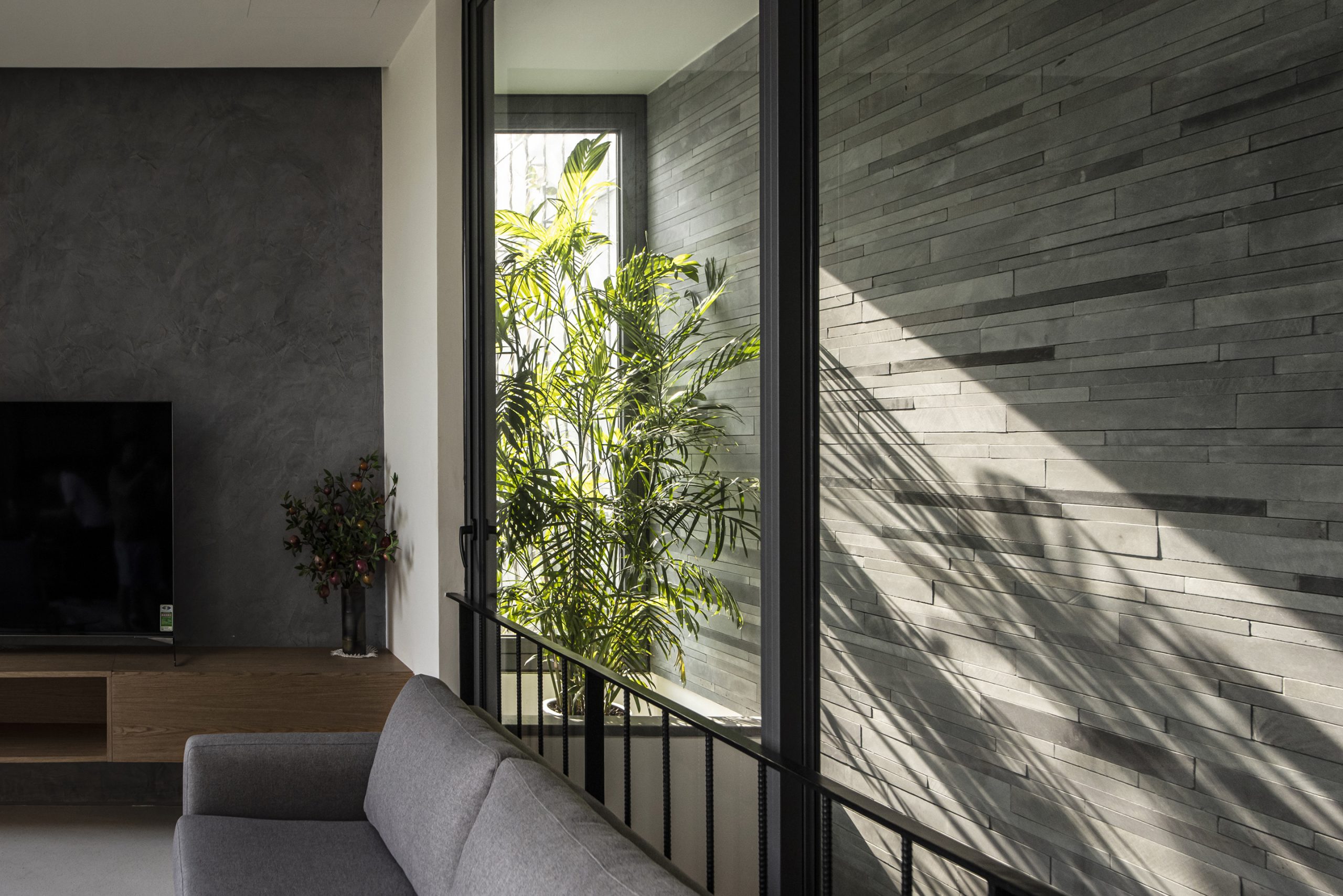
Overall, the home interior is simple and clean with the clearly defined order for space utilization. Where appropriate and legal, the architect put in generous openings in the exterior walls to connect the indoors with outdoor spaces. And the result of all this is a feature wall on the side overlooking the covered carport.
It’s an architectural feature that’s easily noticeable and immediately appealing from a distance. Apart from adding visual interest to the building’s external envelope, it allows plenty of fresh air and natural light, creating a relaxed ambience in the indoor living spaces.
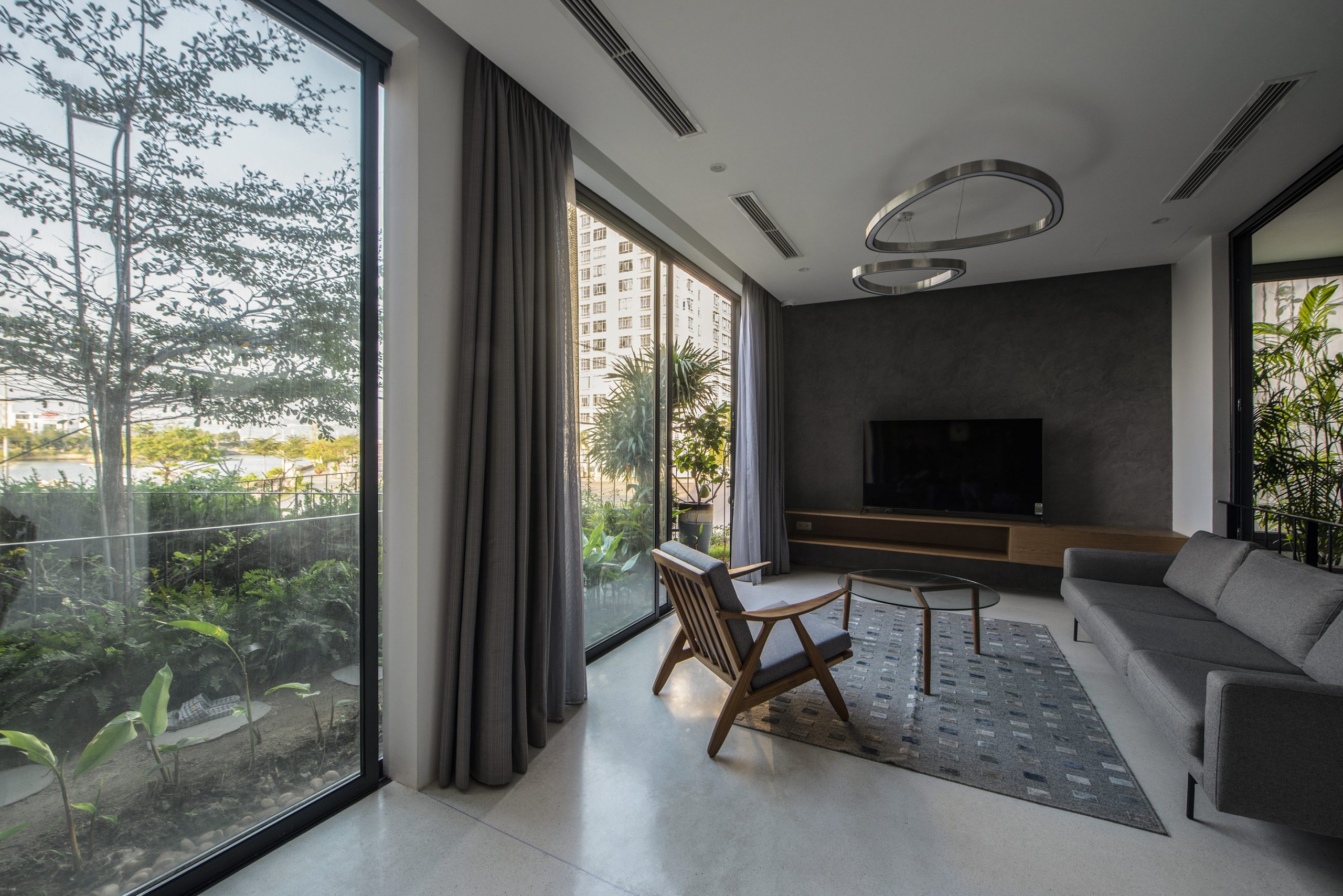
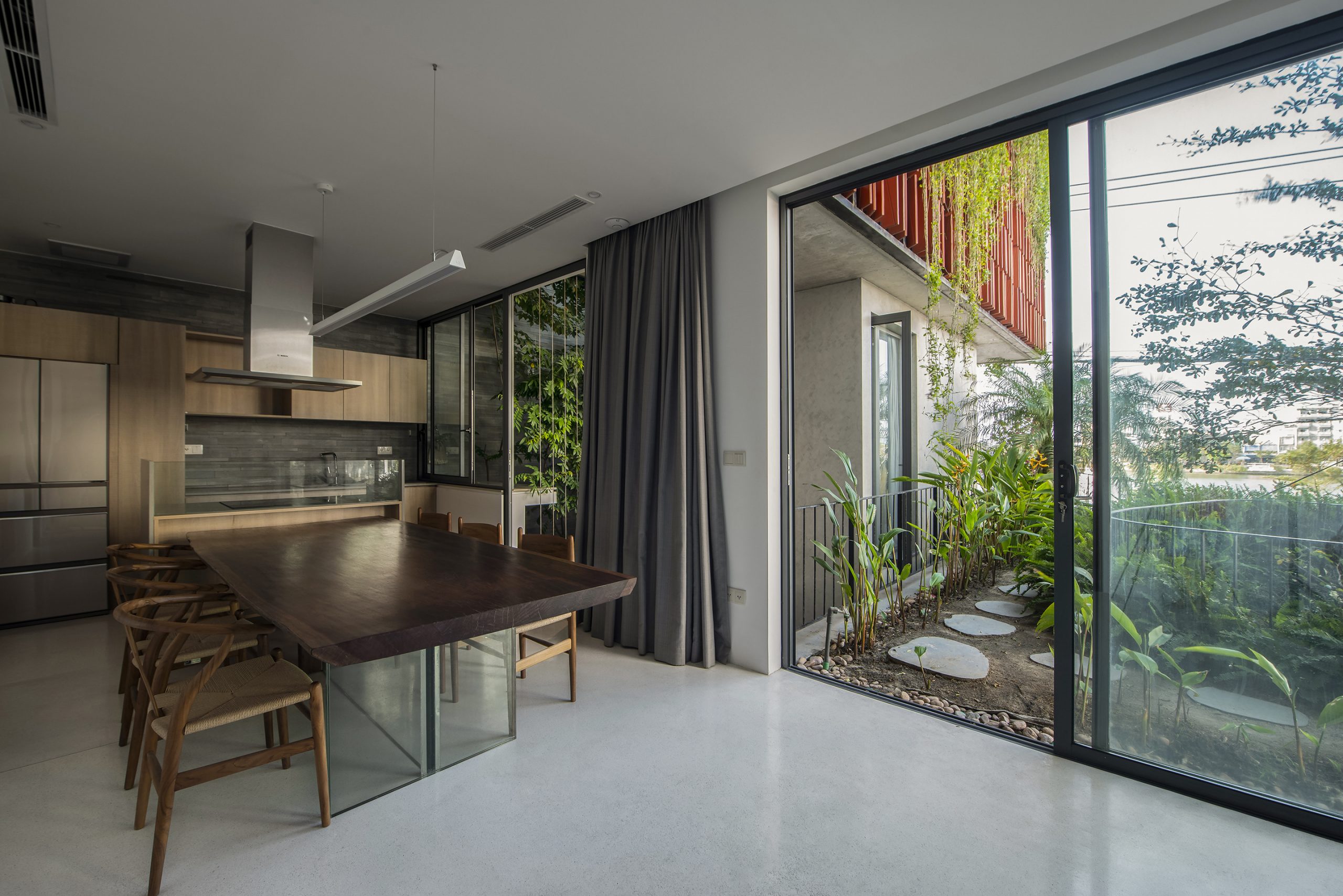
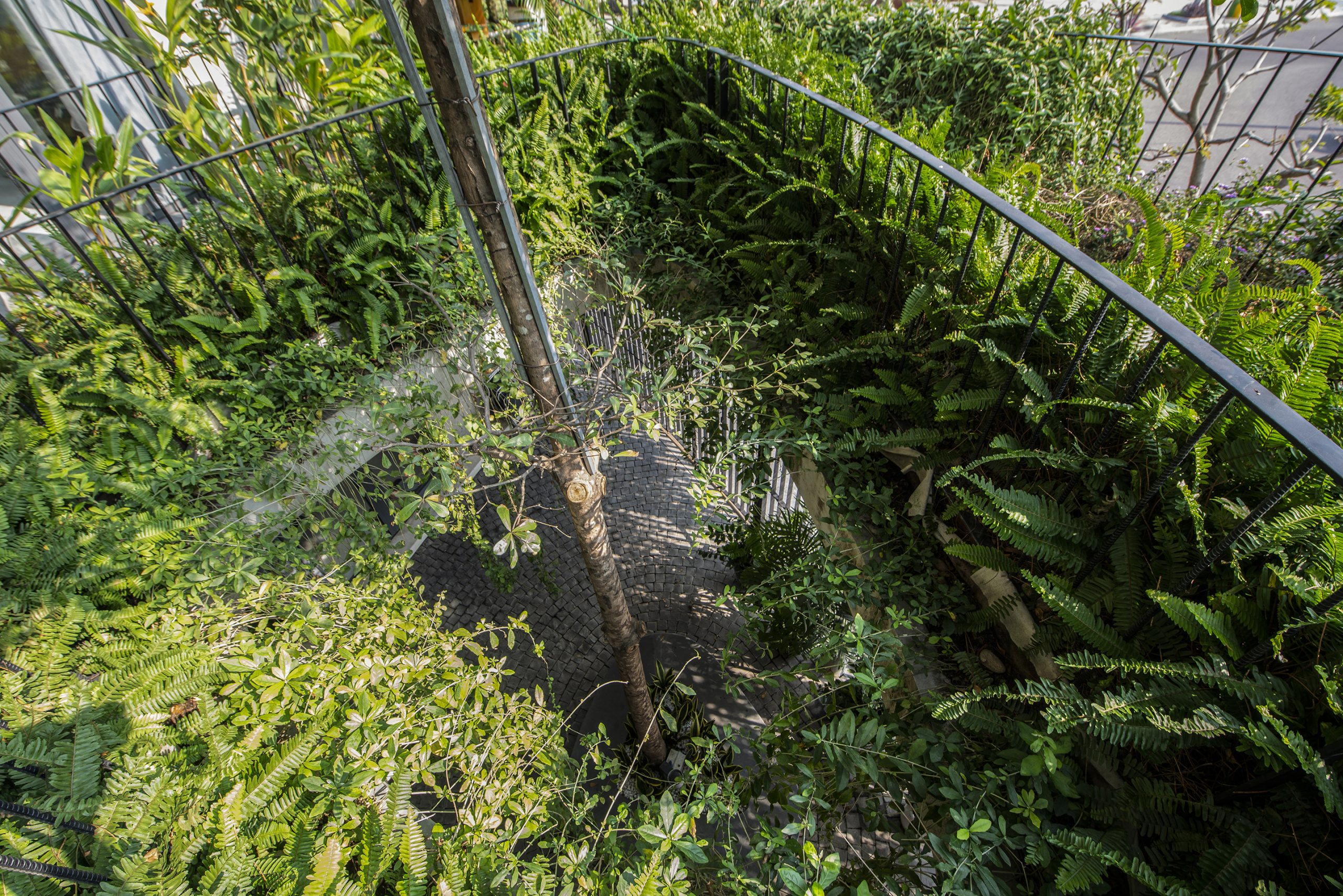
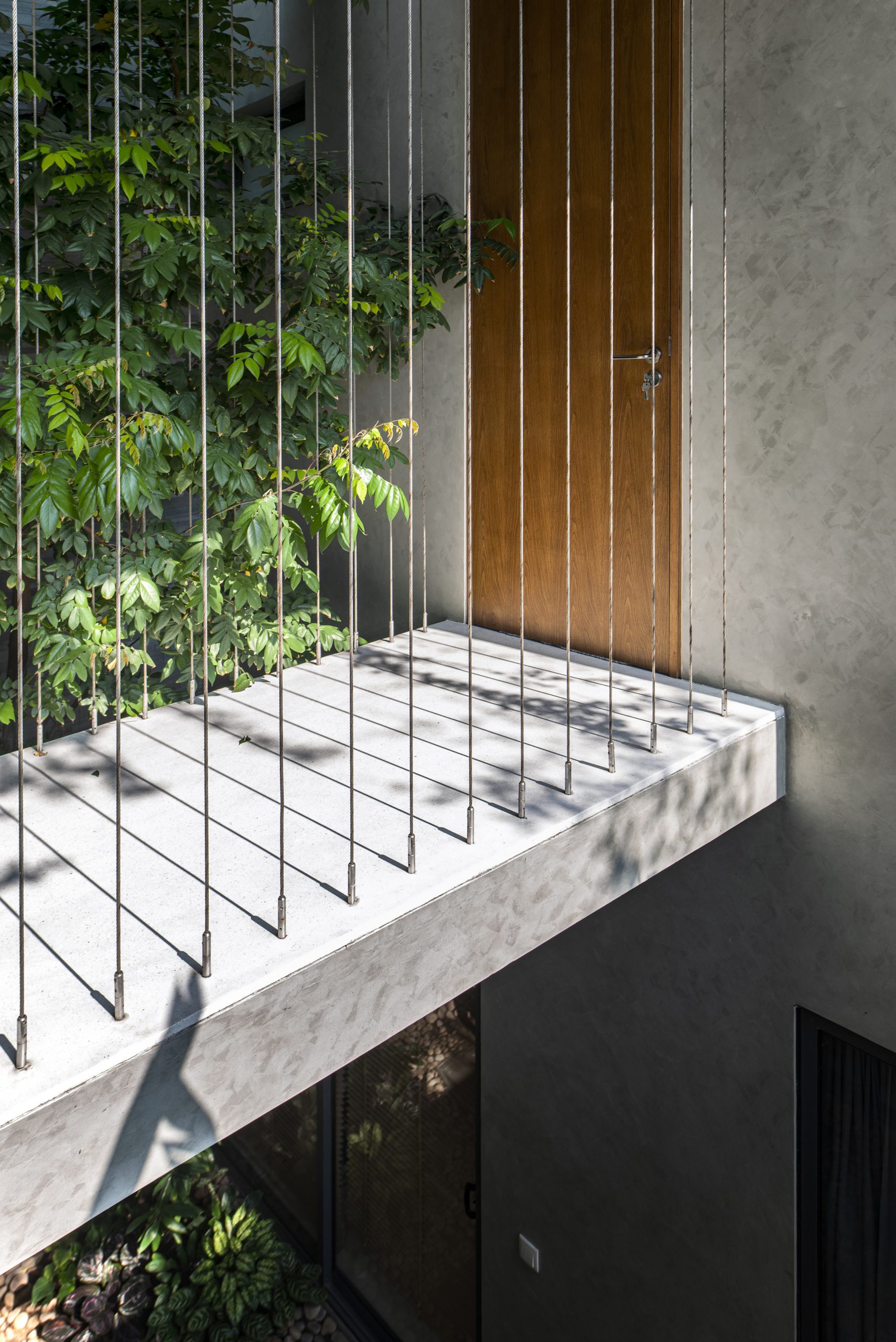
Pursuant to the city ordinances in effect at present, only two sides of the exterior overlooking the traffic circle and the street below are permitted to have openings in the walls. The other two sides adjacent to neighboring buildings do not enjoy the same privilege.
However, what is lacking due to limitations is nicely compensated for by rooftop skylights that illuminate the stairwell and other parts at the rear of the home. It’s a practical solution that helps reduce electricity costs and protect against humidity damage over a long period of time.
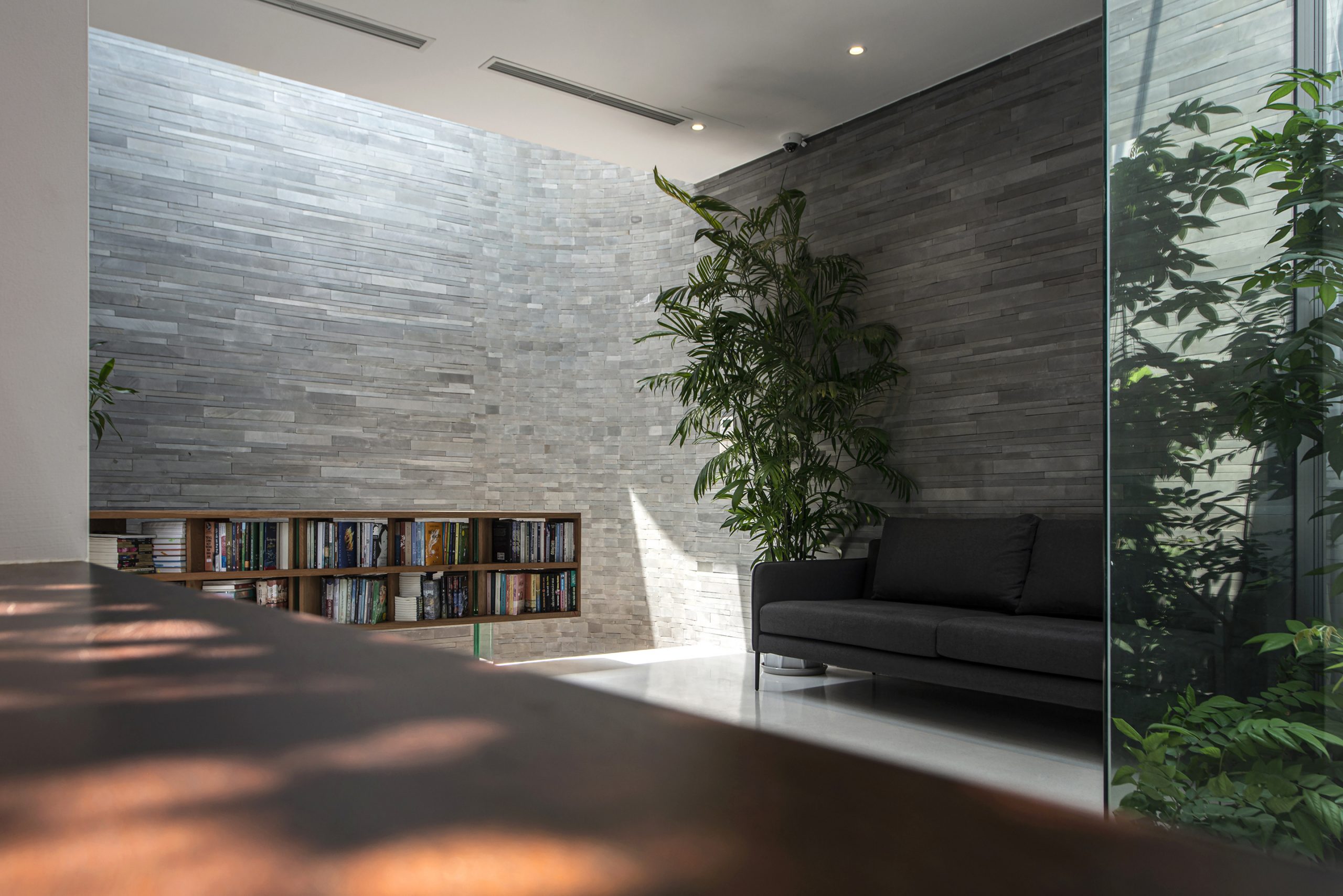
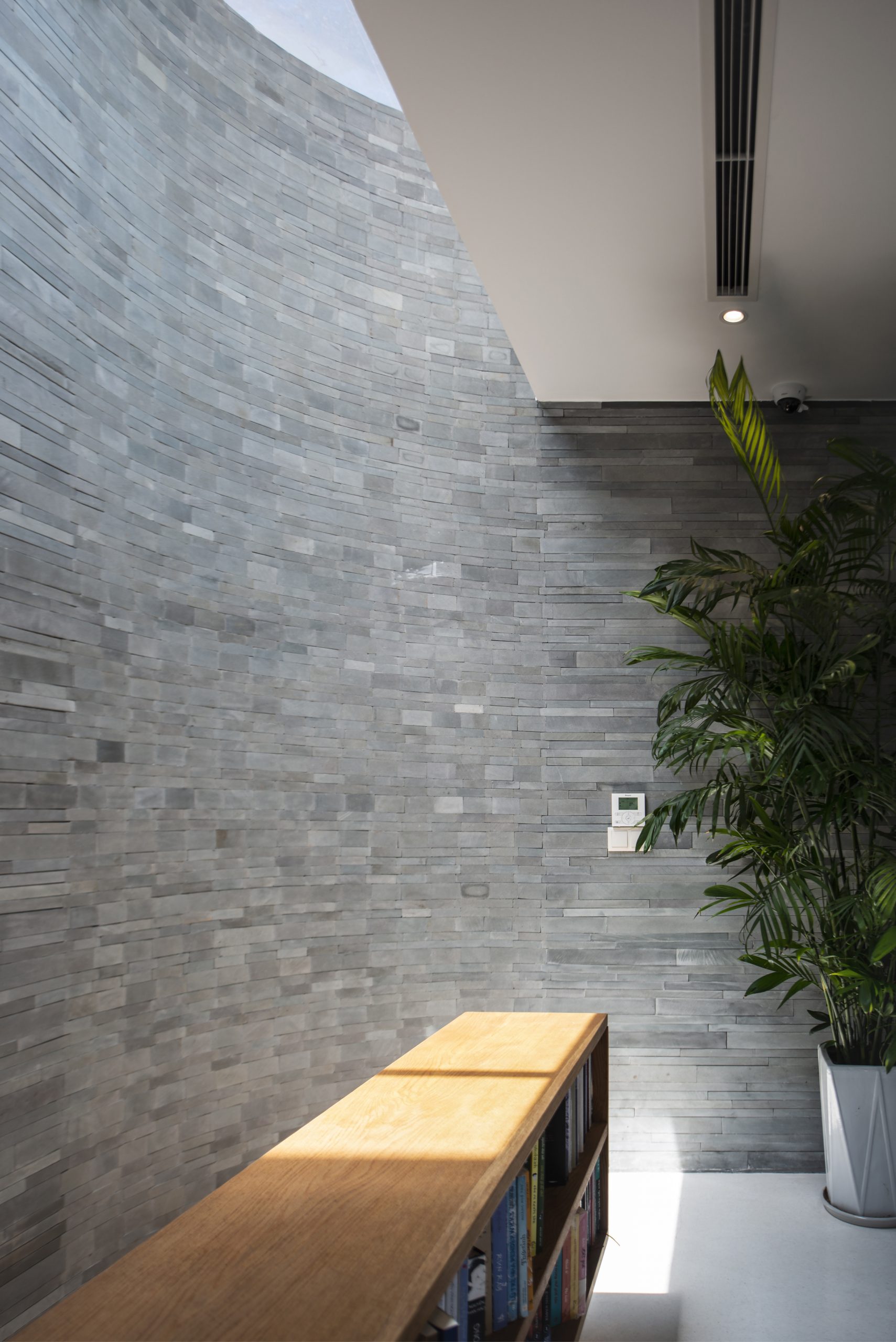
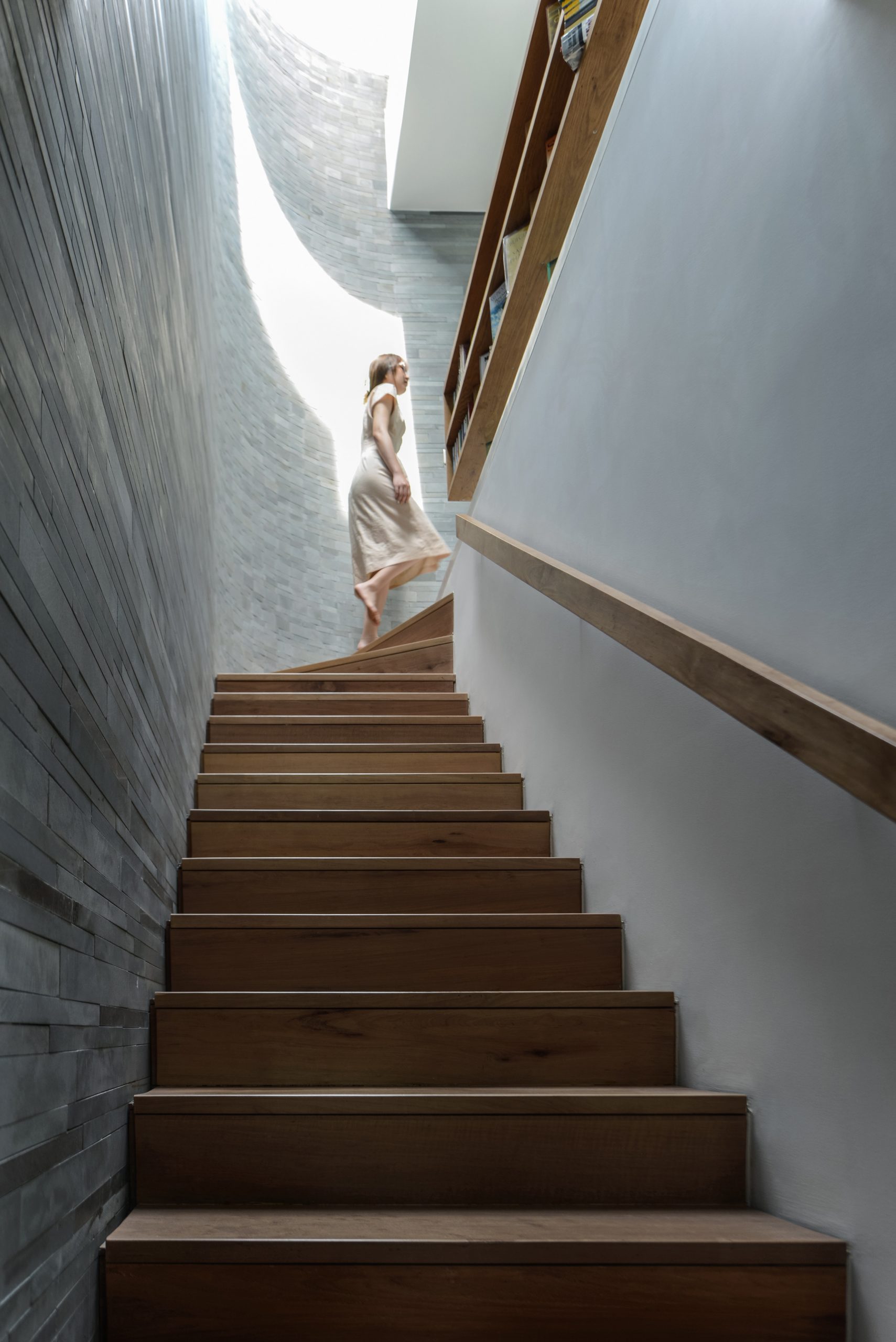
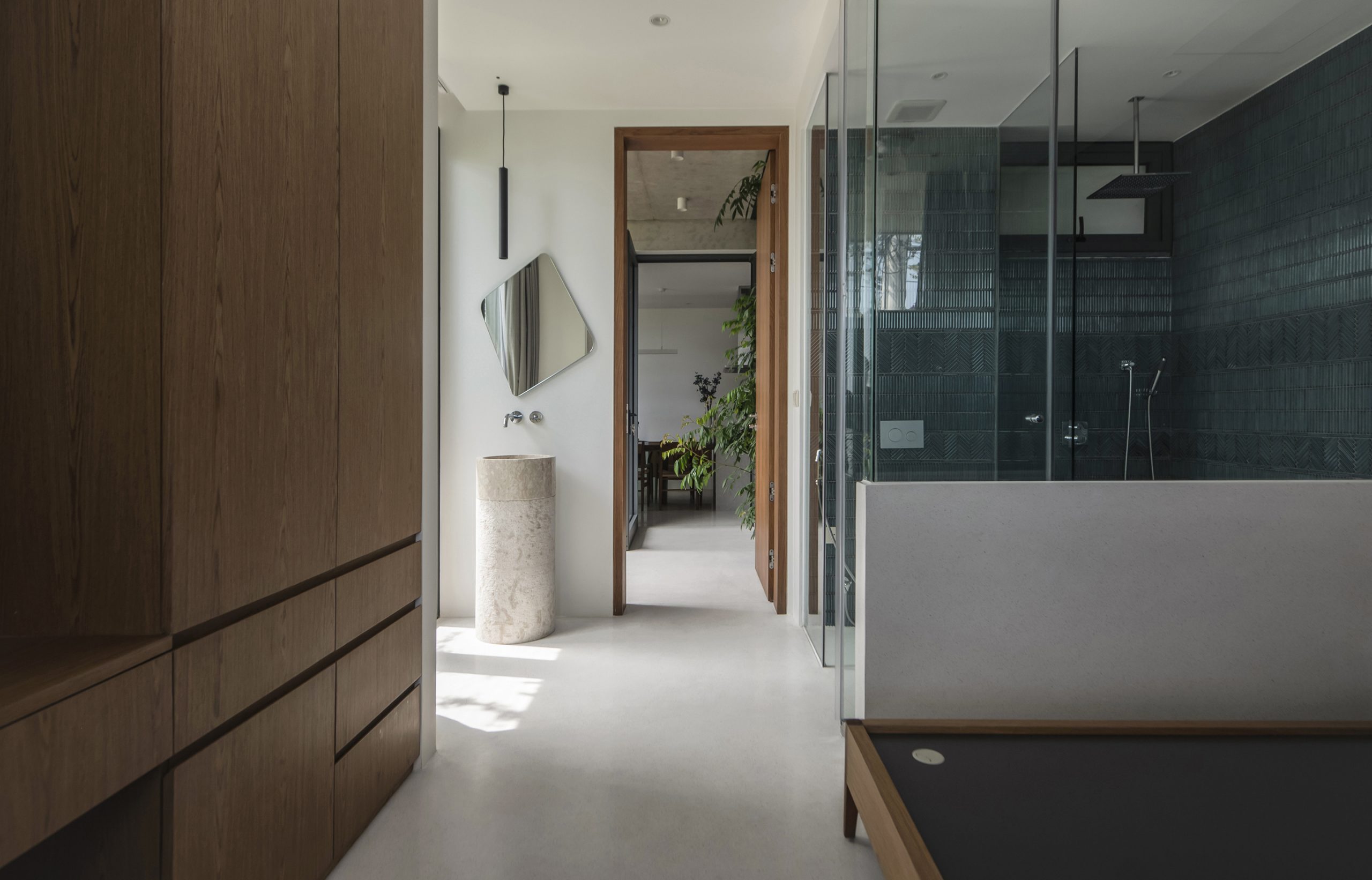
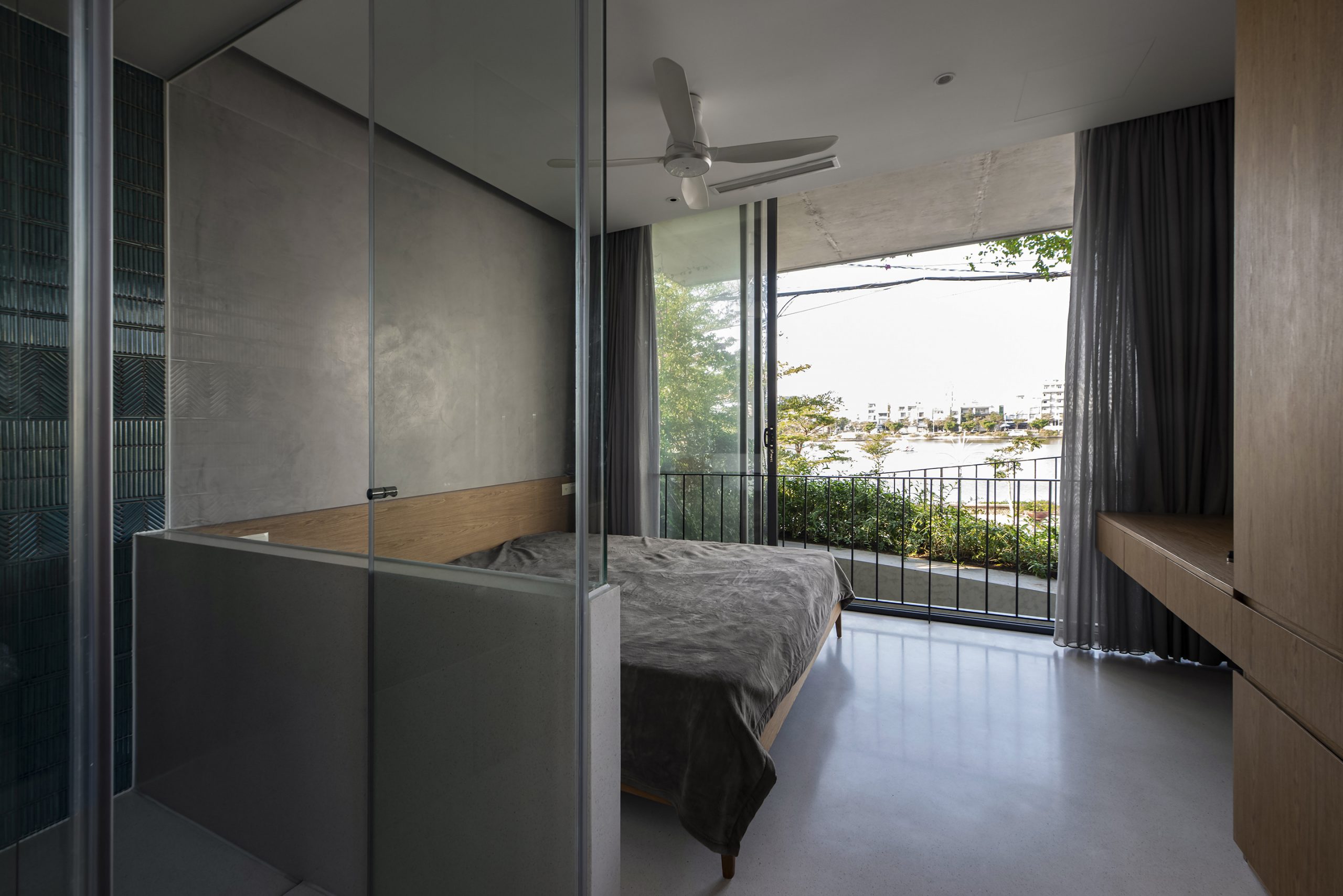
Meanwhile, the other two sides have an unobstructed view of the roundabout and the street below. Climb another flight of stairs, and you come to the third floor holding the family’s main living area that’s protected by the feature wall of shimmering ceramic panels in muted shades of orange.
Together they provide a layer of insulation against heat and stress, protecting the gray concrete wall behind it. The ceramic panels that form the first line of defense are hinged on one side and swing open like doors to control light and winds passing through. The panels have grooves in them so as to drain stormwater fast in heavy rain.


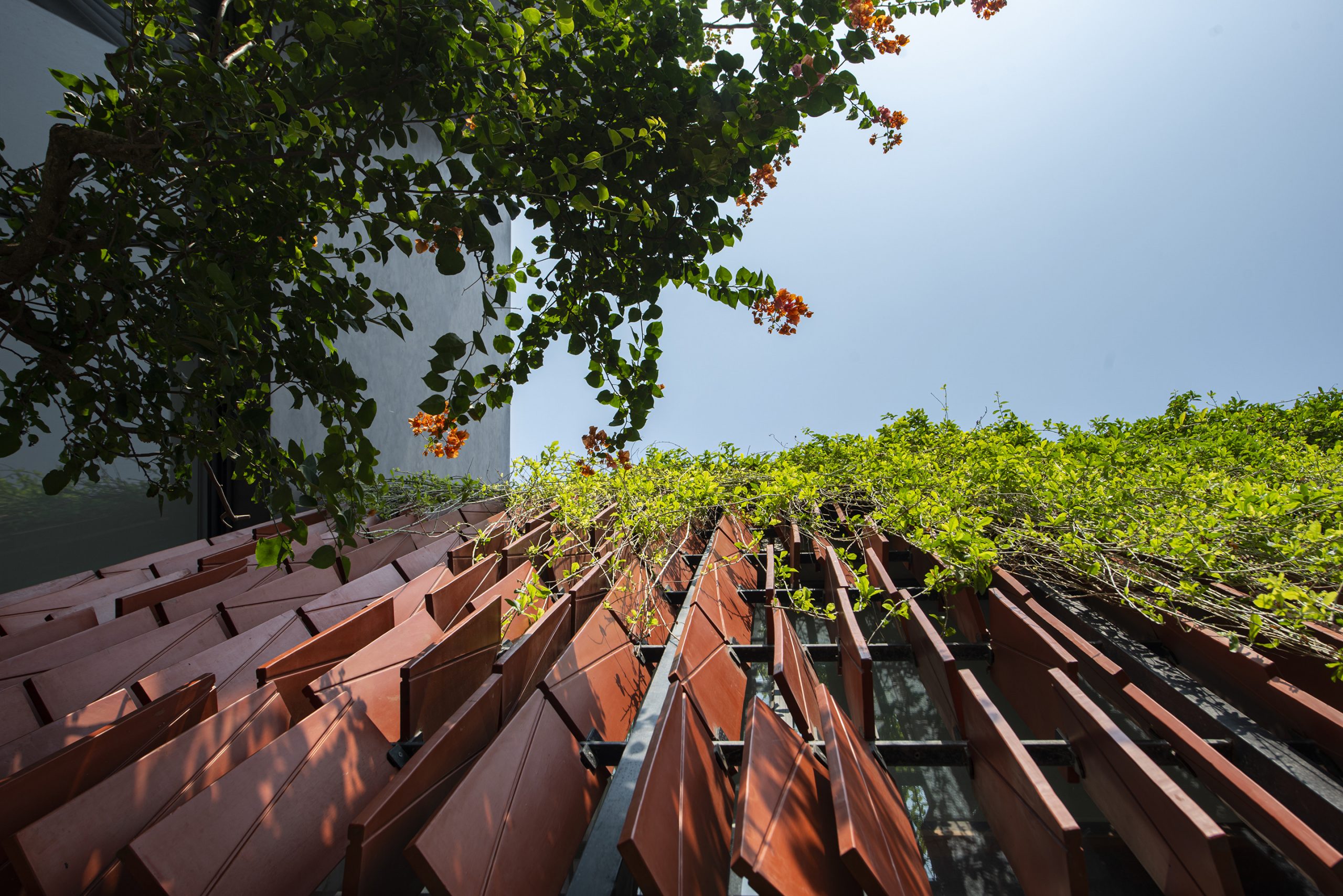
All things considered, it’s a revolutionary idea that integrates greenery as an integral part of architectural design. Green spaces offer multiple health benefits. Among other things, they give the building its character, provide shade and improve air quality.
From a distance, they add visual interest to the urban space around the traffic circle. More so than anything else, it’s the lively green and orange façade that creates a gently calming effect for people passing by.
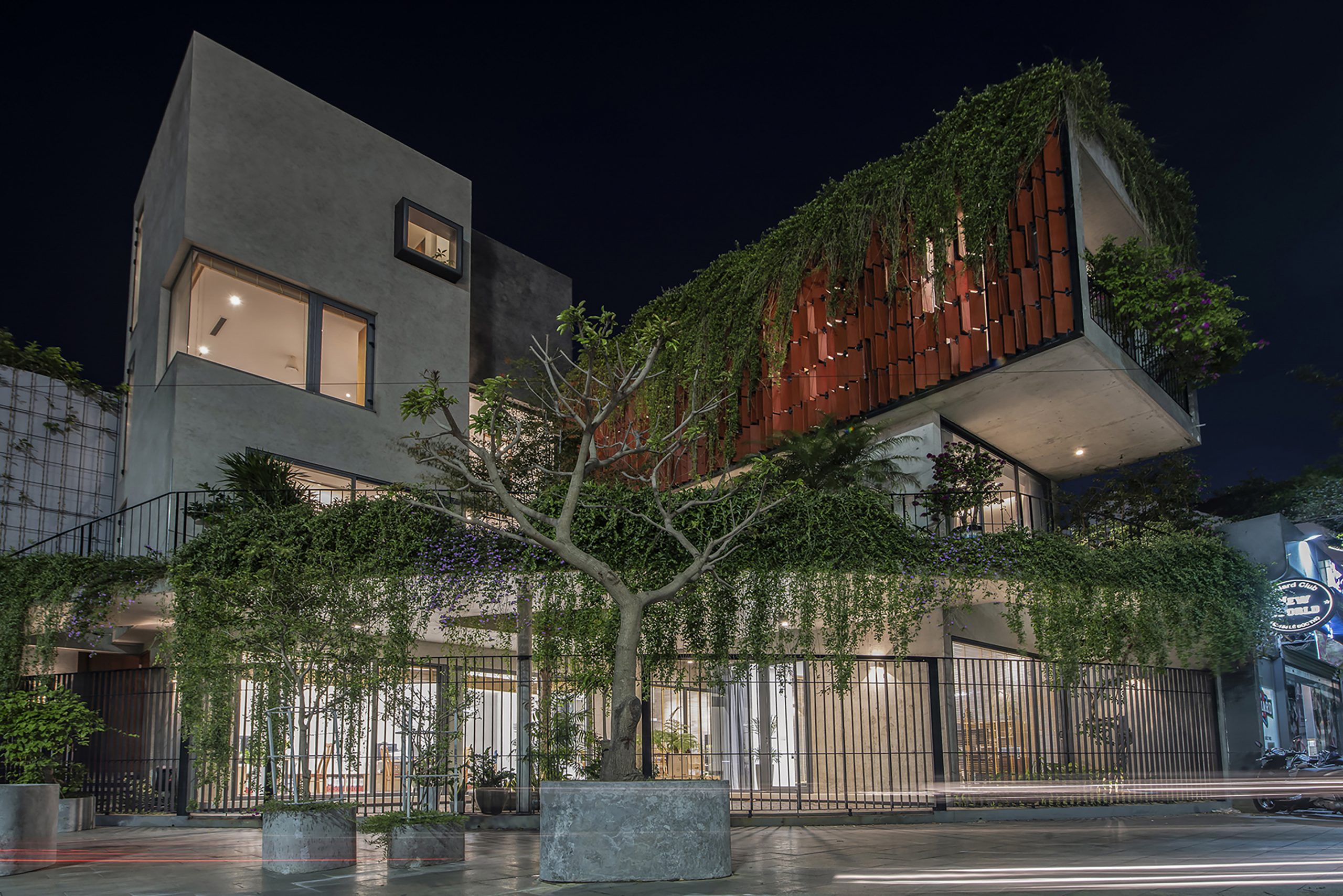
Architect: Nghia Architect (www.nghiaarchitect.com)
Lead Architect: Nguyen Tuan Nghia
You may also like…
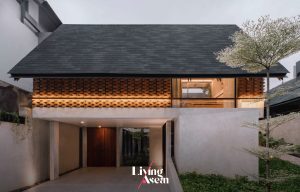 ACH House: An Airy, Bright and Well Composed Indonesian Home
ACH House: An Airy, Bright and Well Composed Indonesian Home
 Tile House: Façades of Glimmering Tiles with a Story to Tell
Tile House: Façades of Glimmering Tiles with a Story to Tell

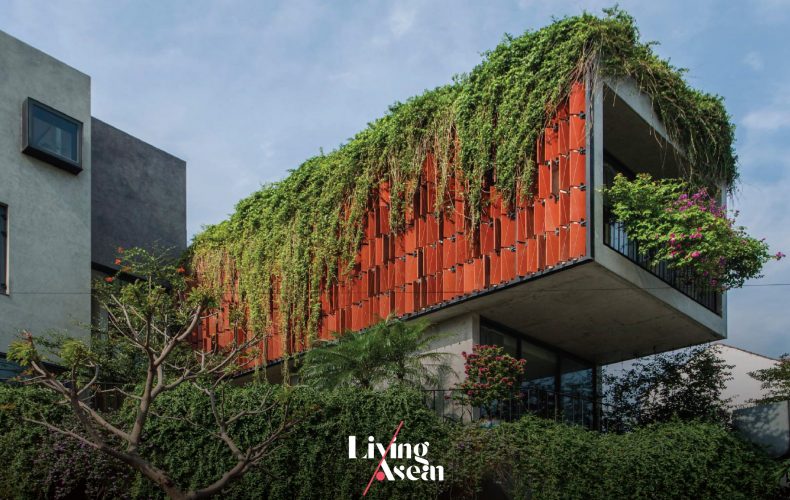
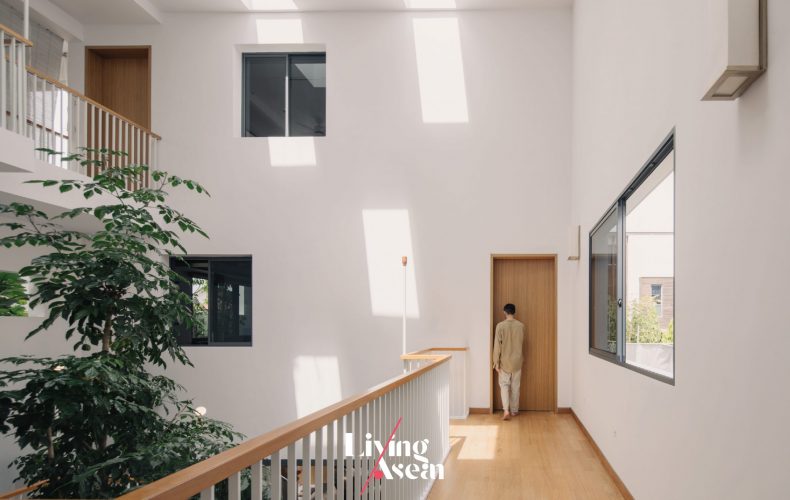
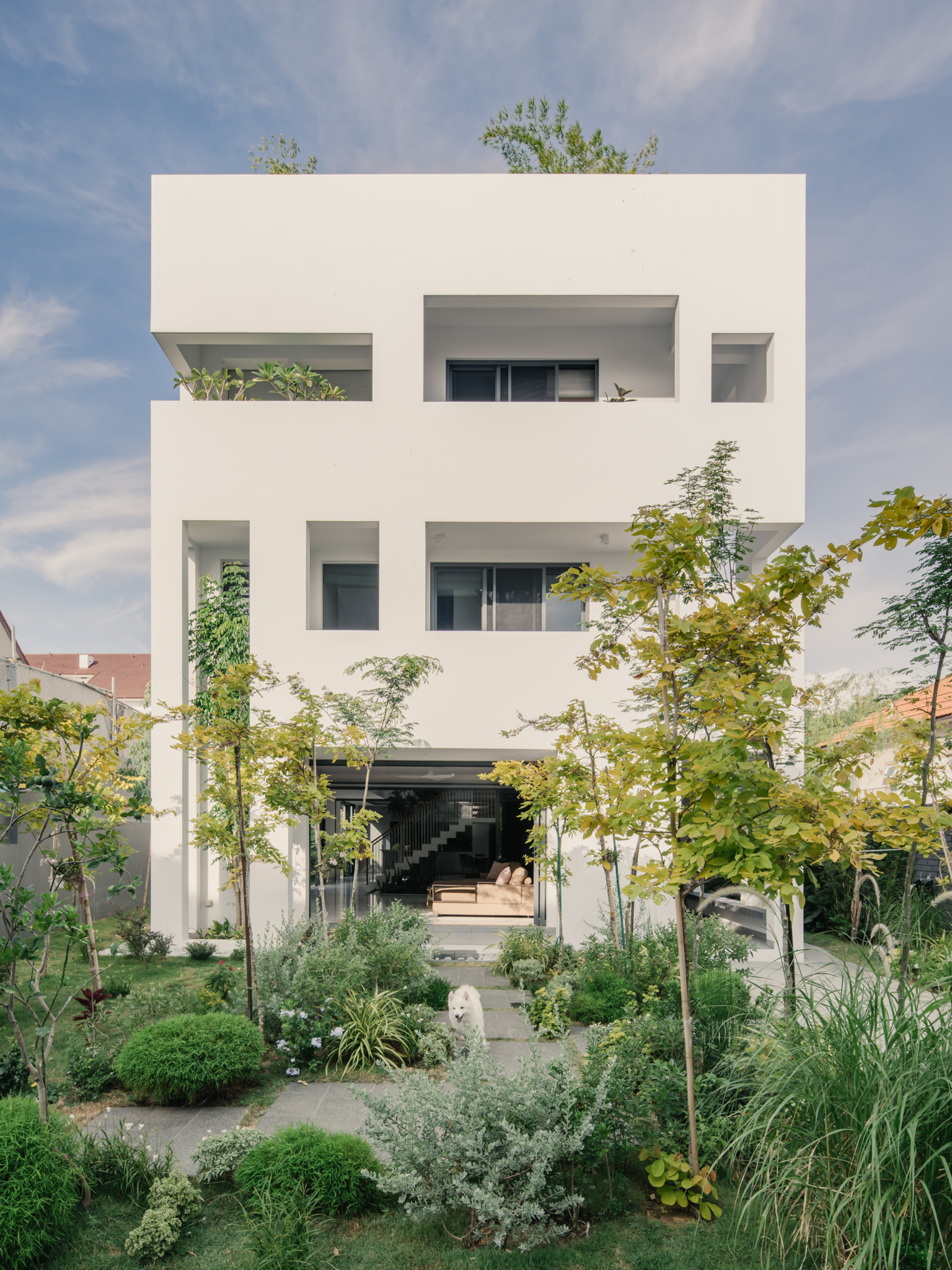
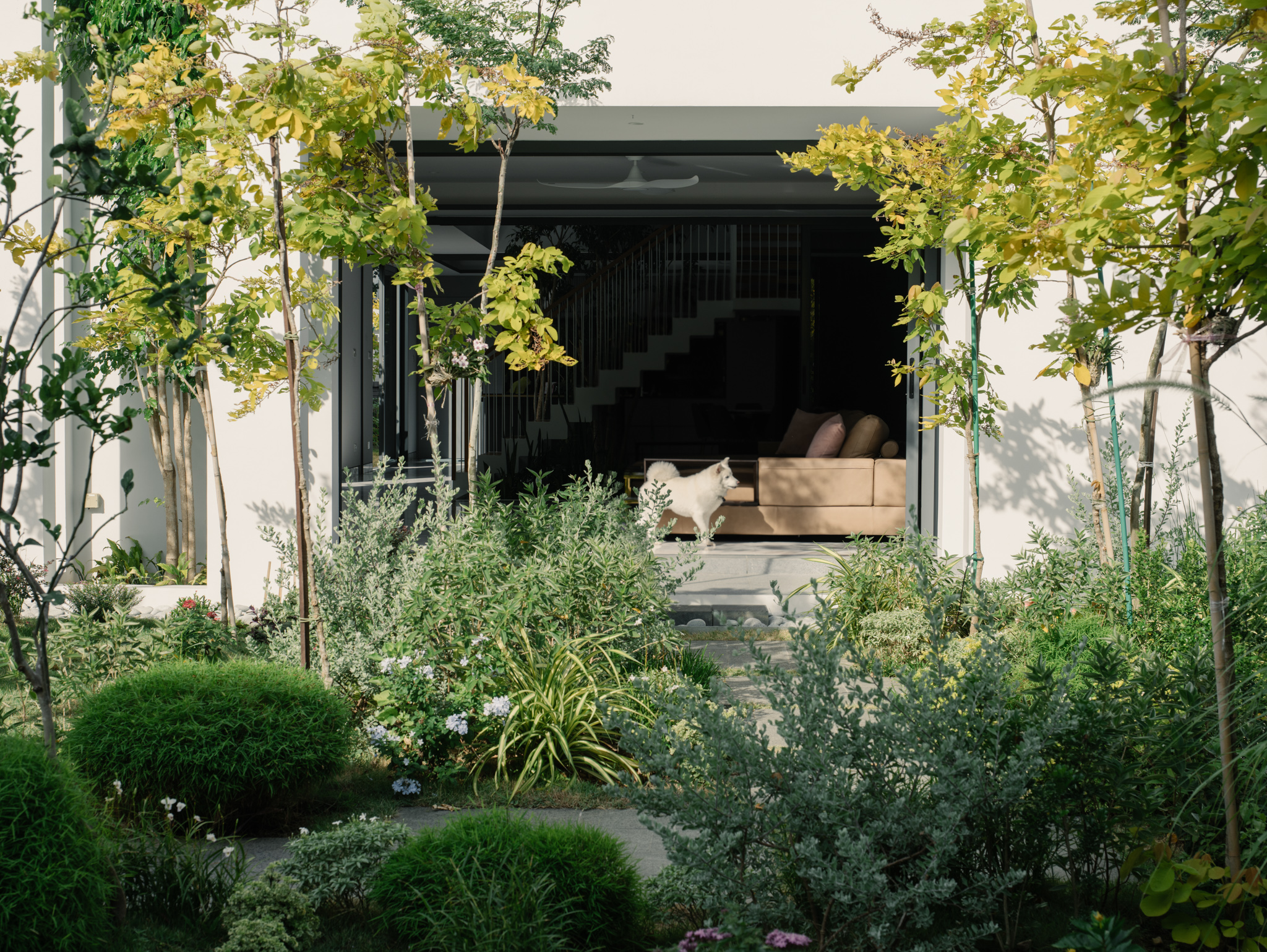
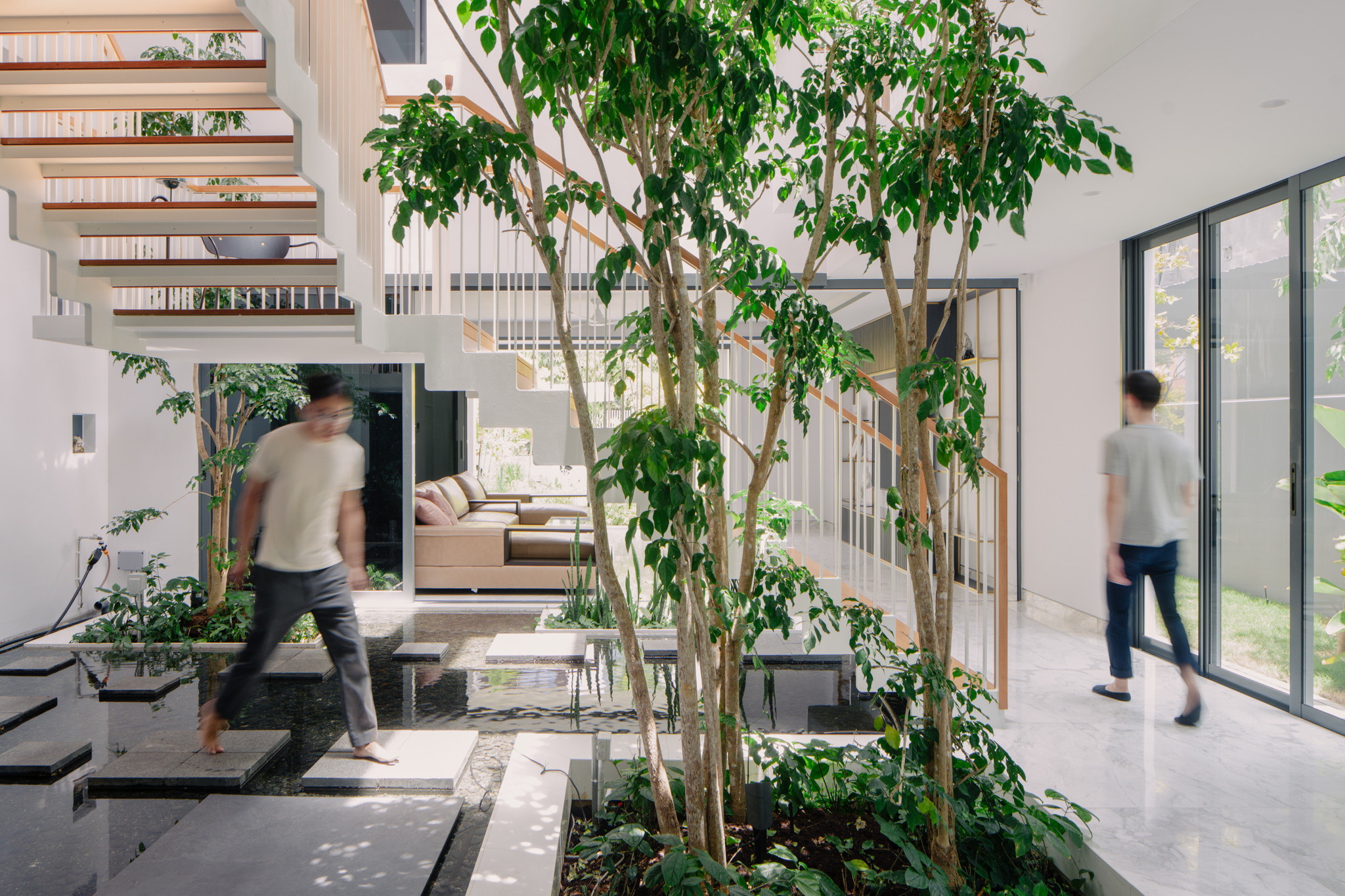
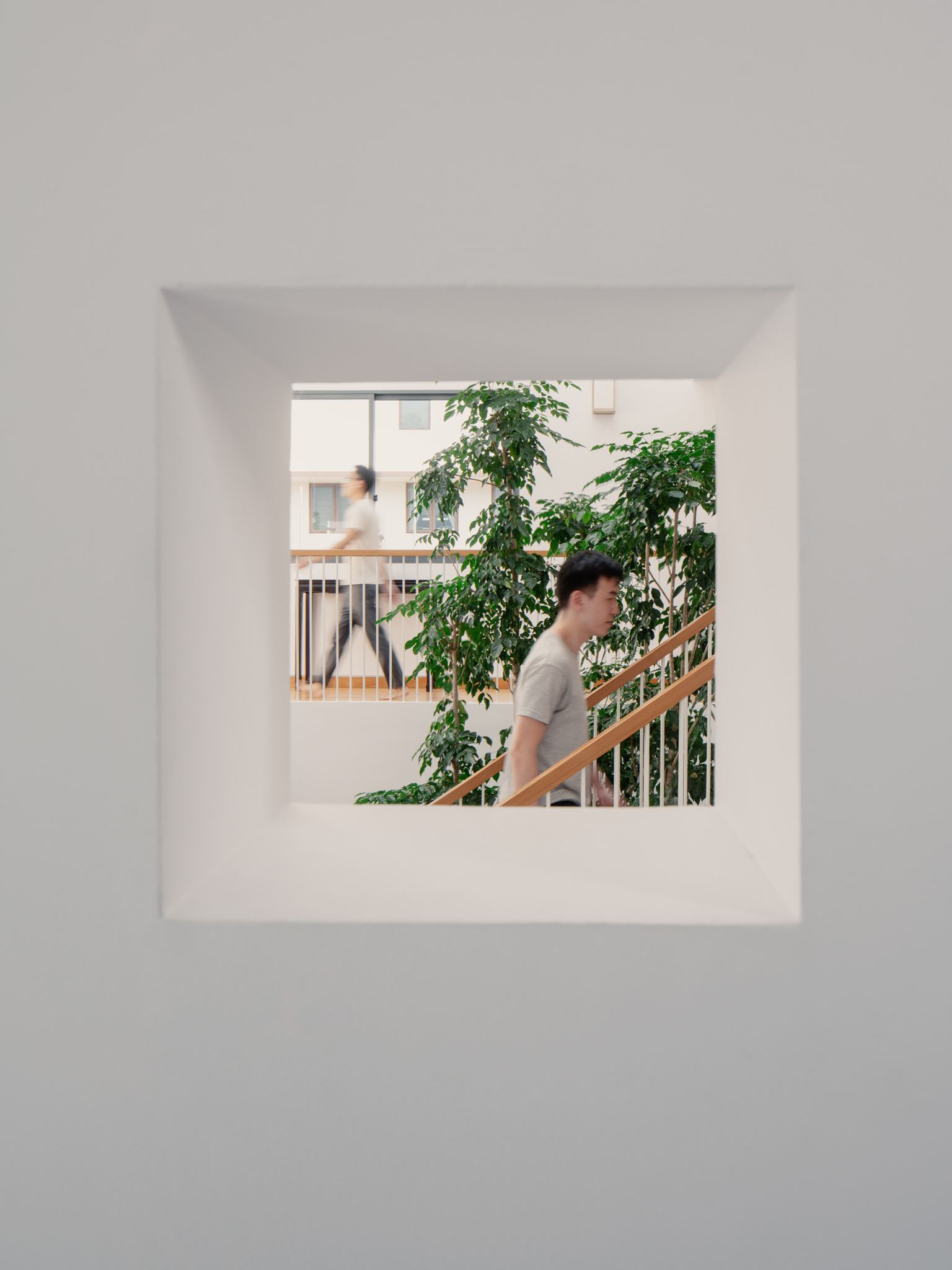
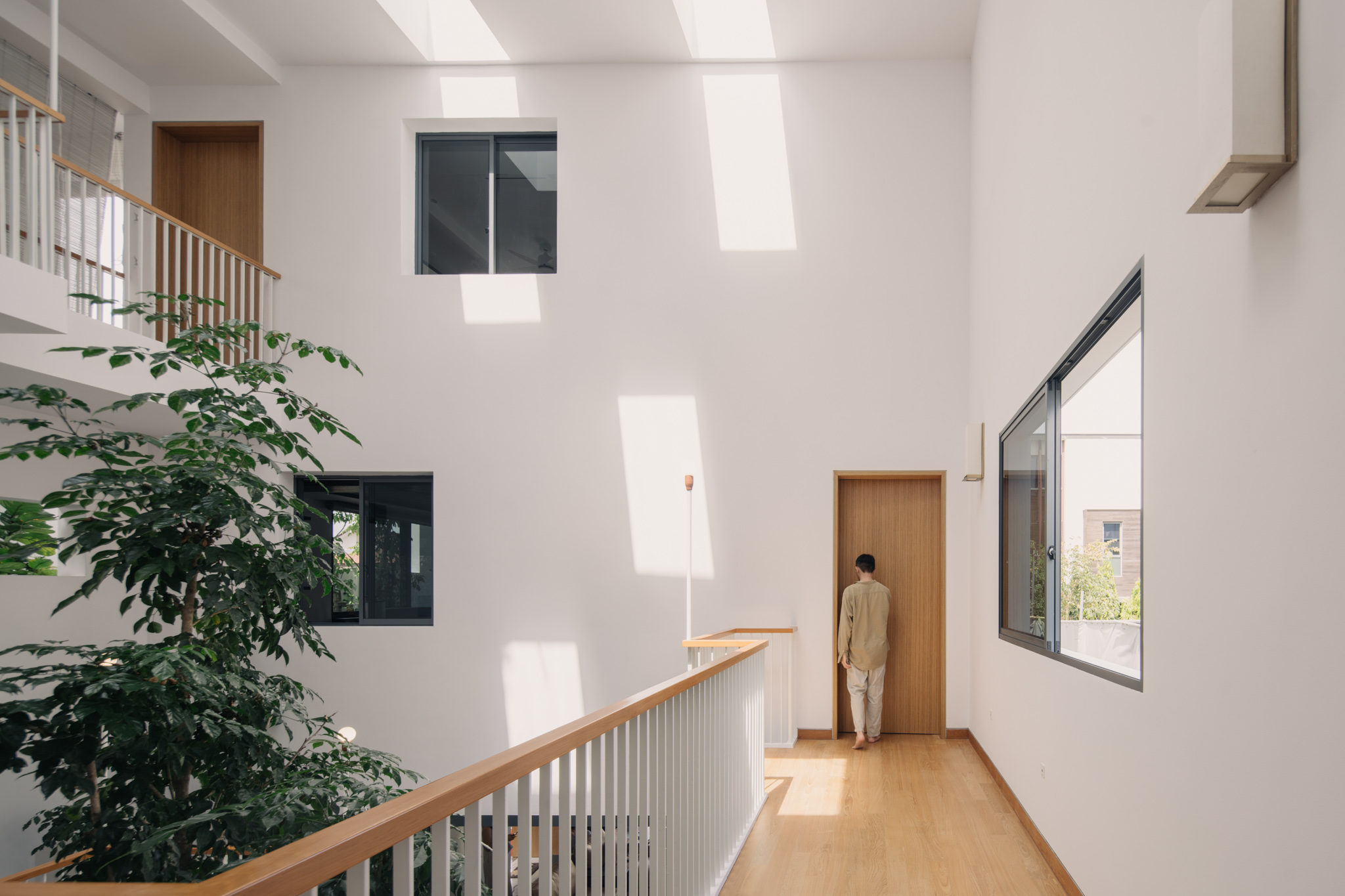

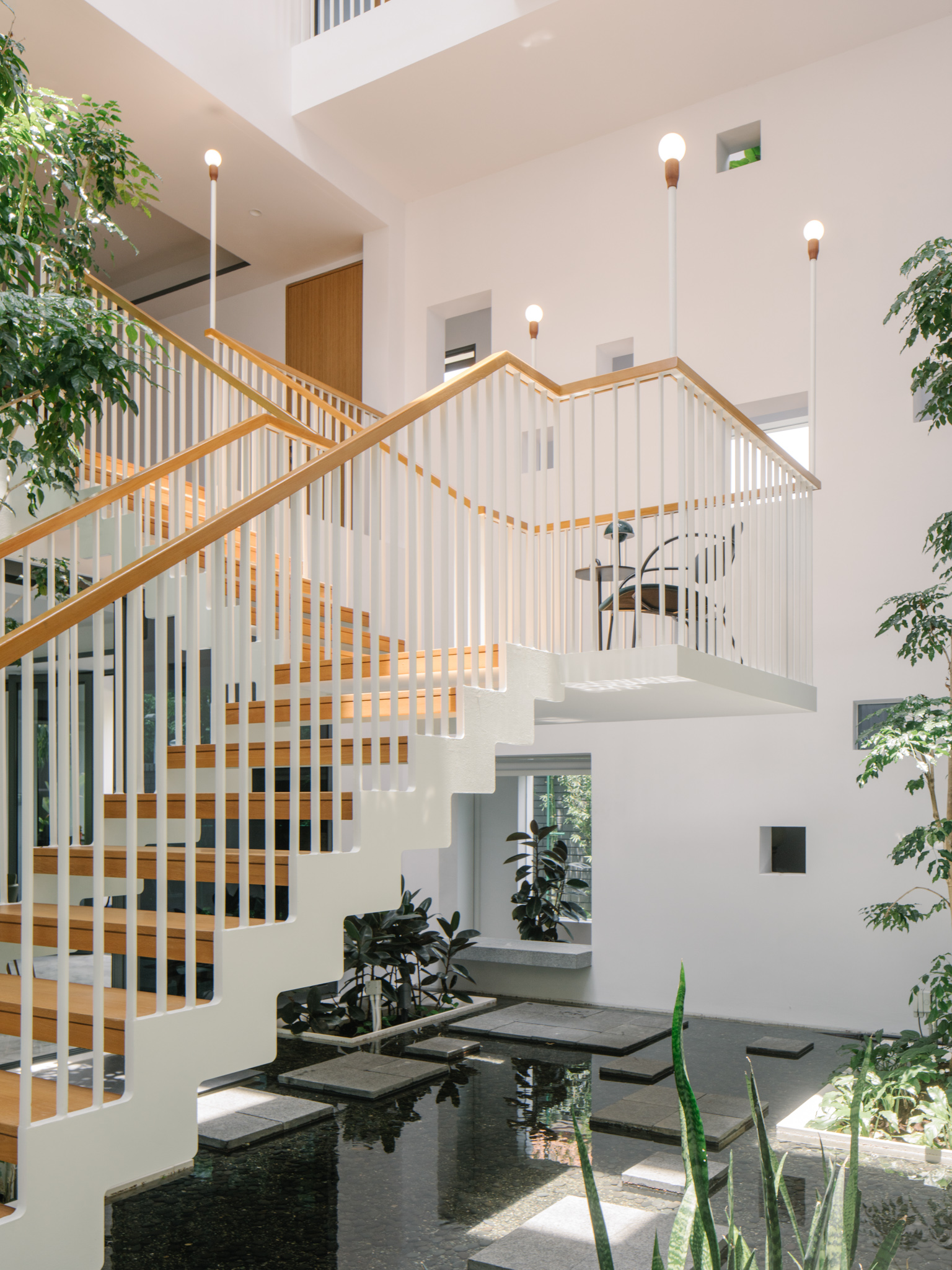
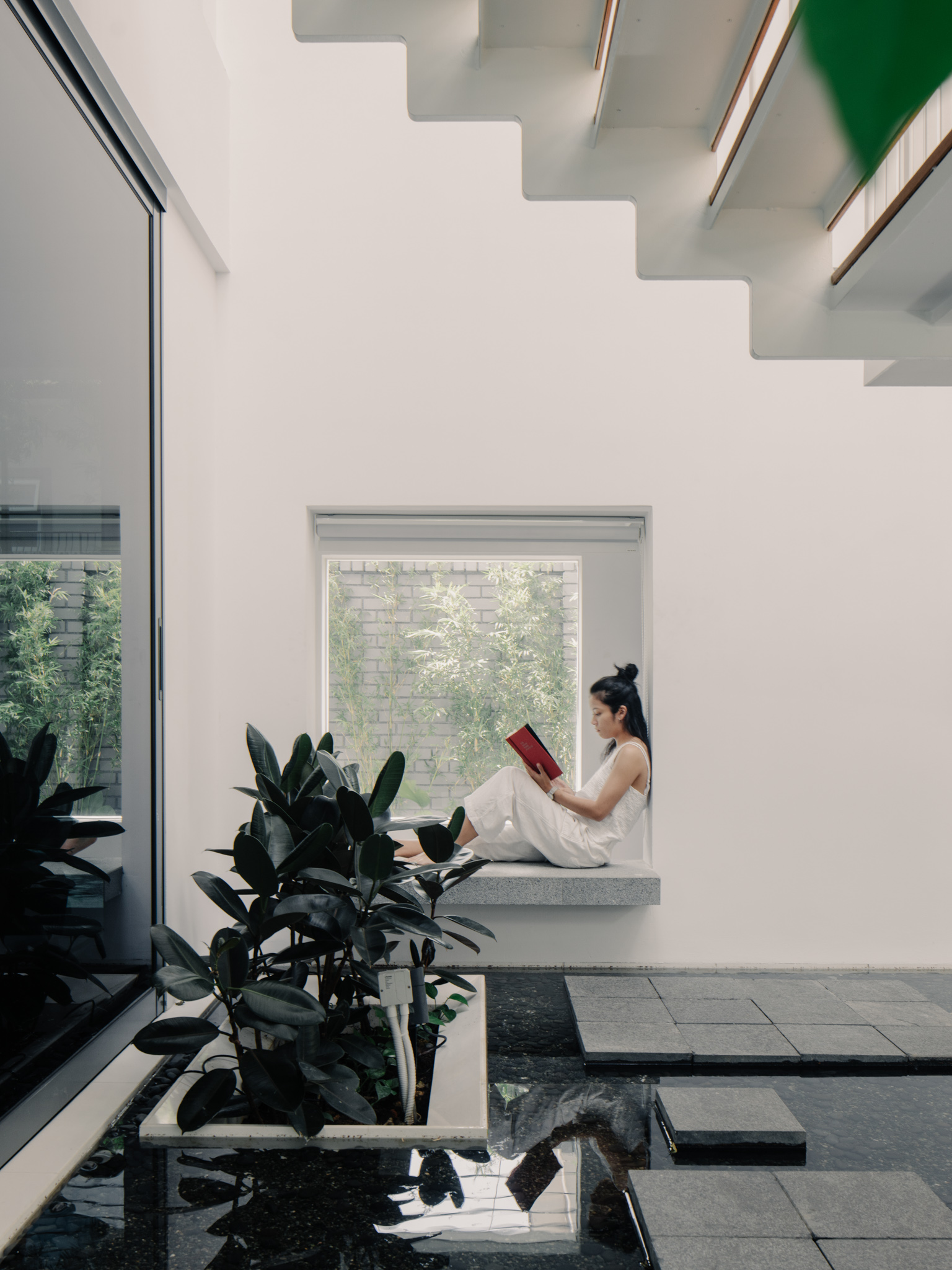

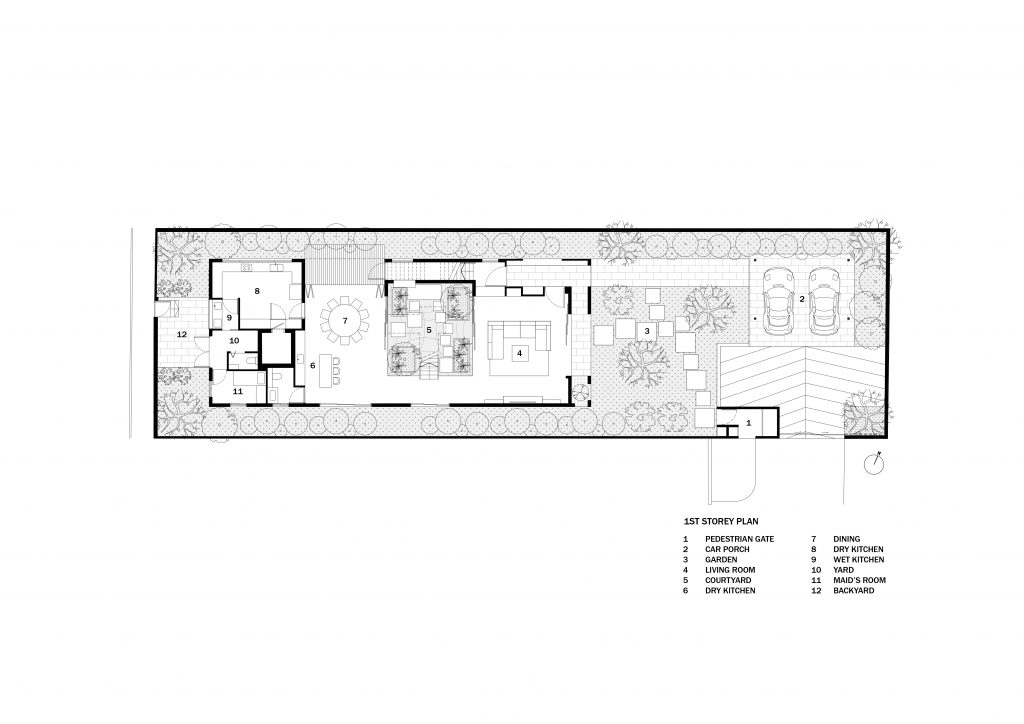
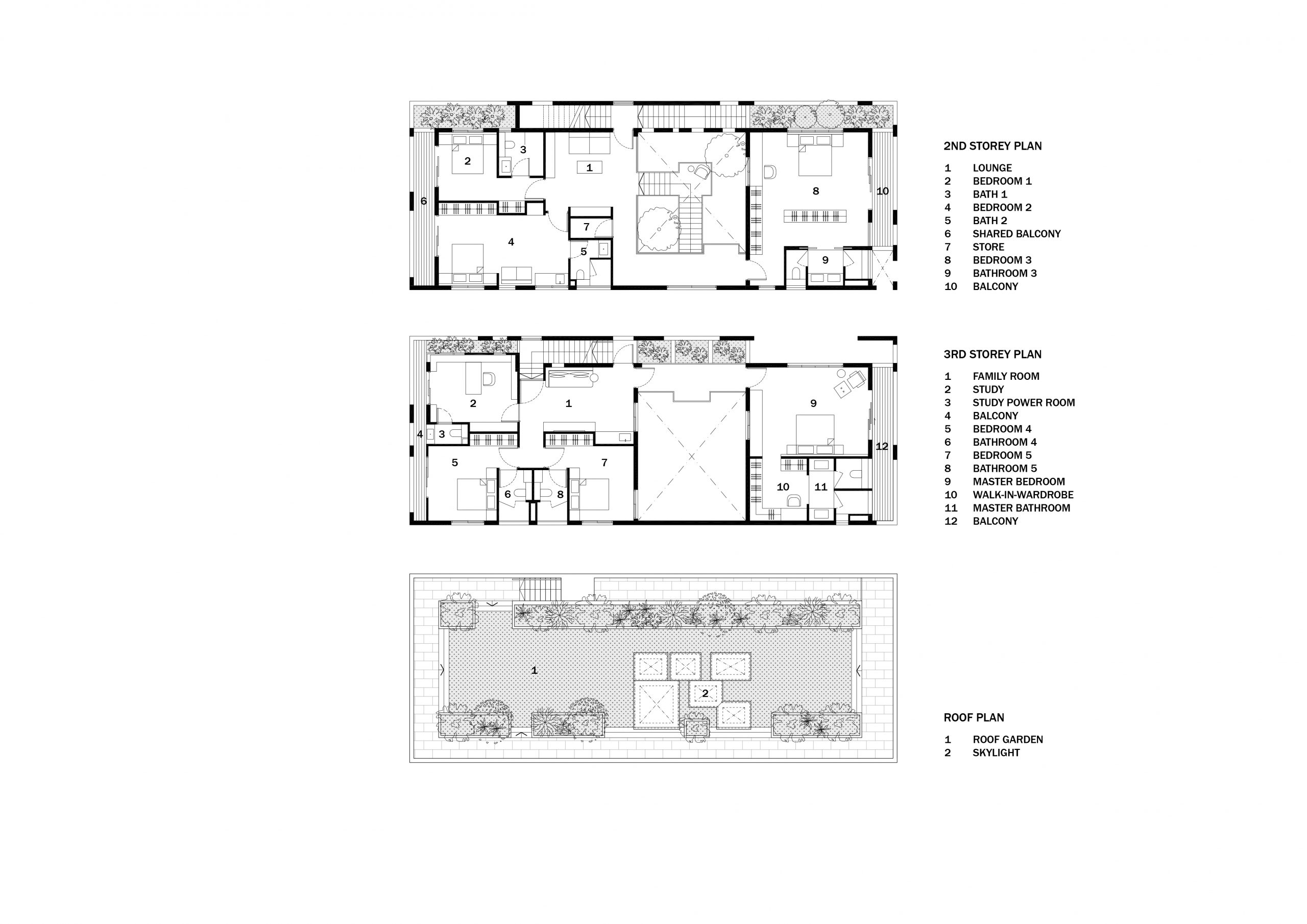
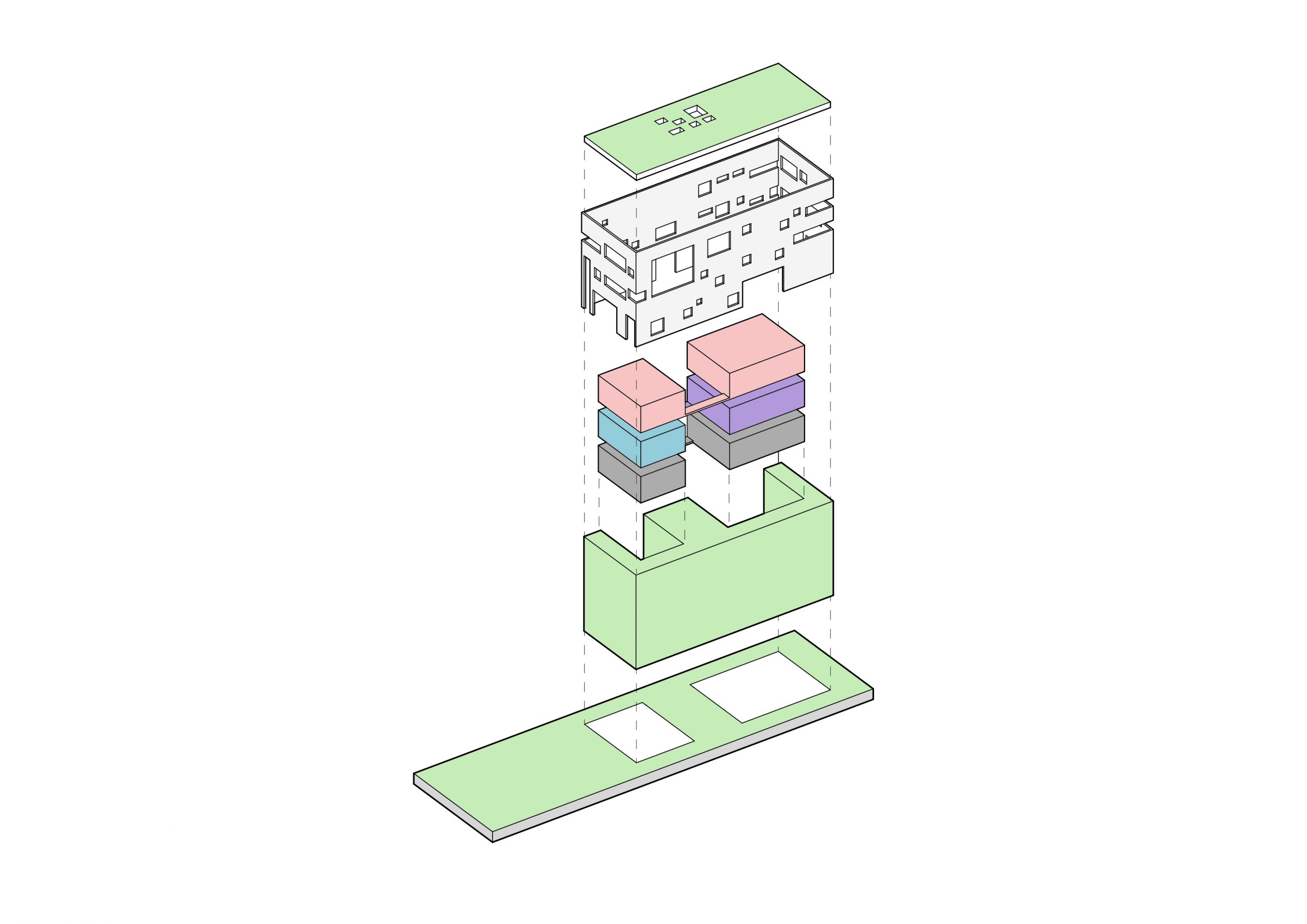
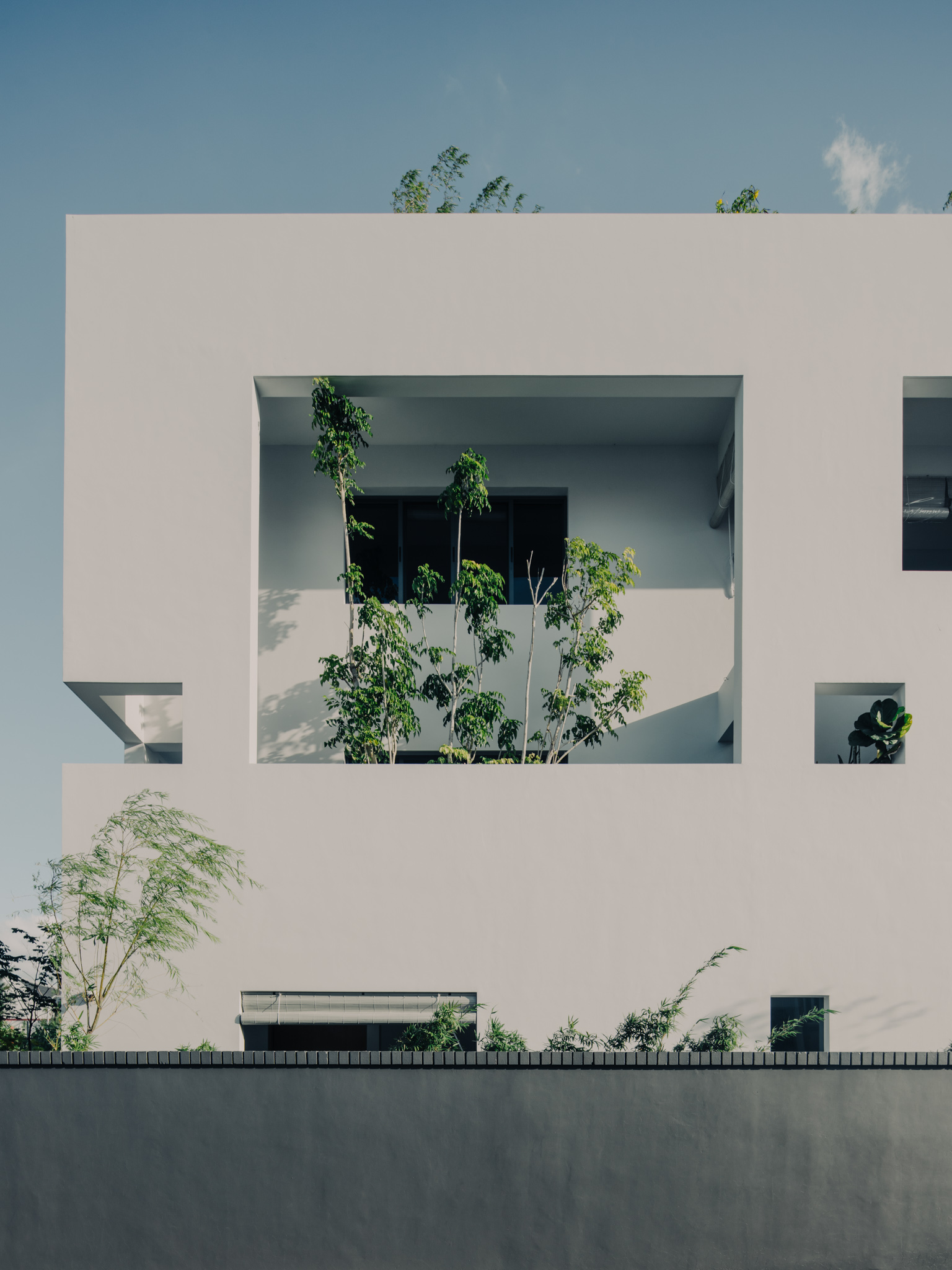


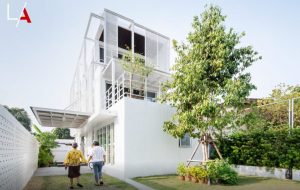
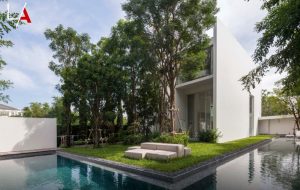
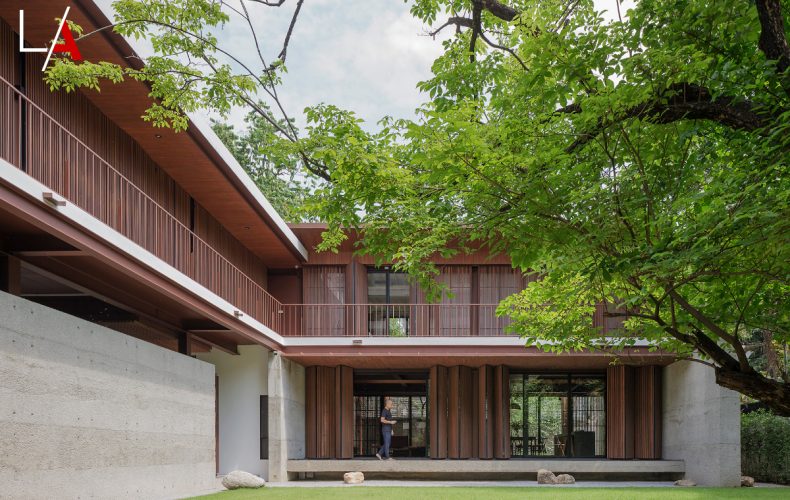
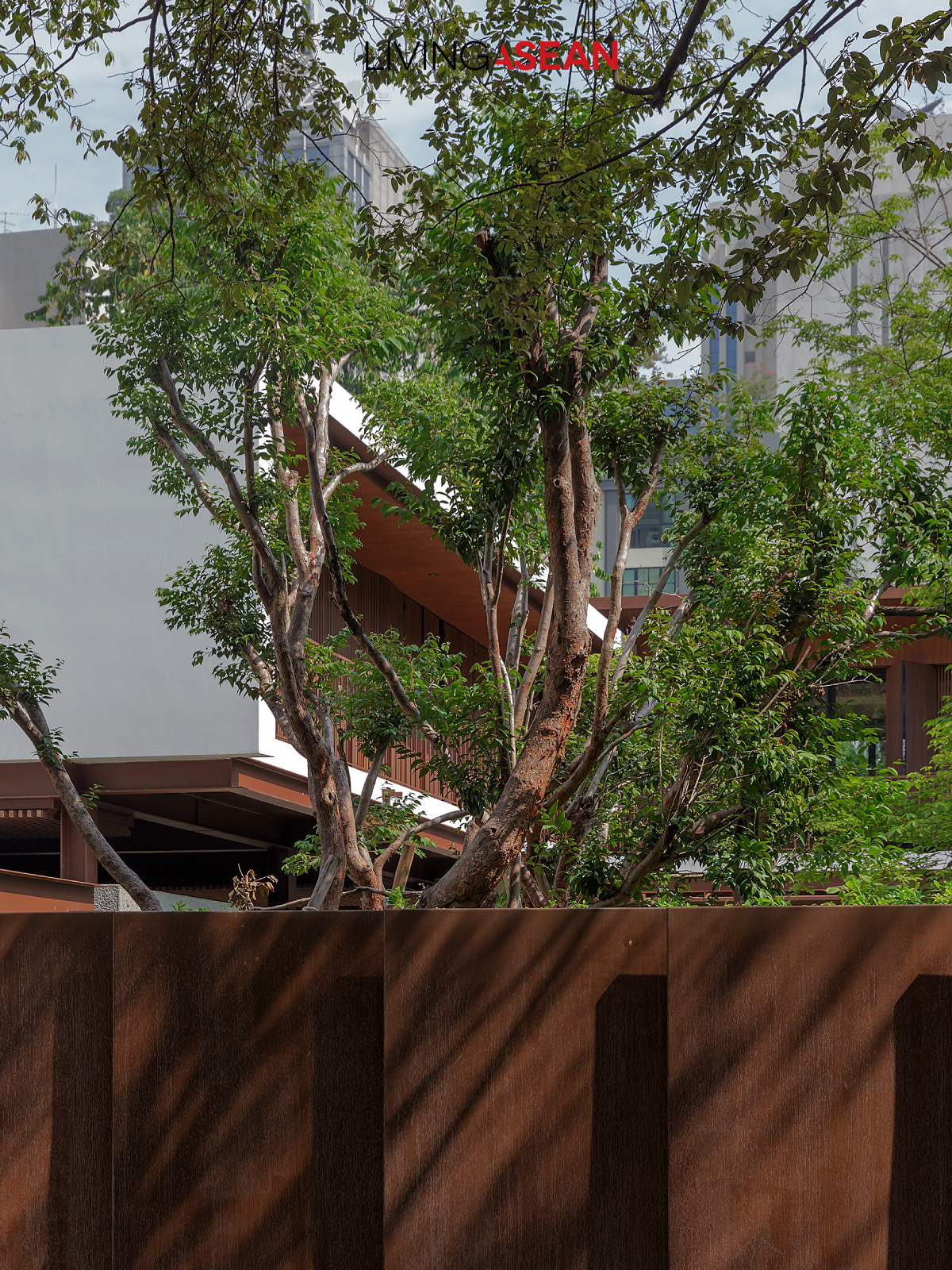
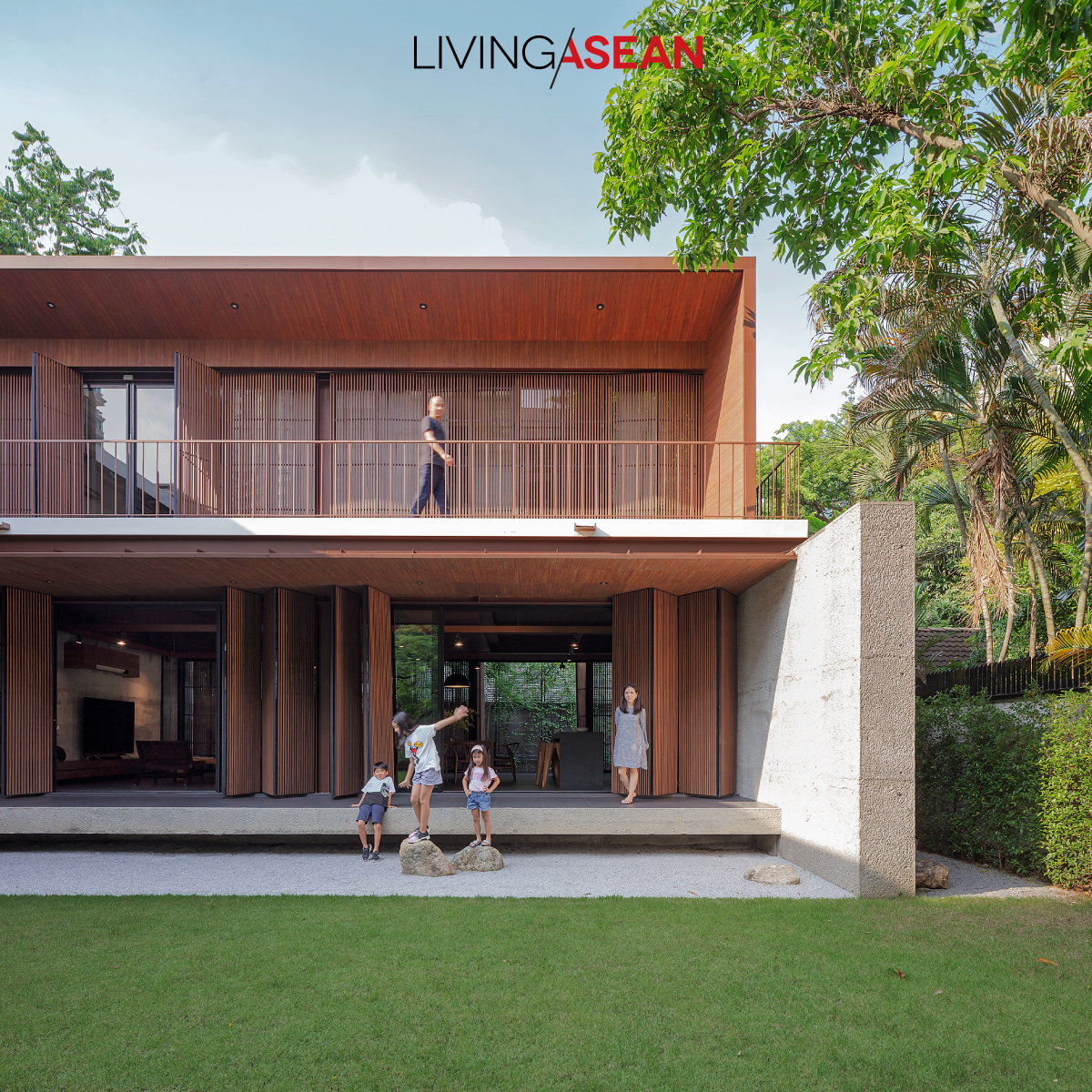
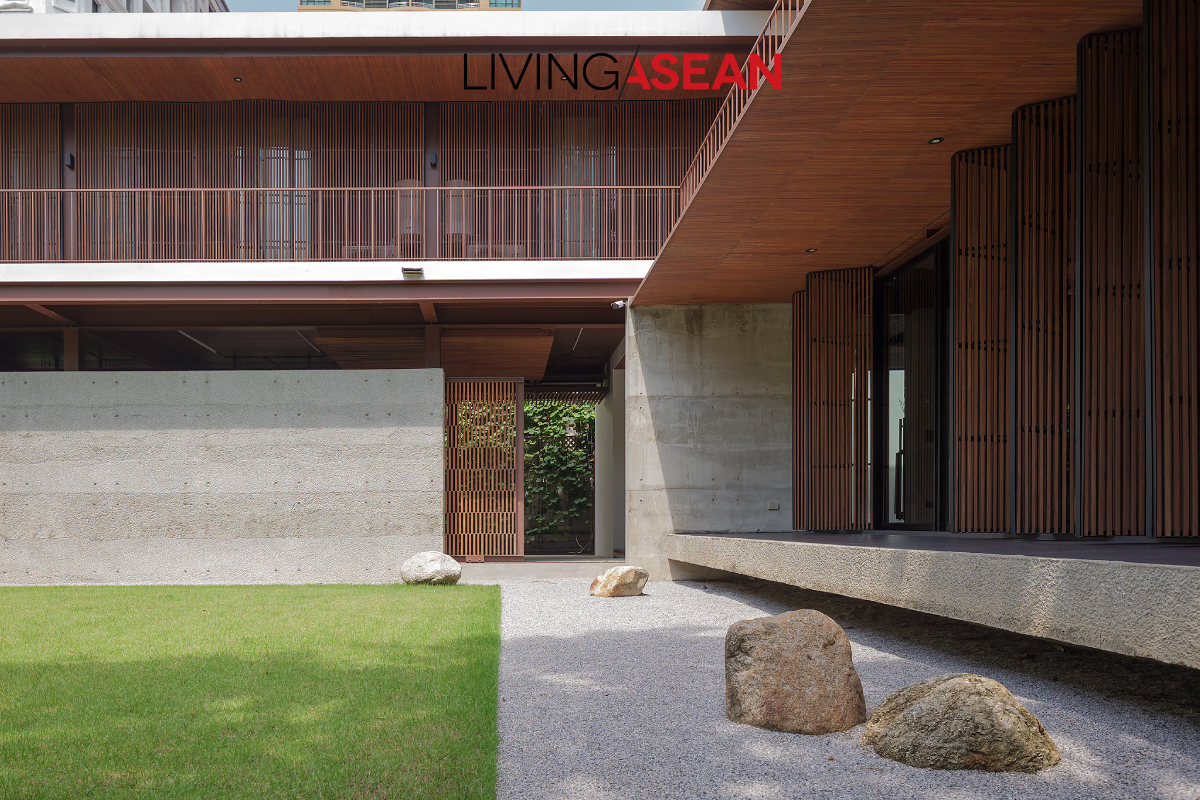
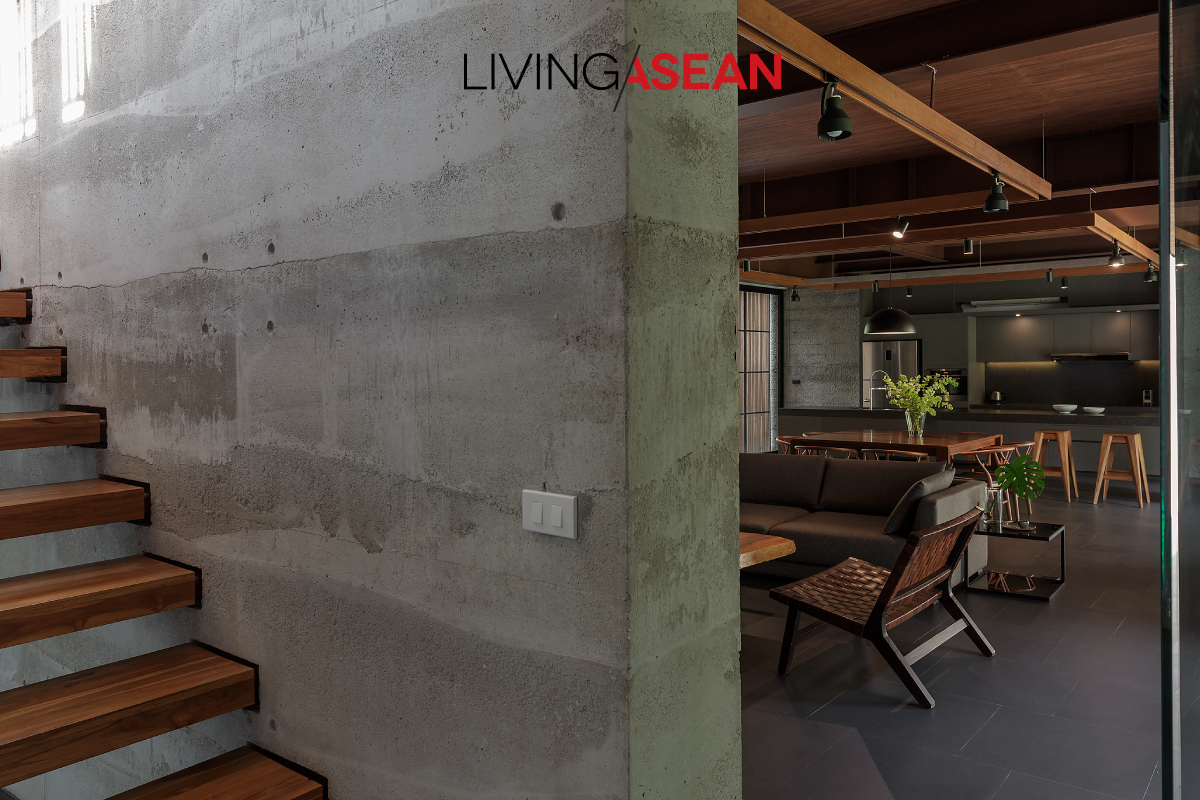
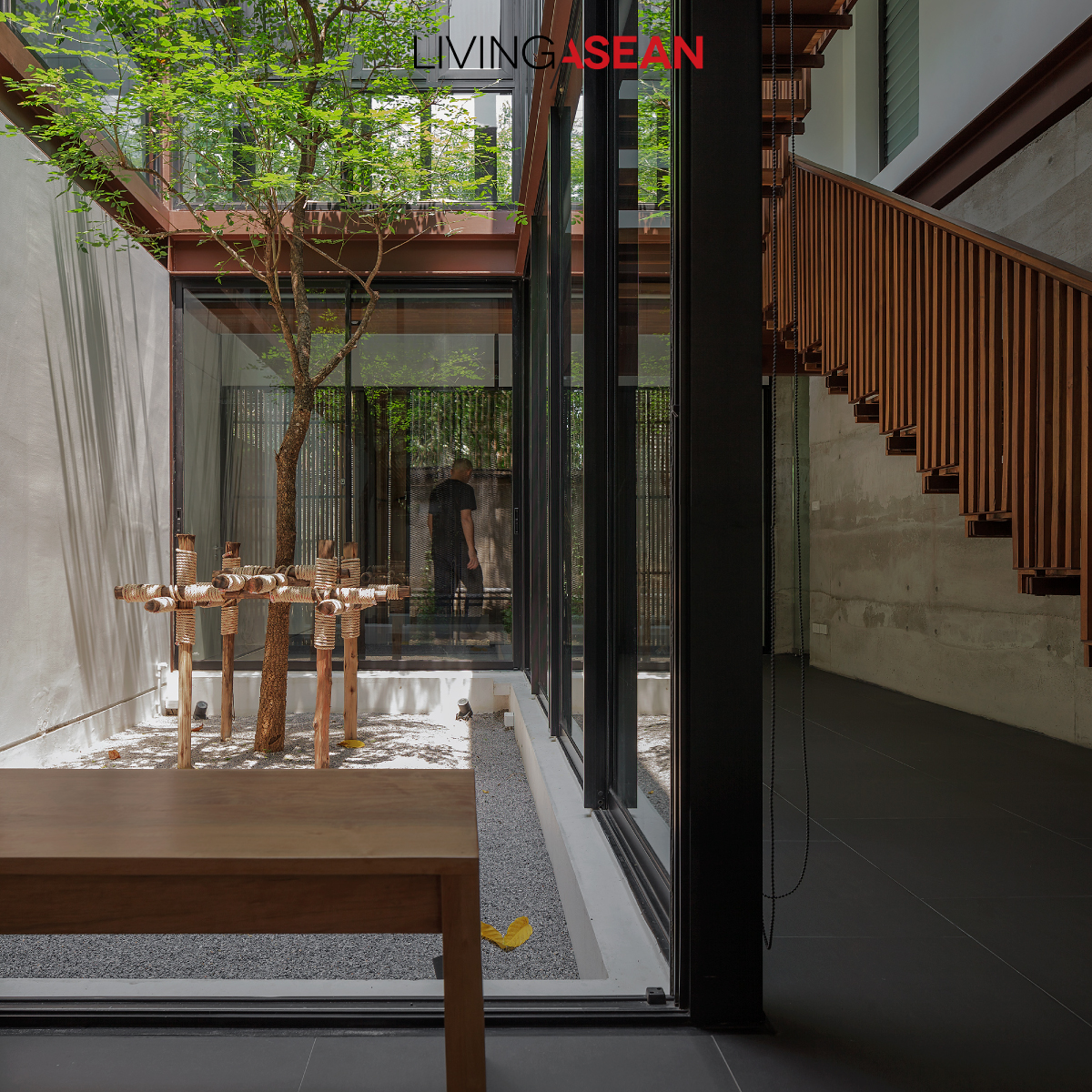
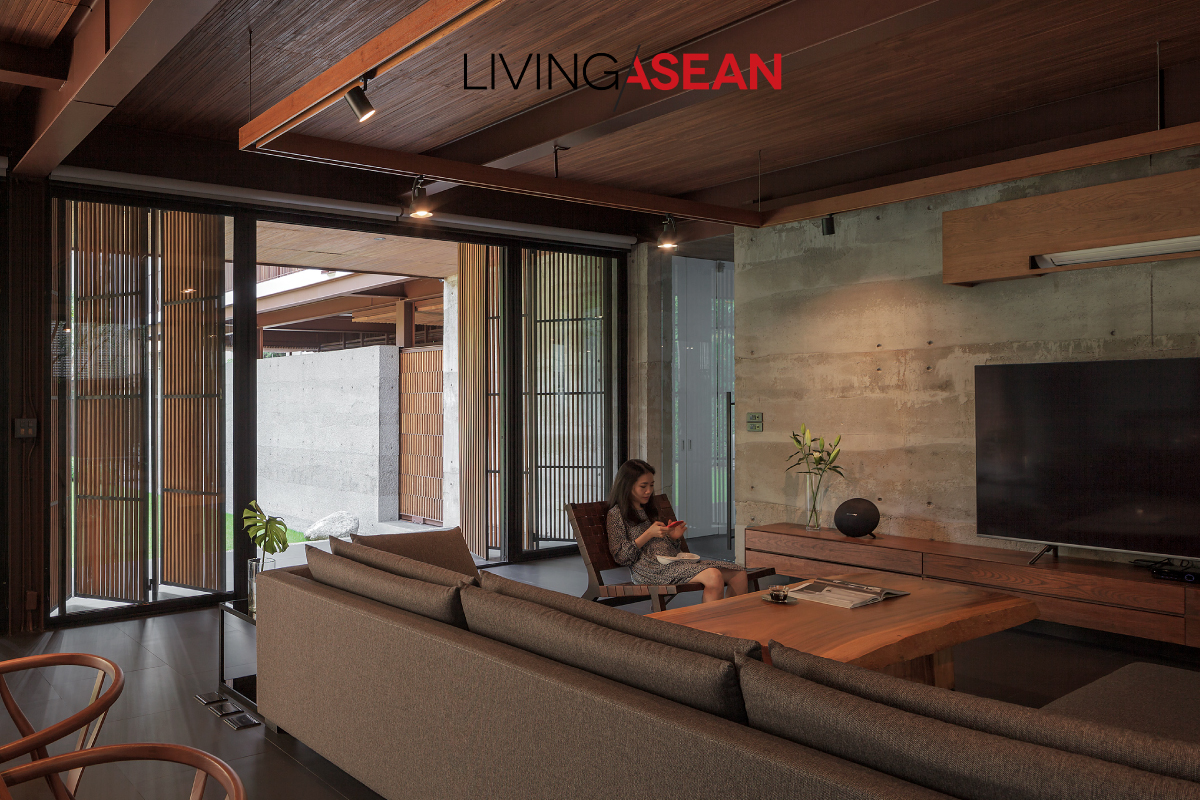
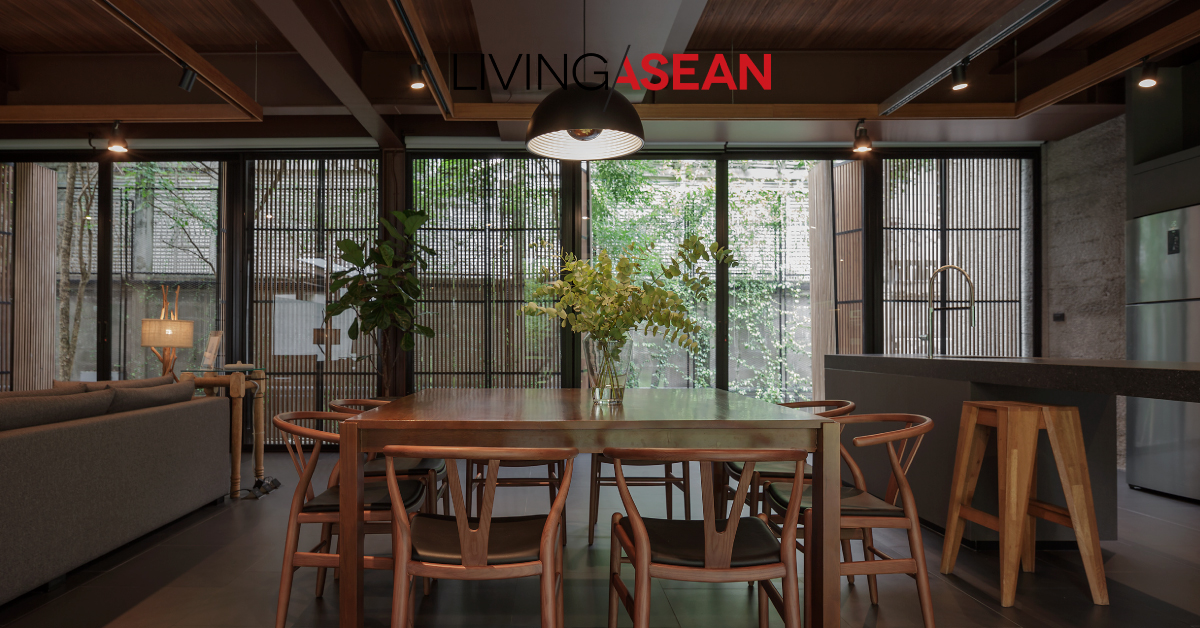
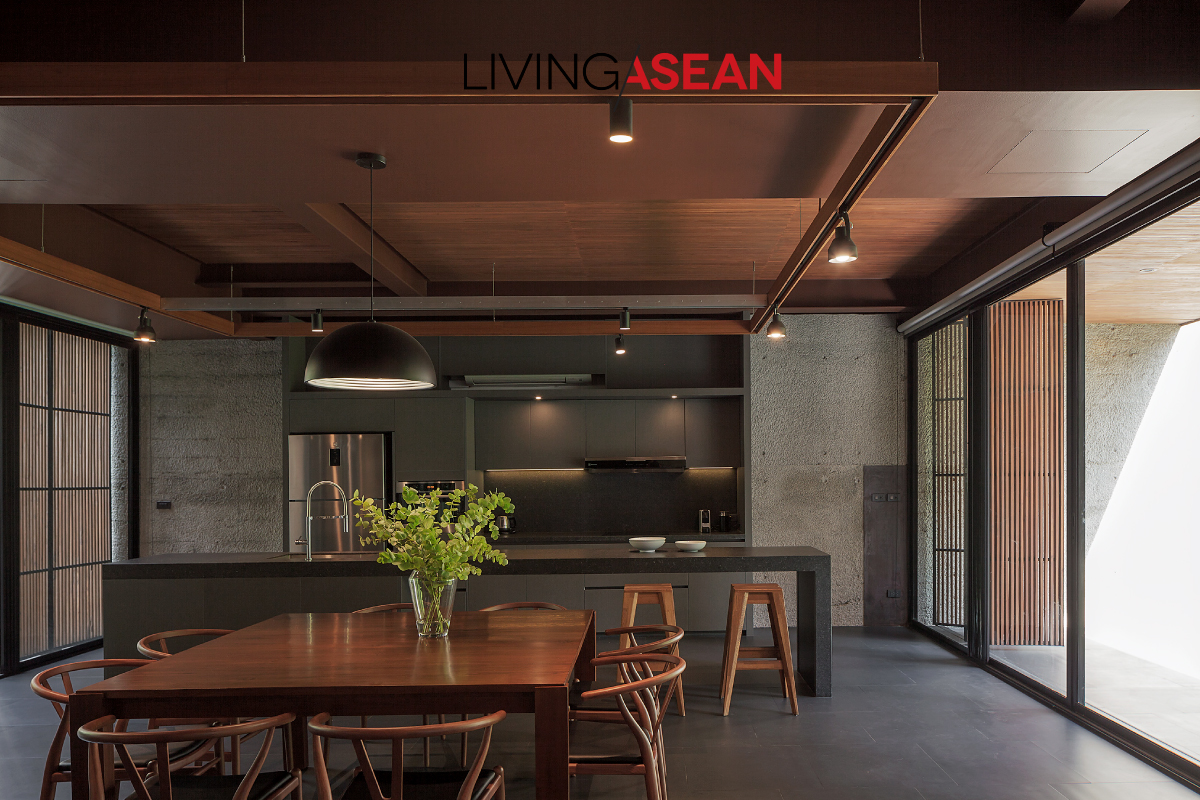
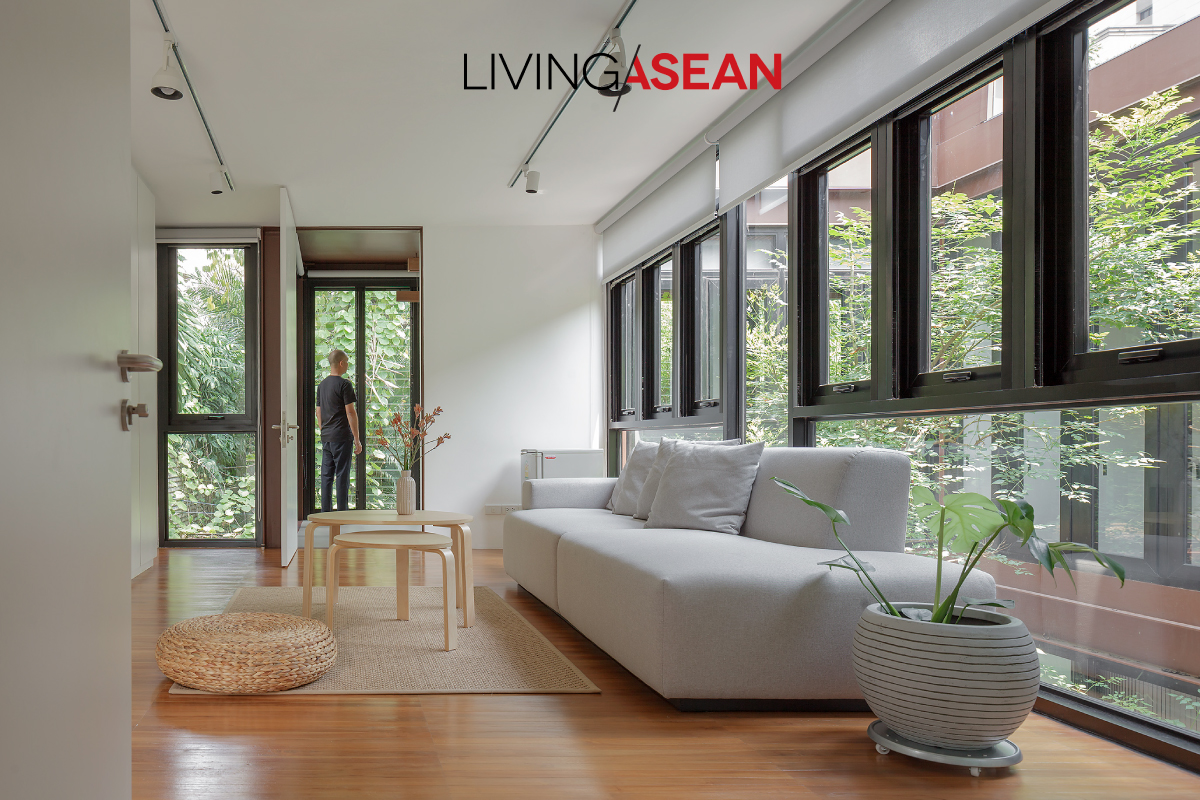
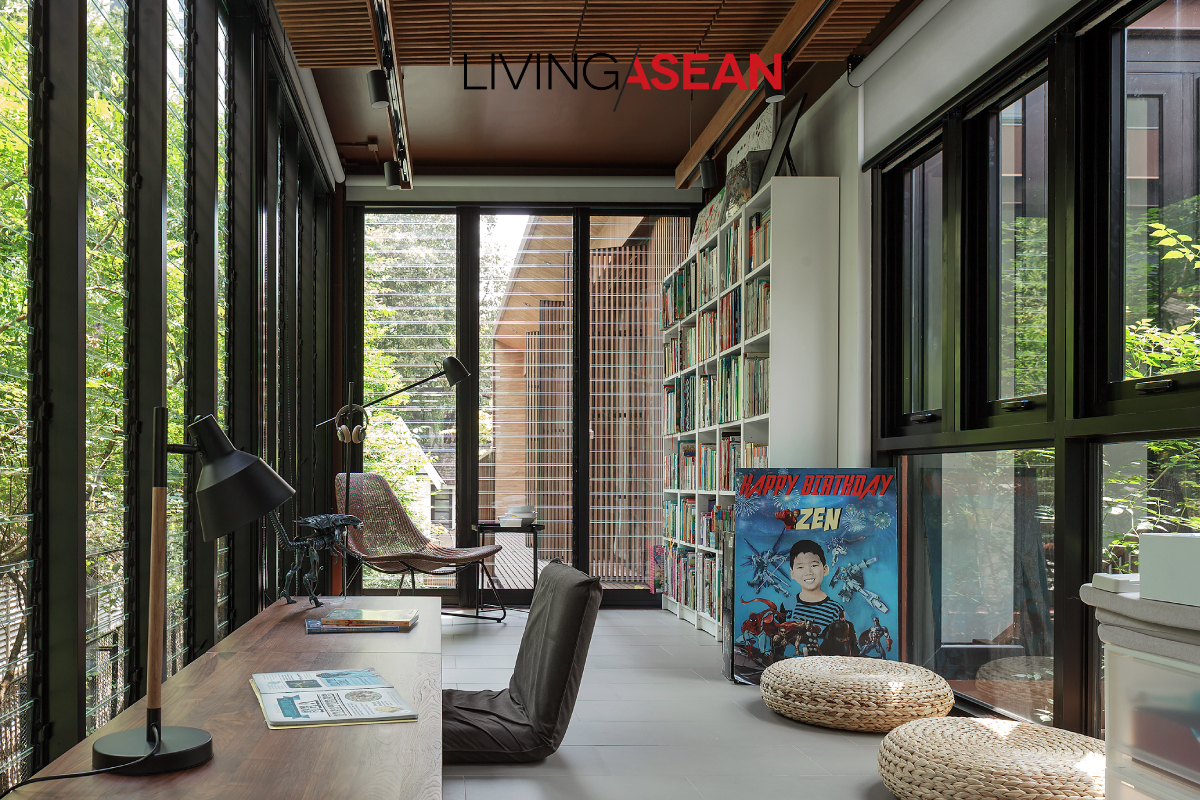
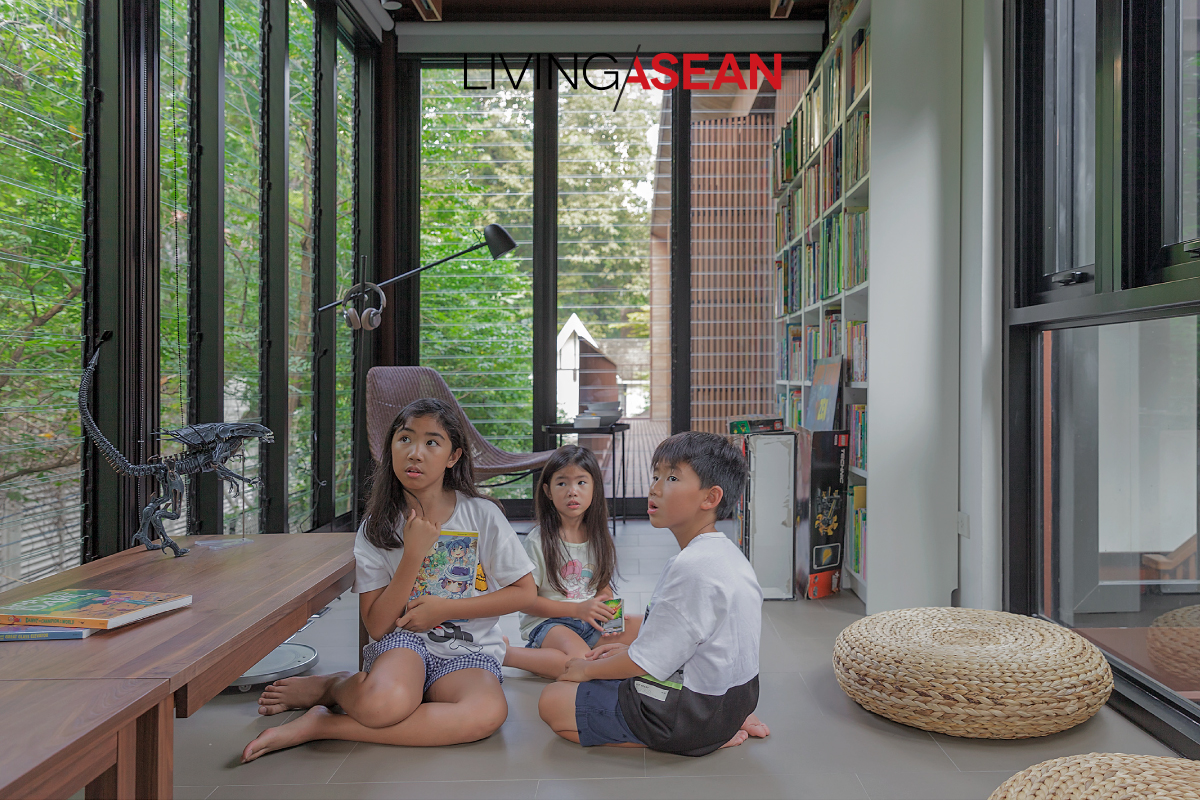
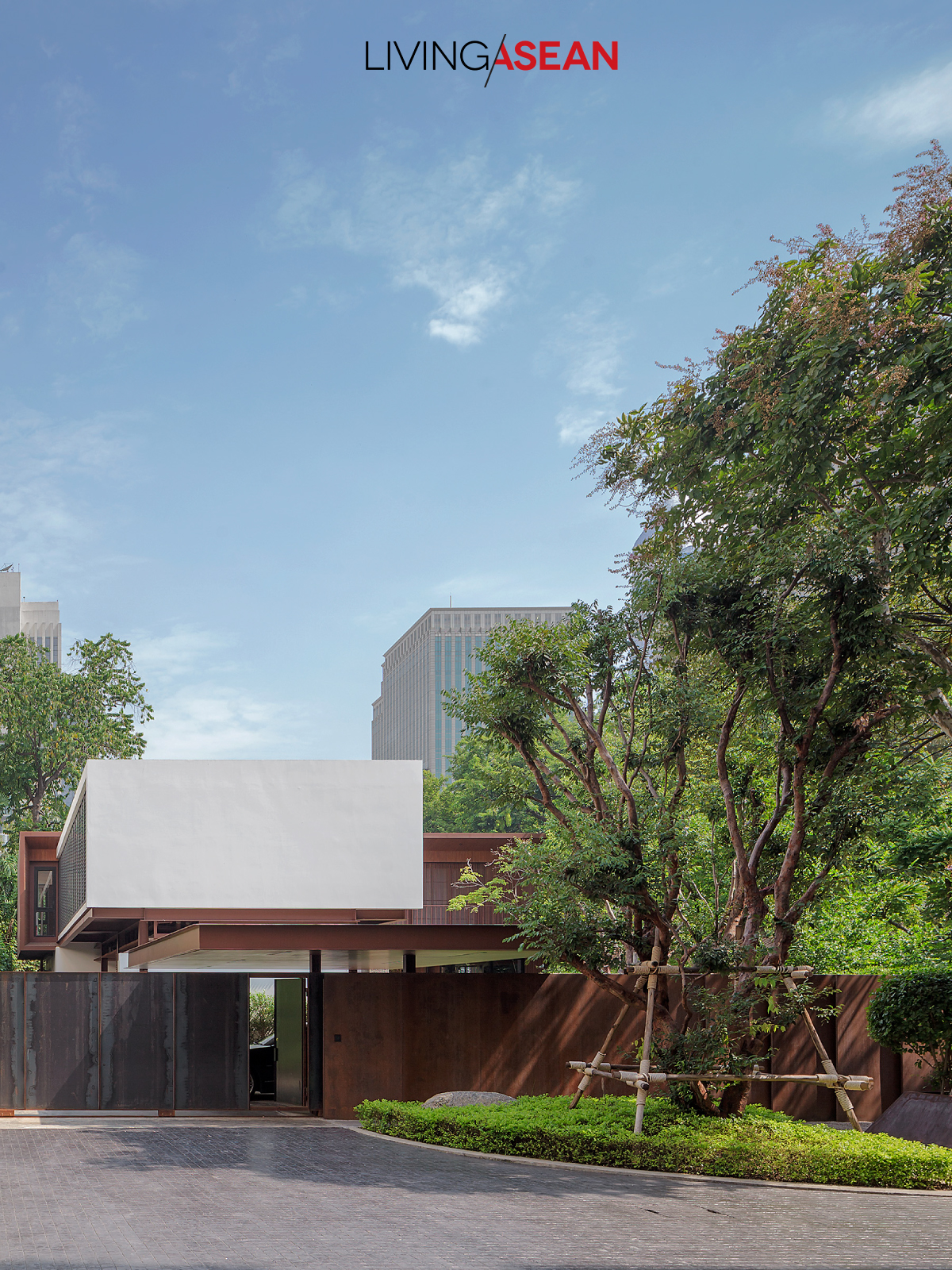

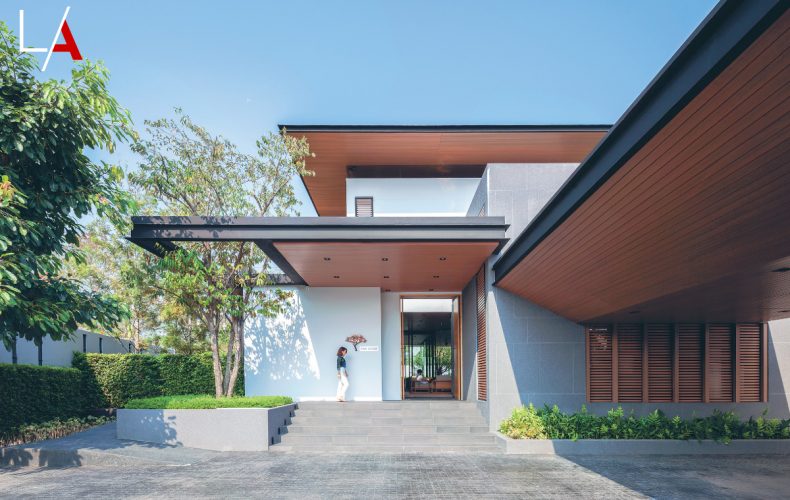
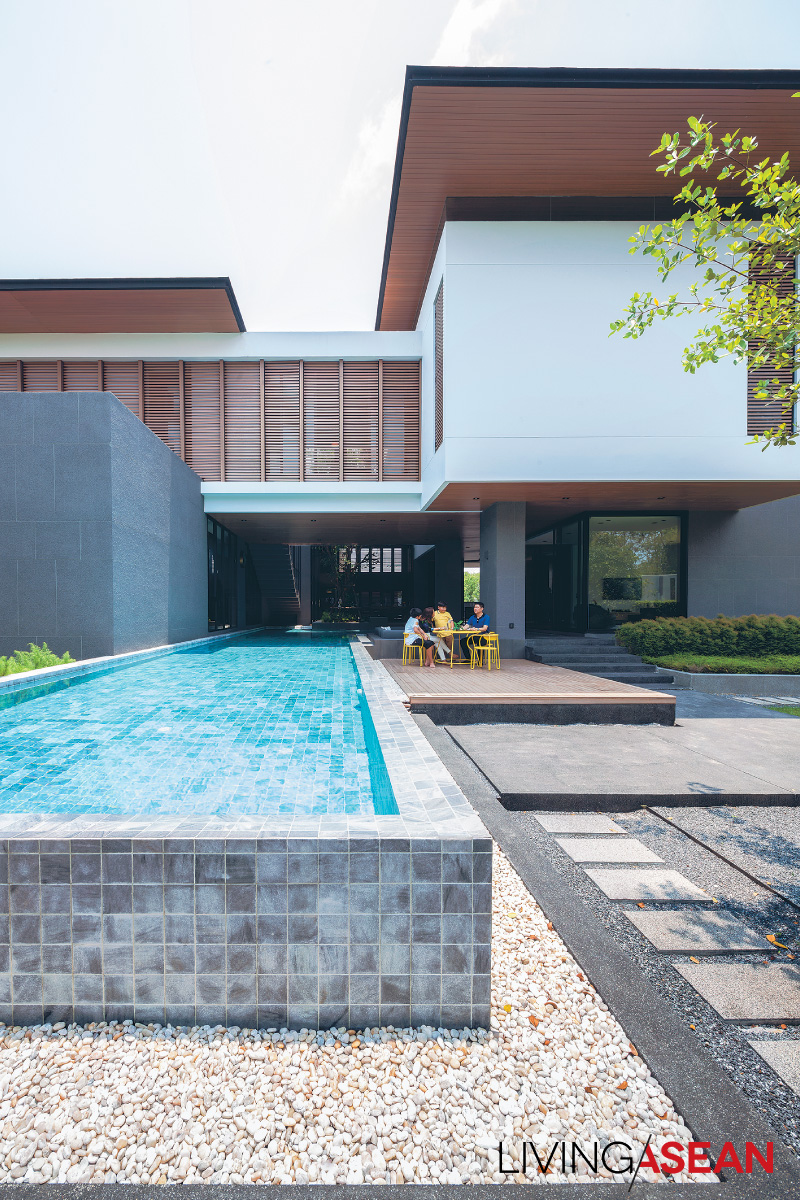
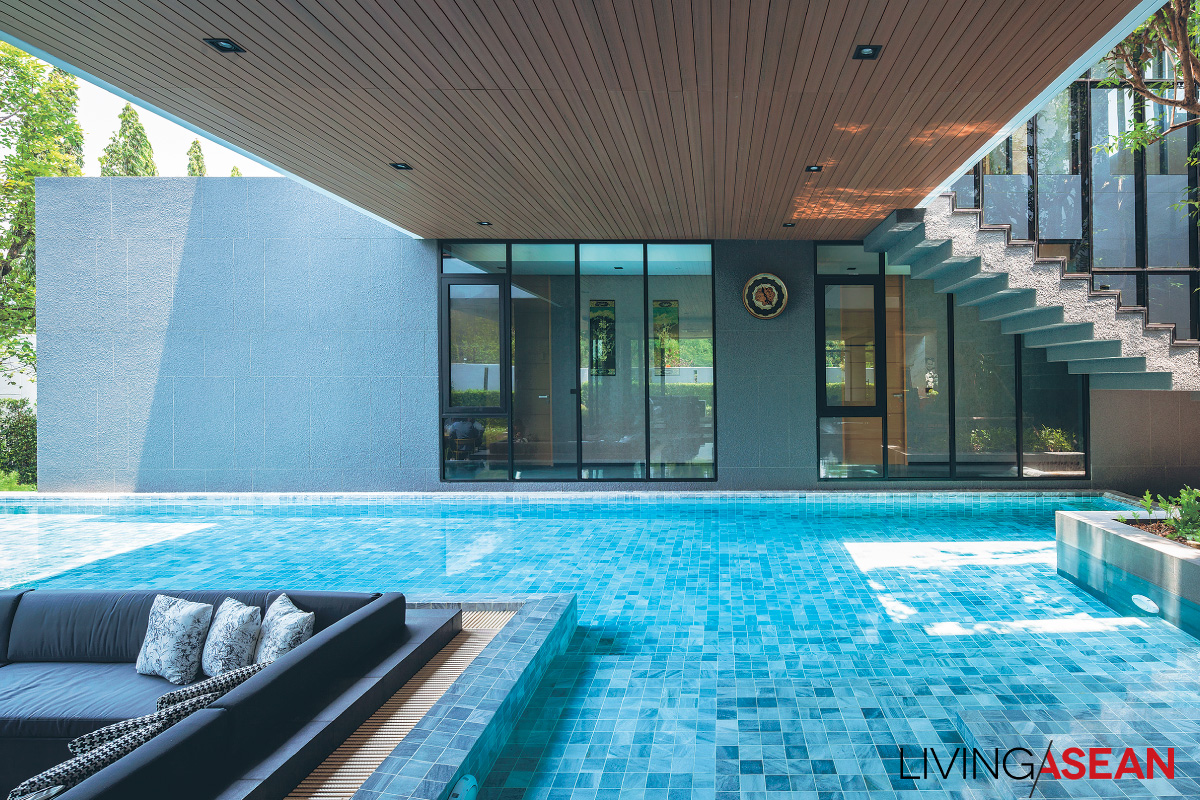
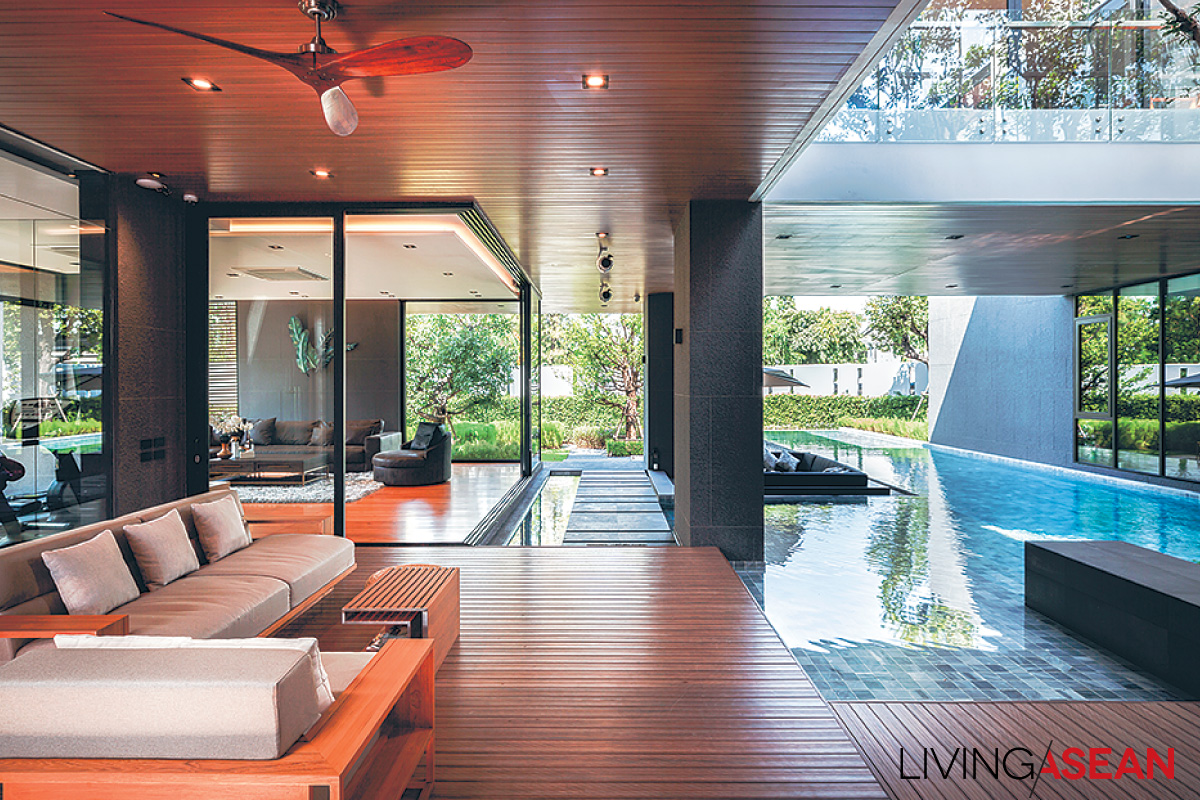
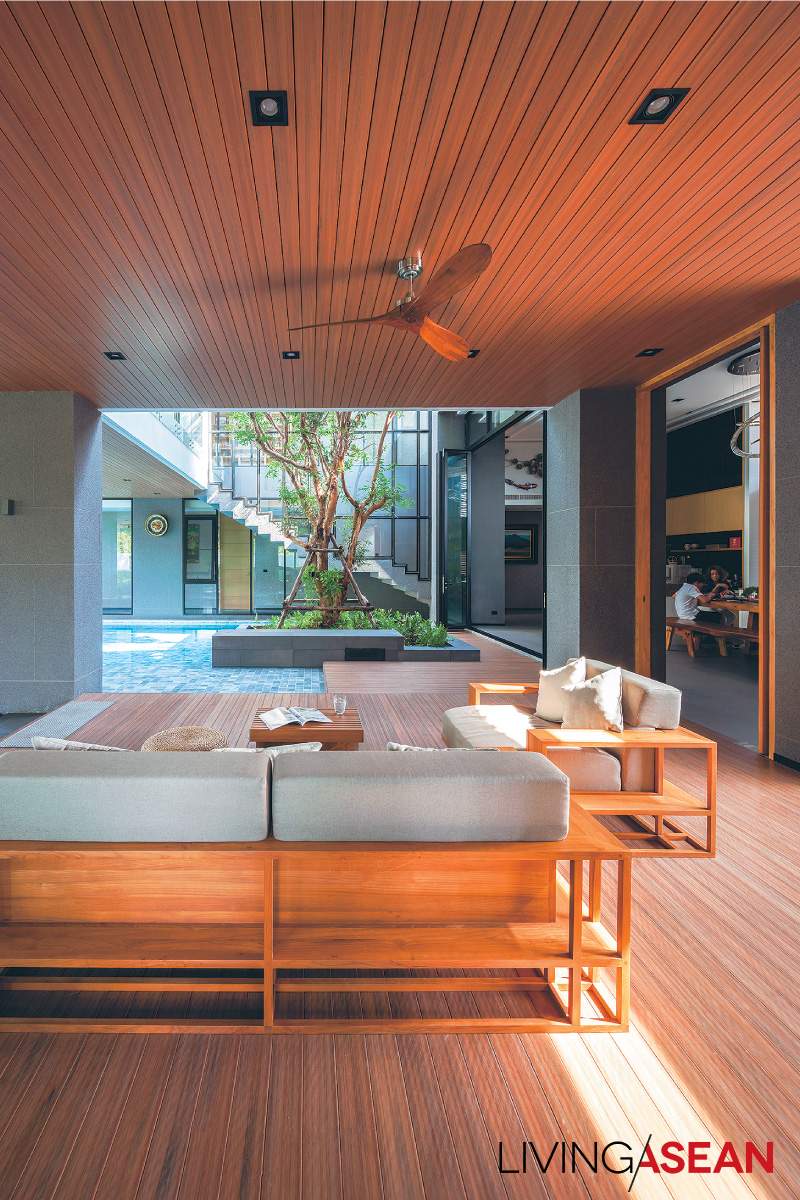
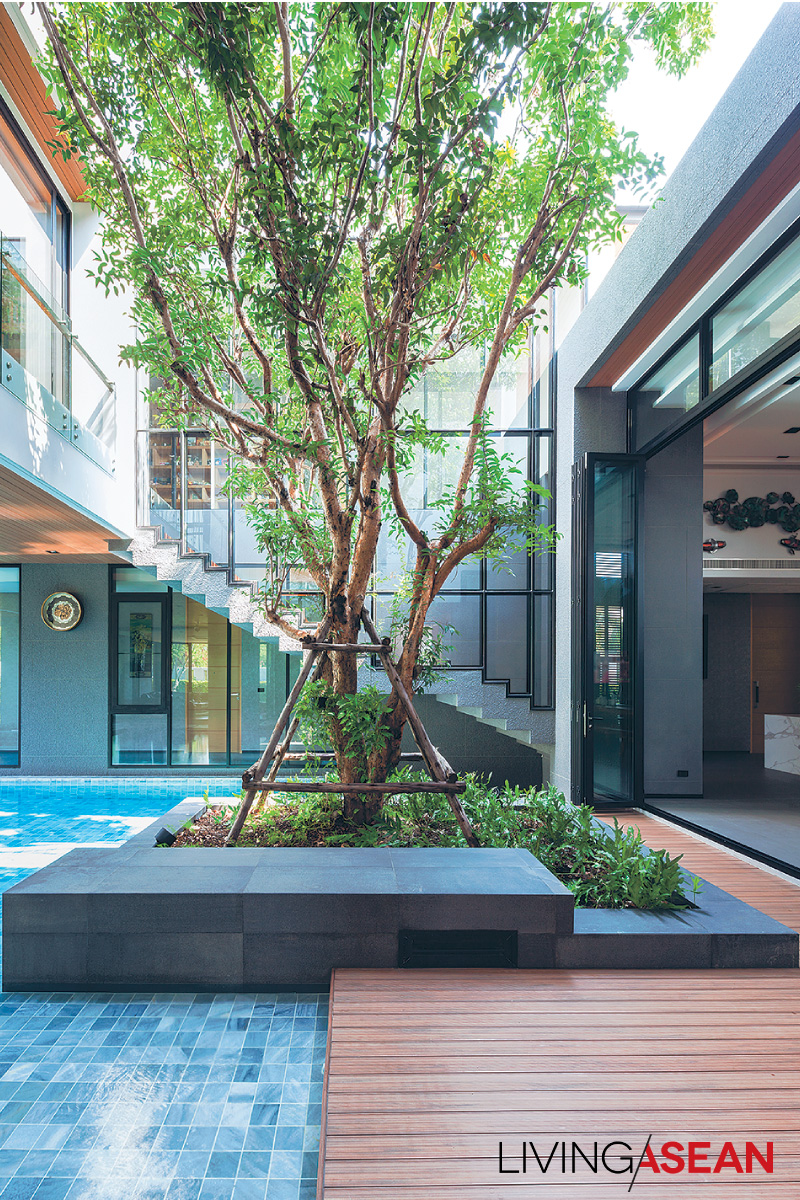
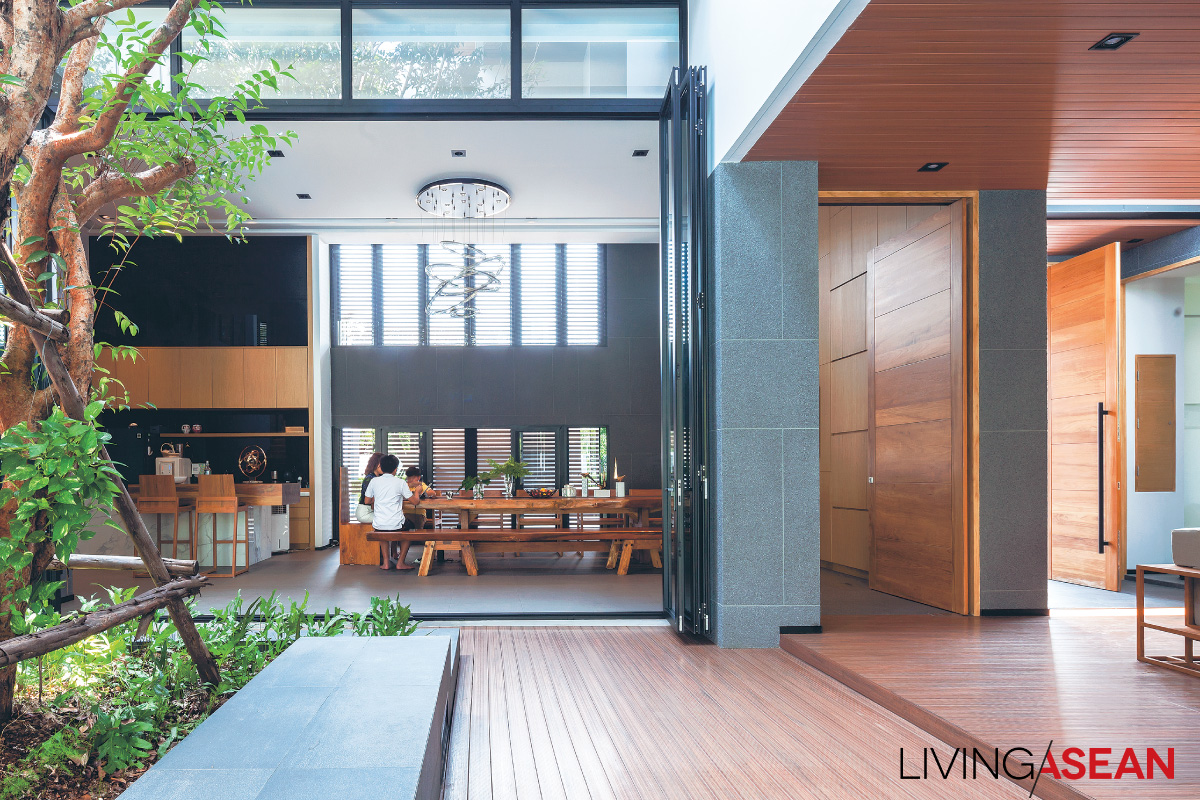
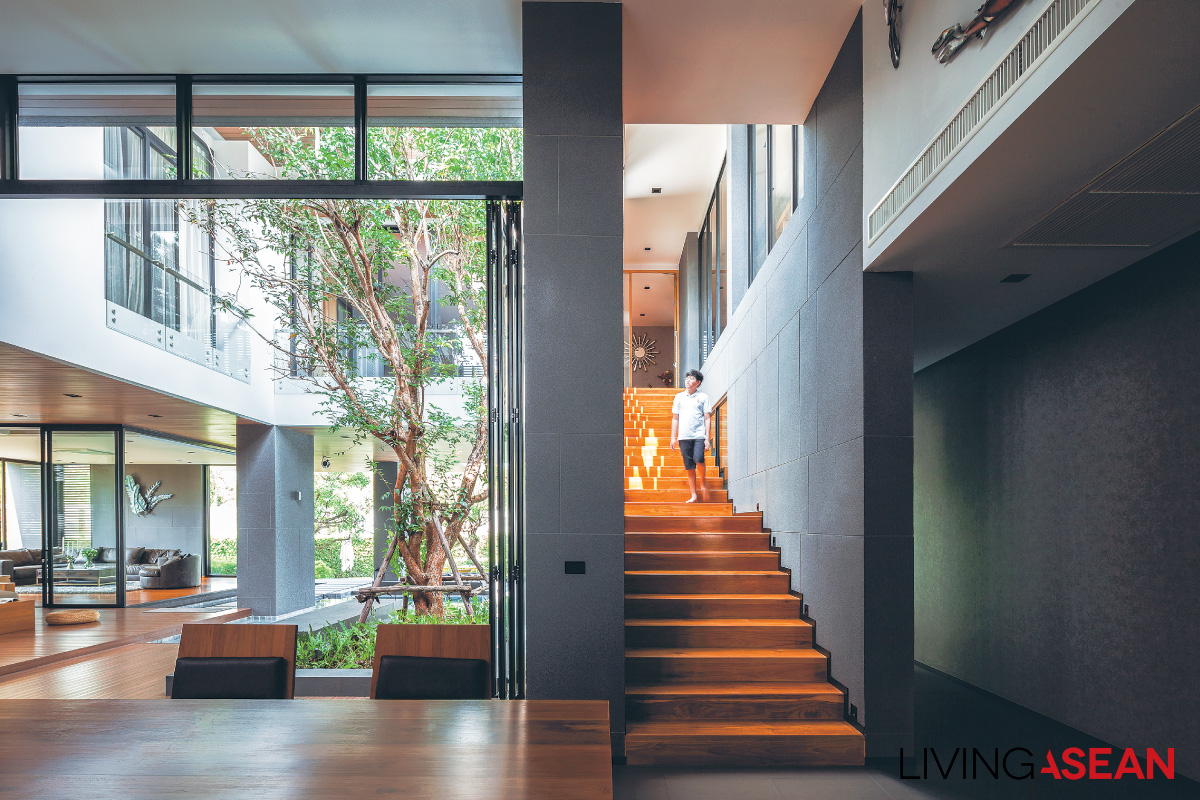
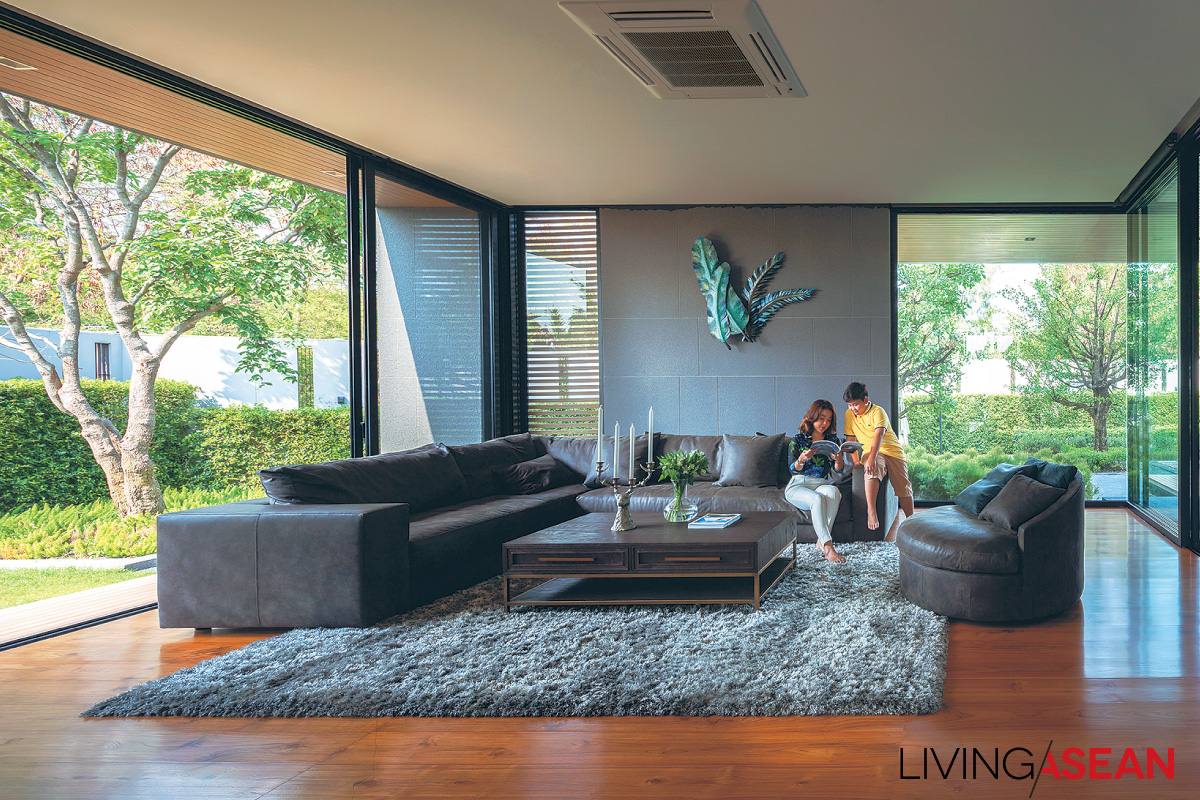
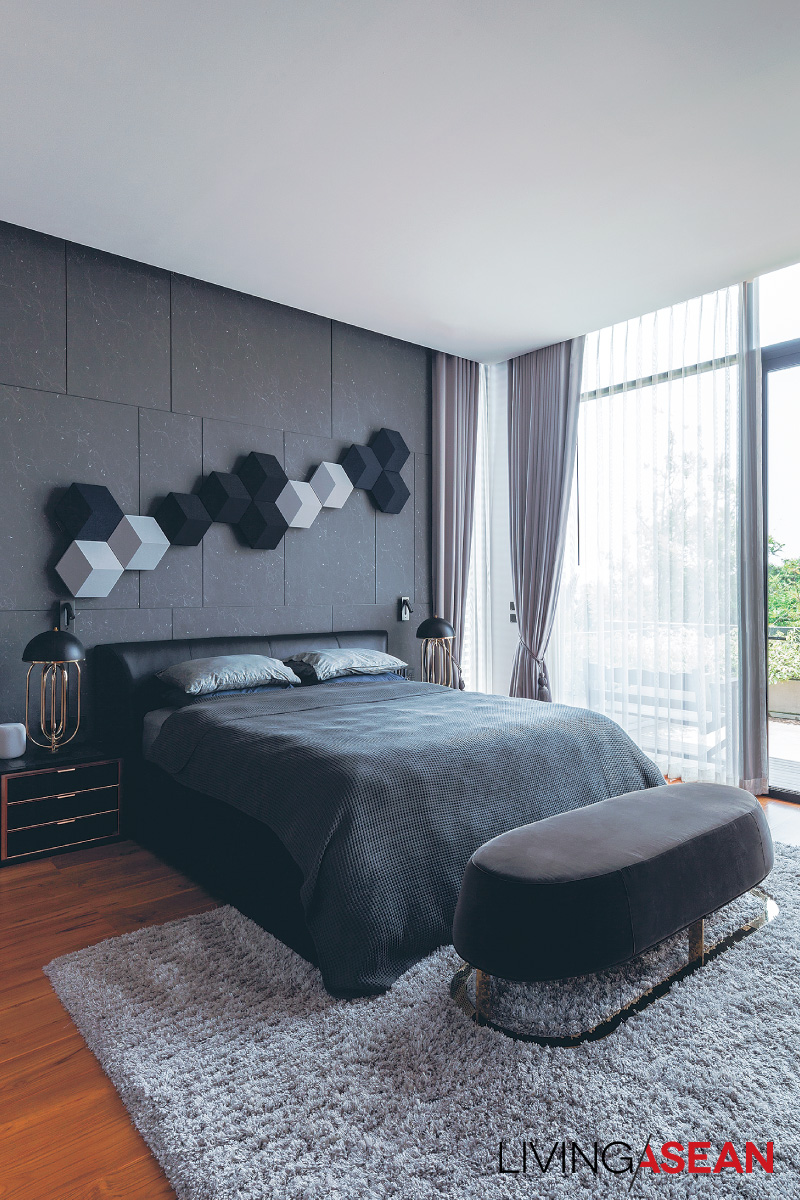
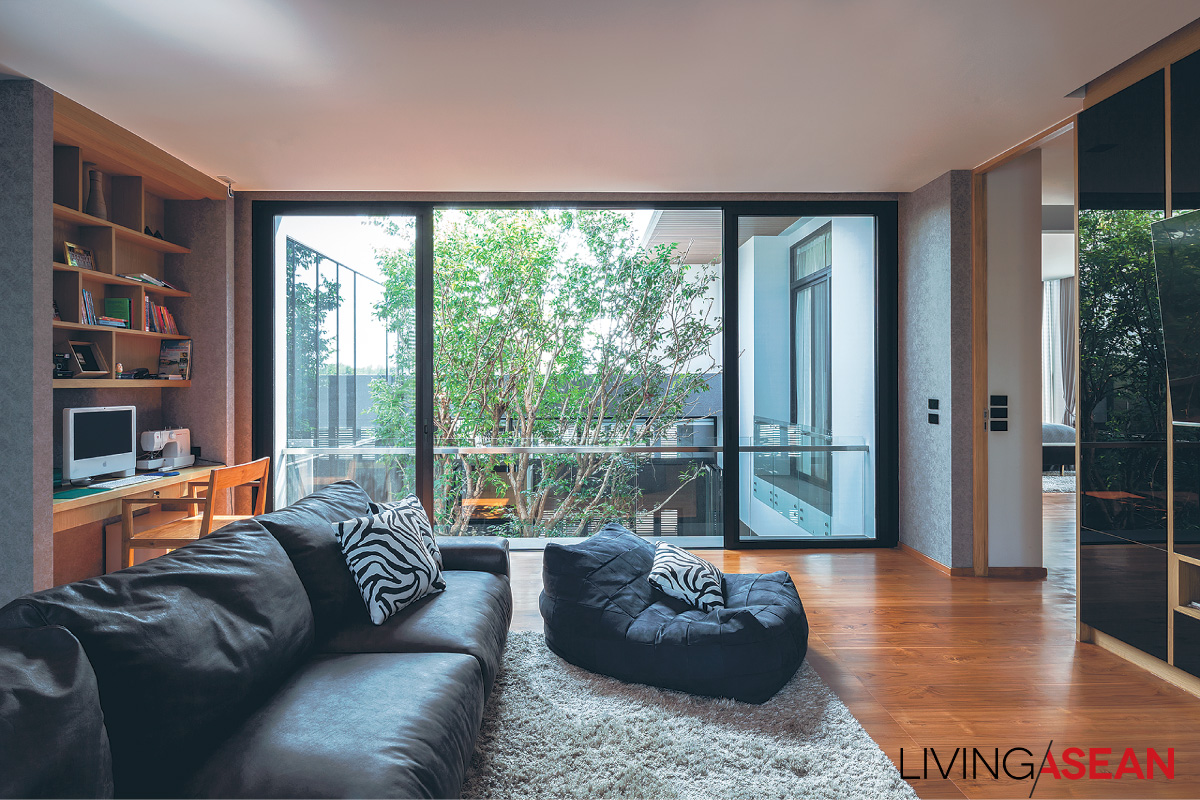


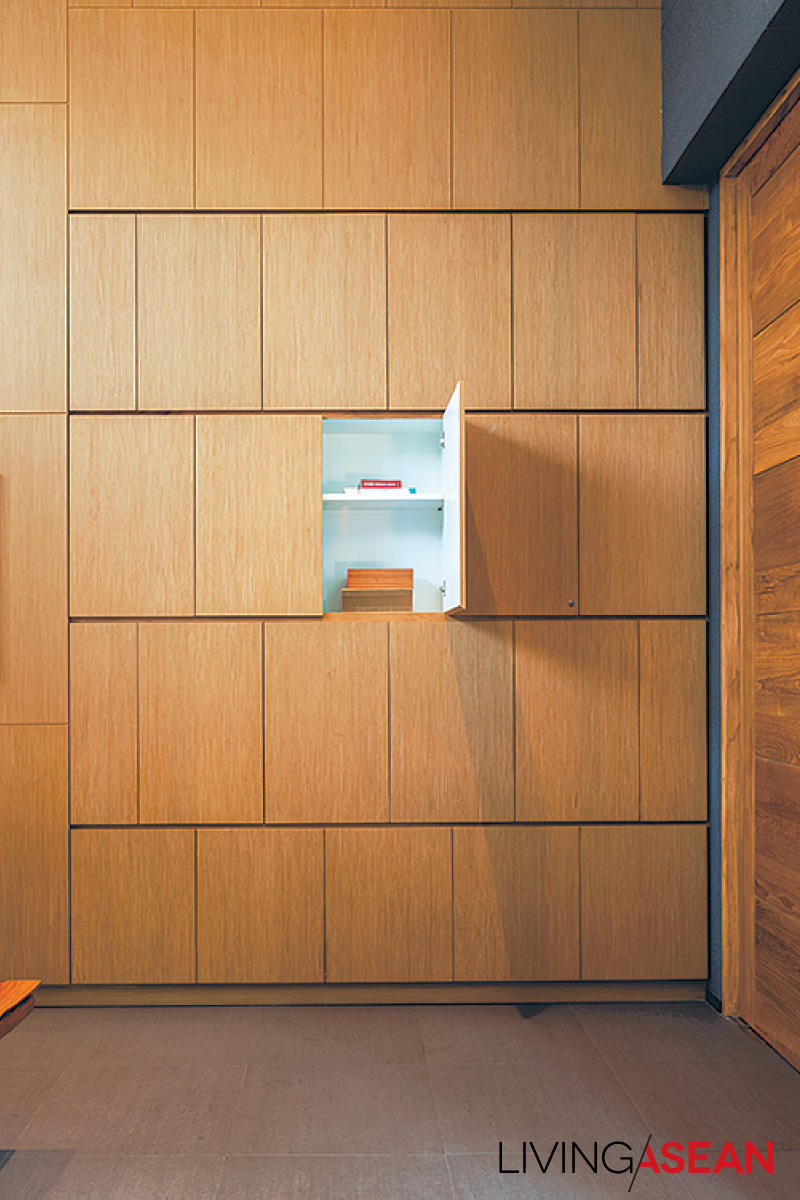
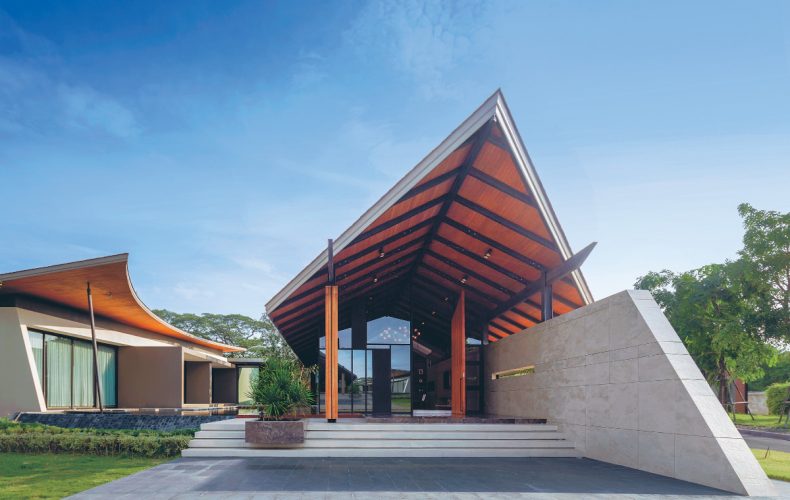 Modern Thai House Adapts to the New Era
Modern Thai House Adapts to the New Era

